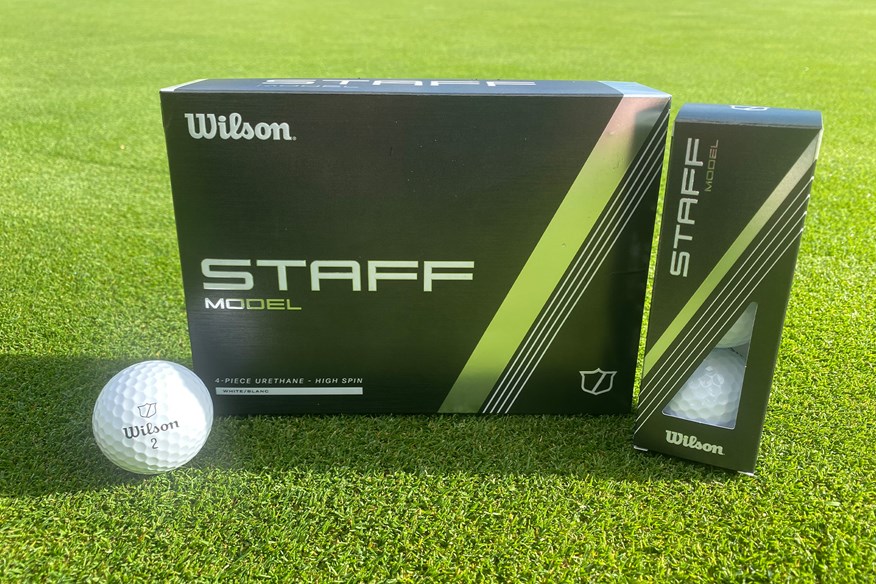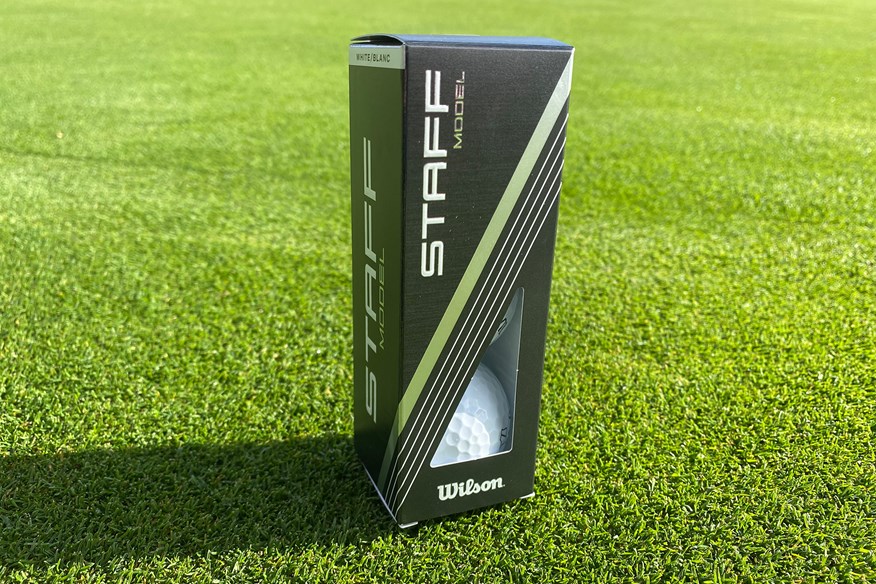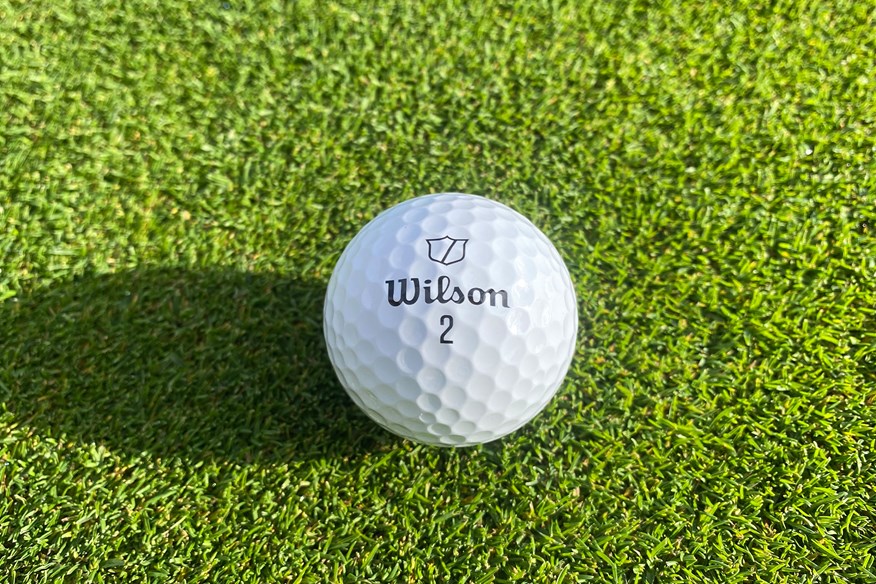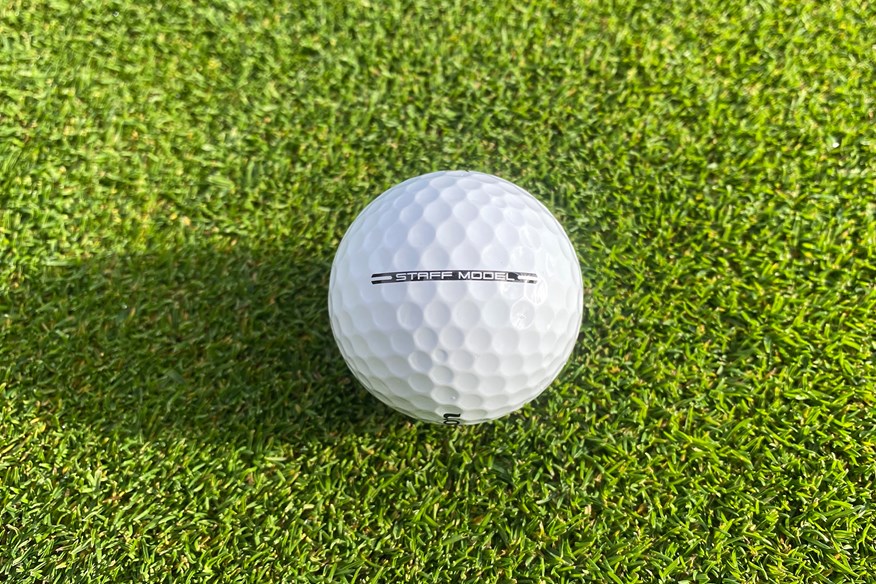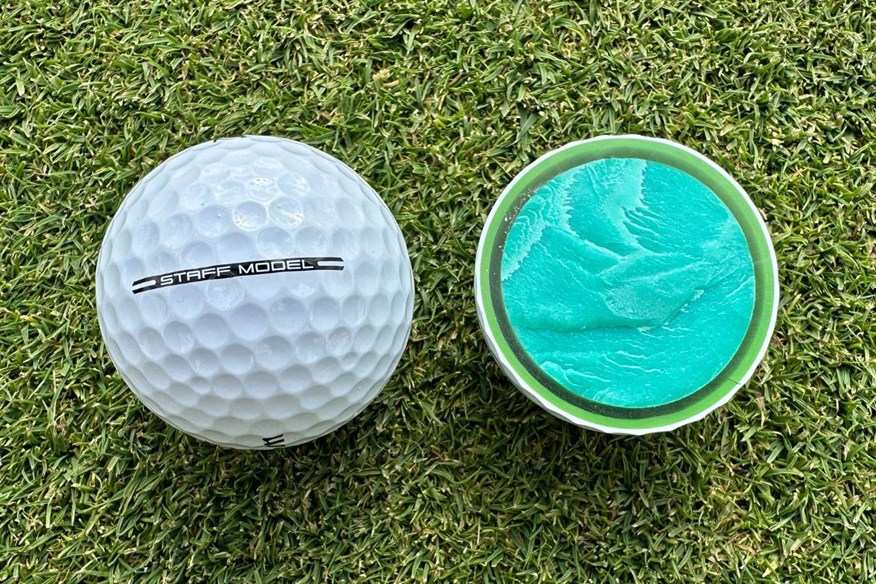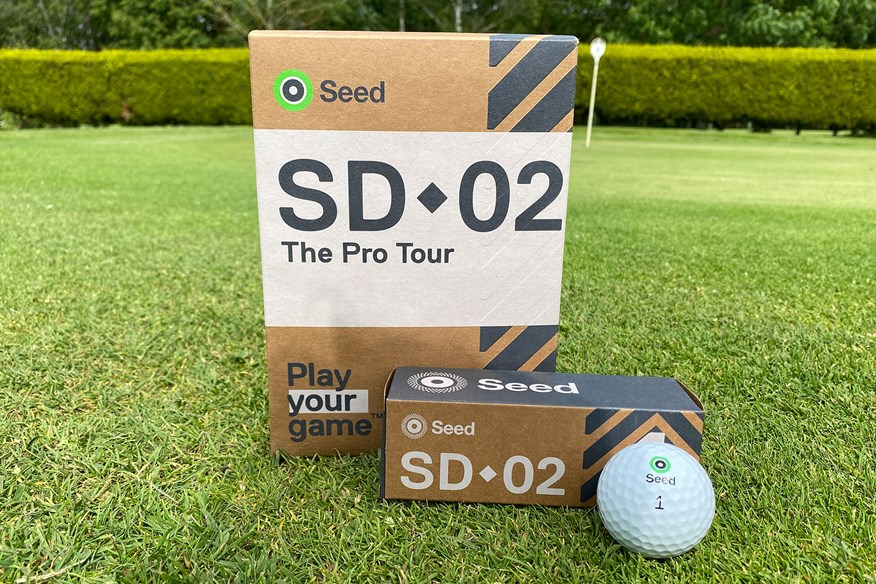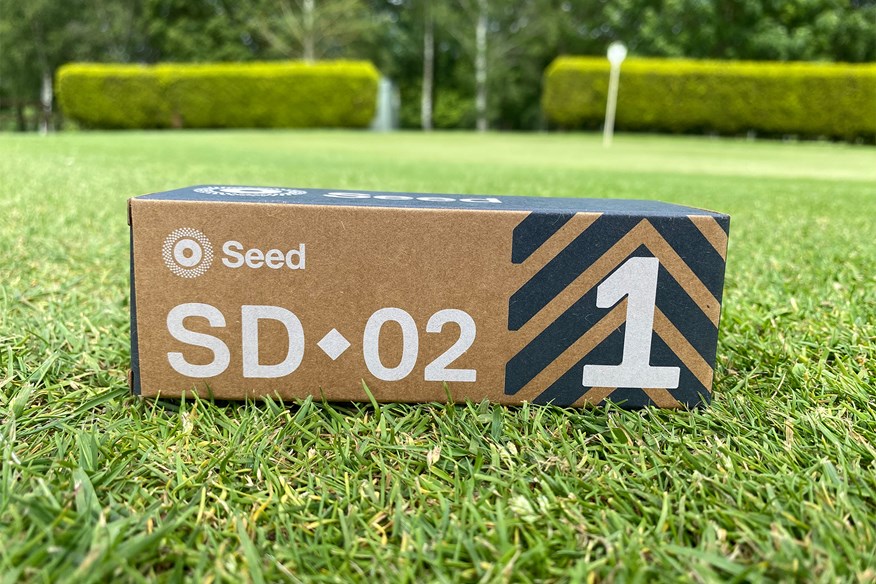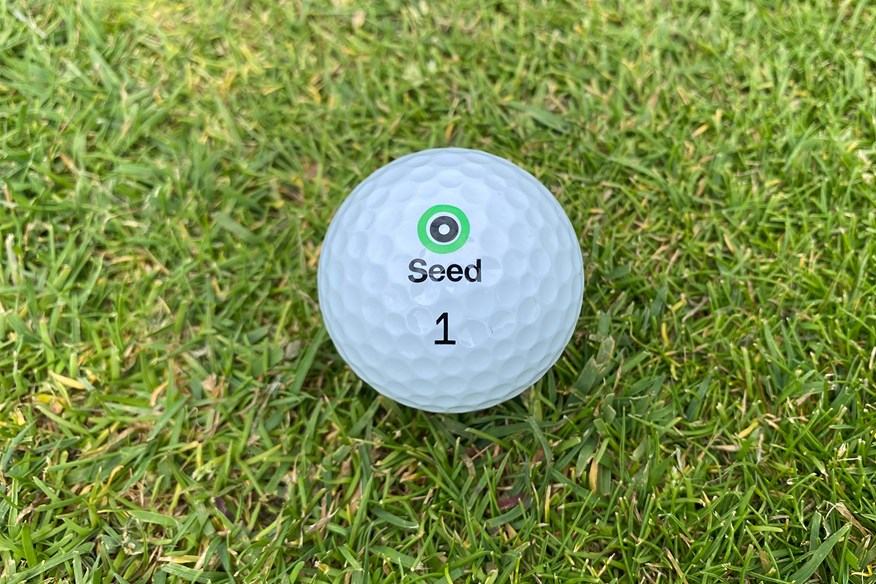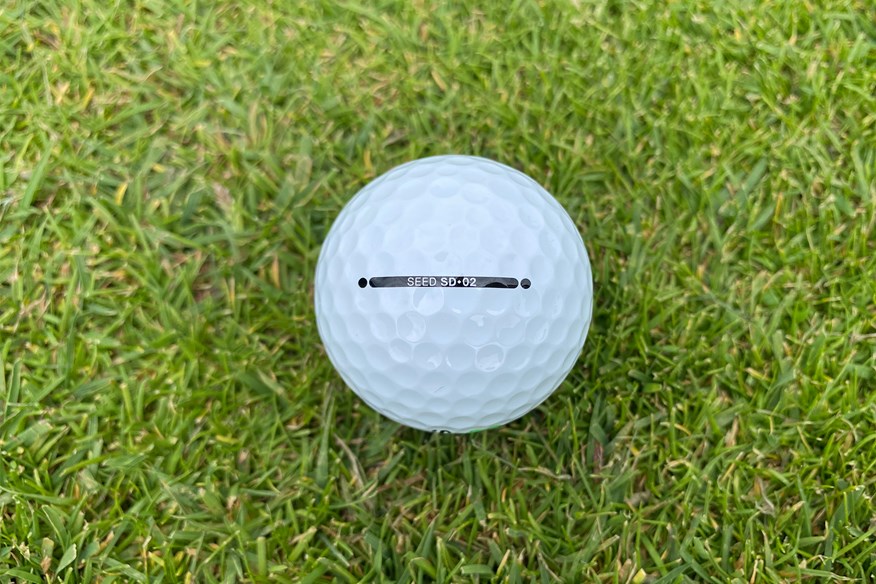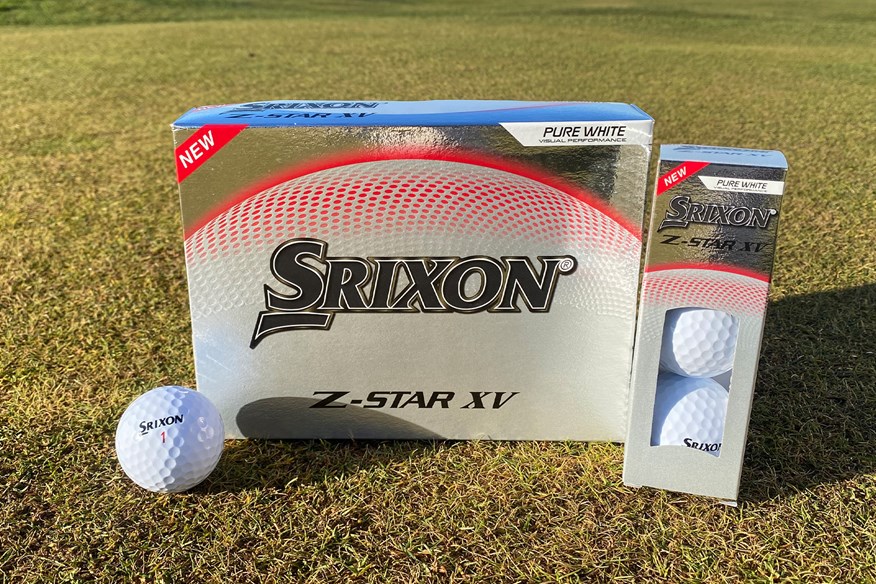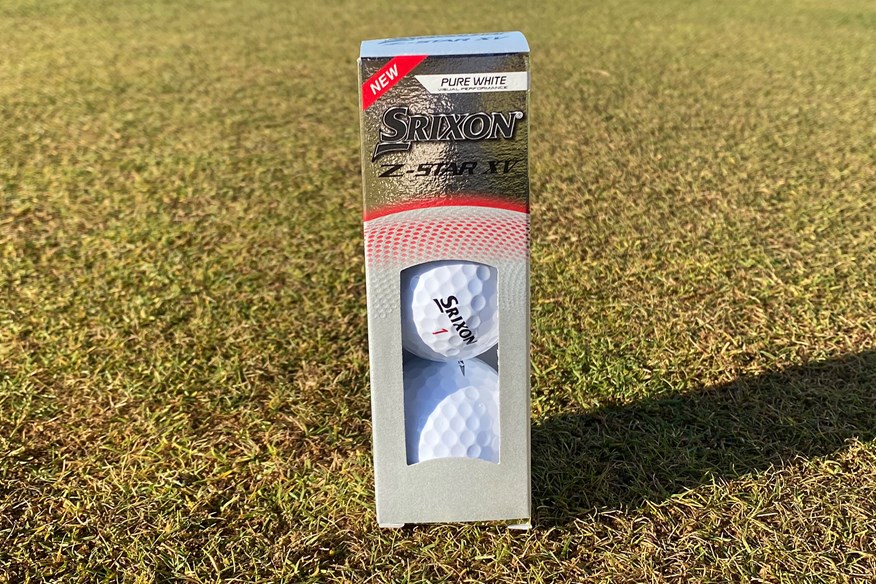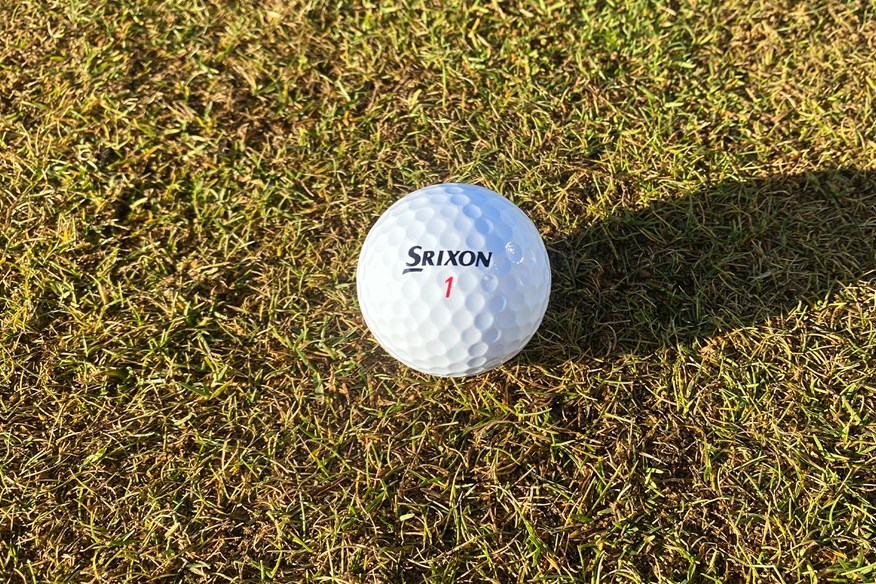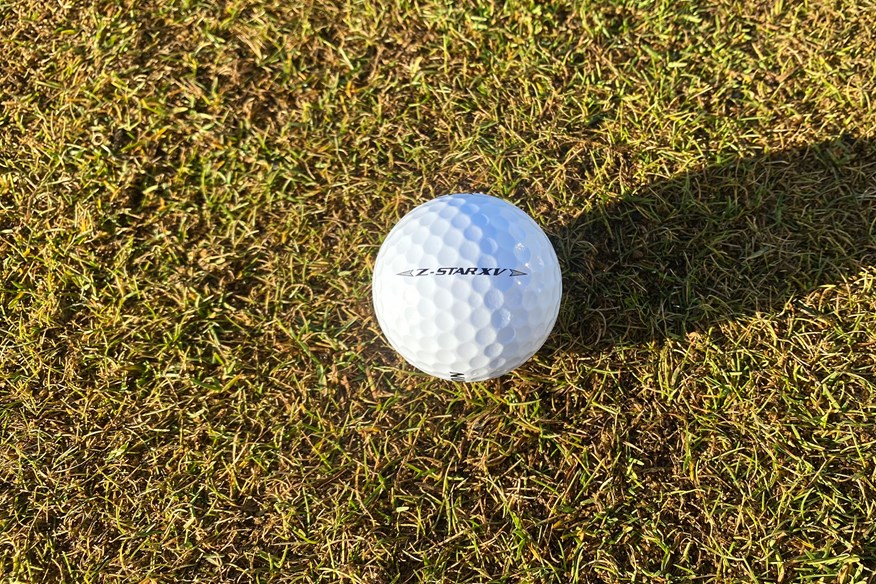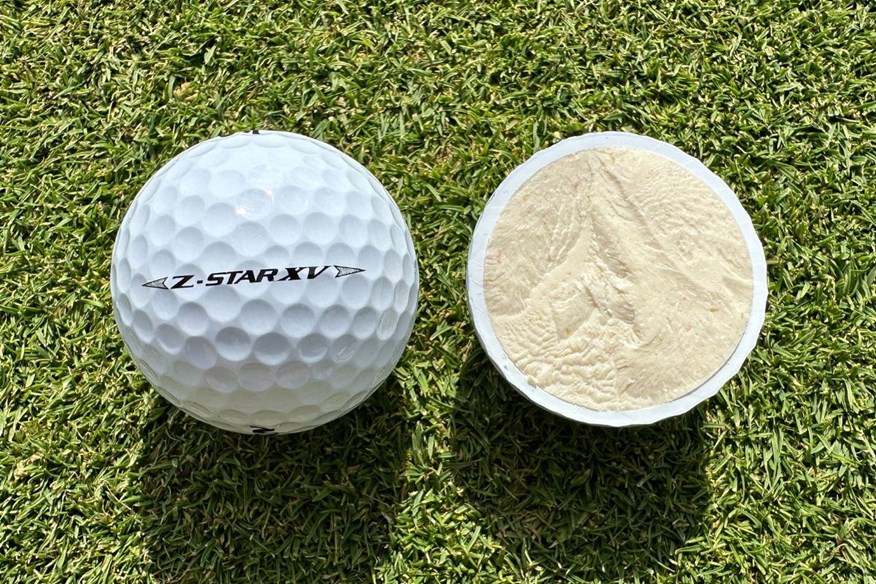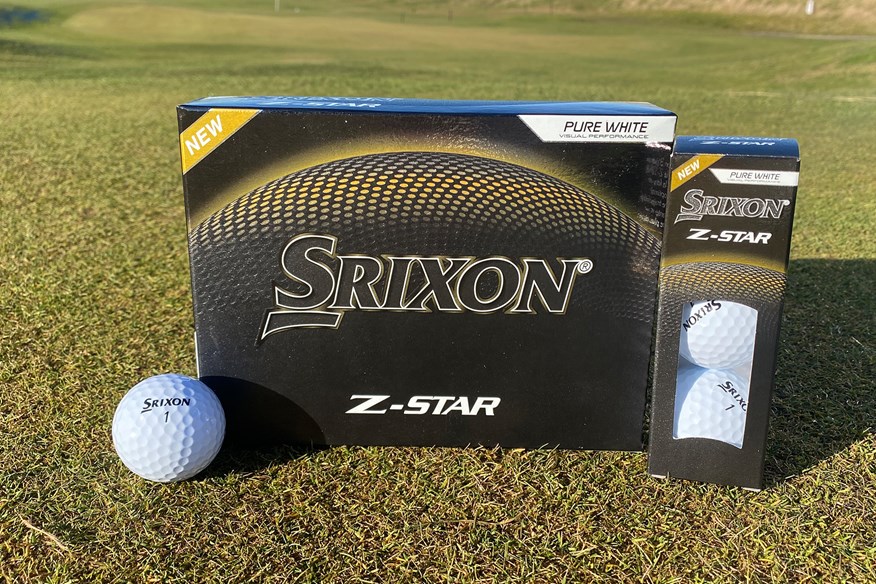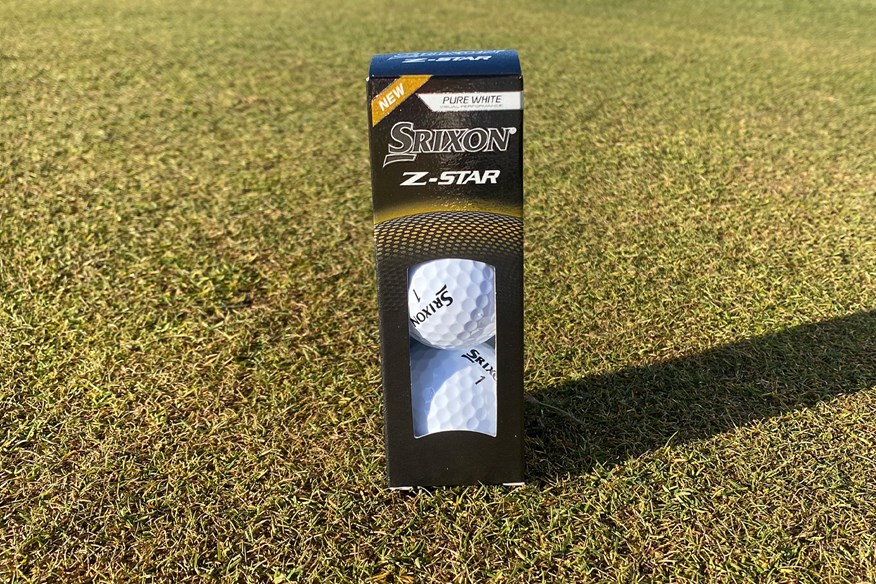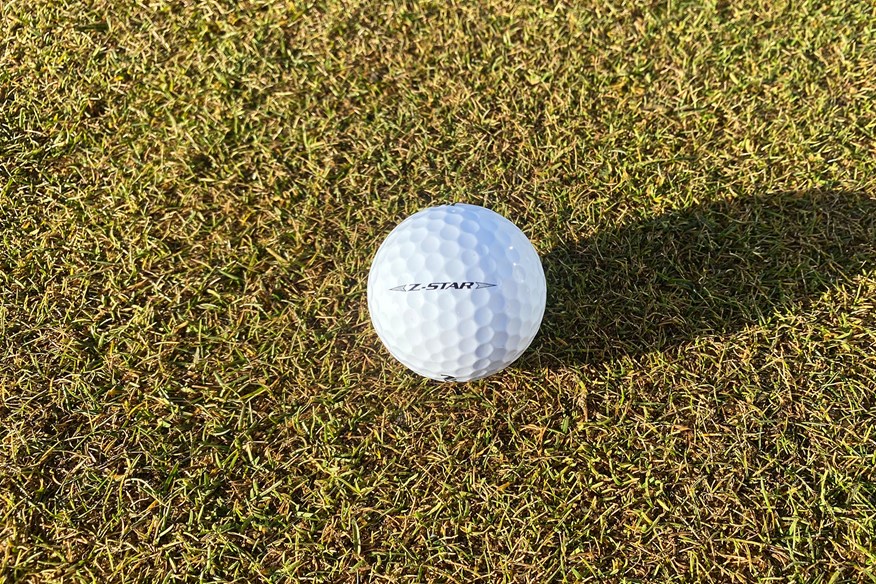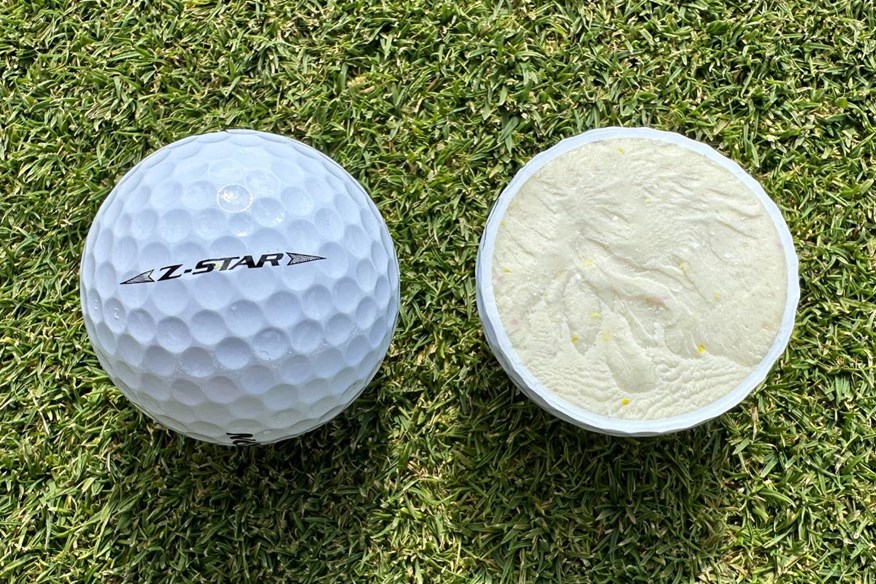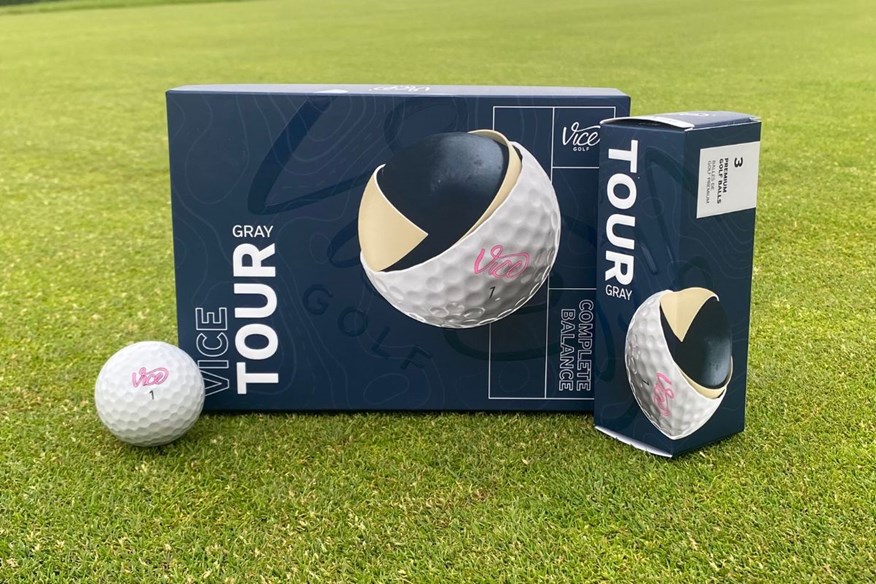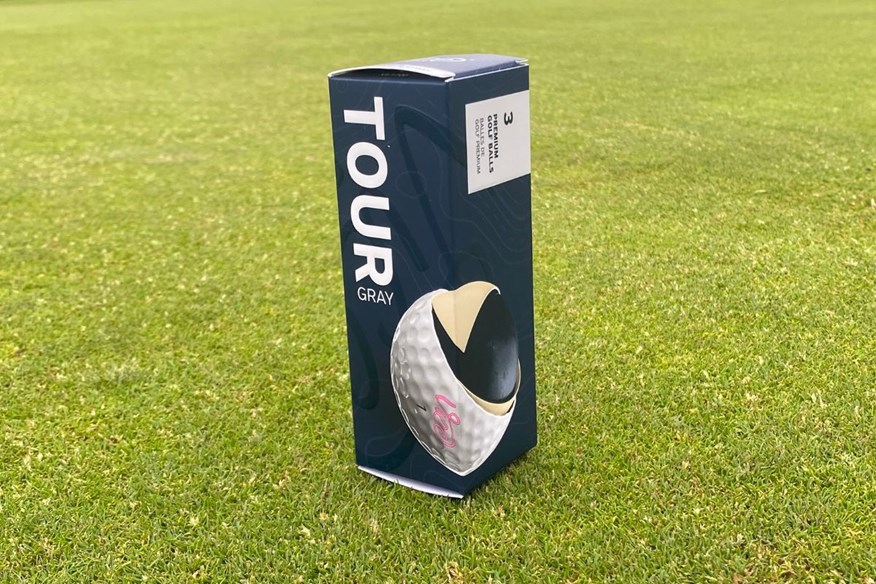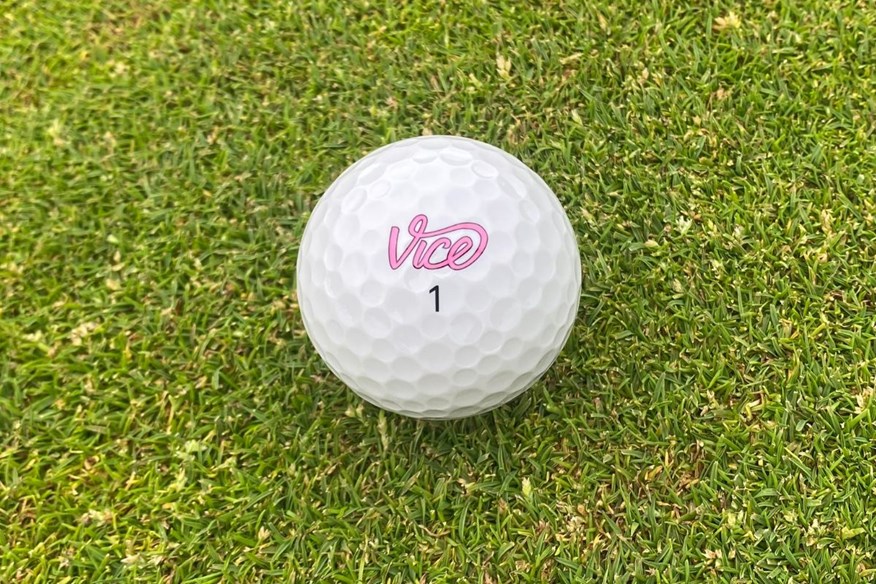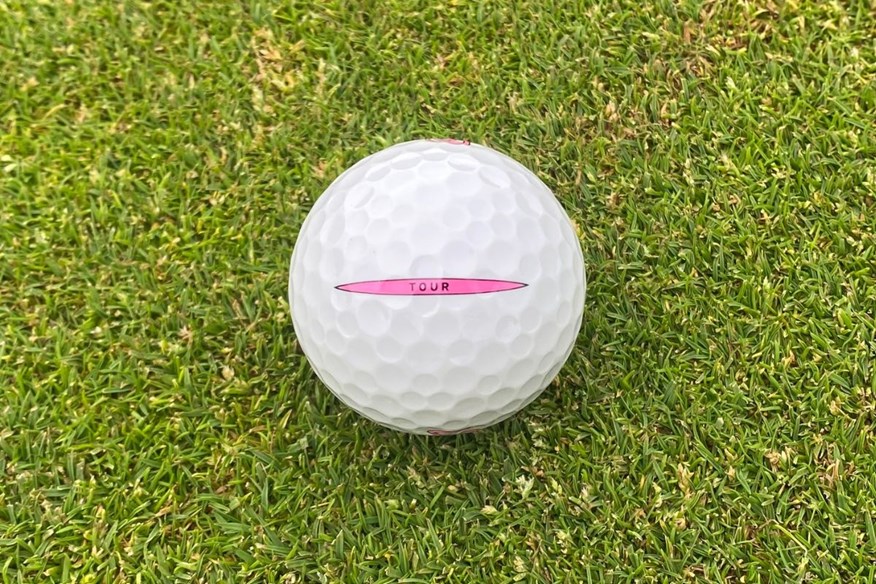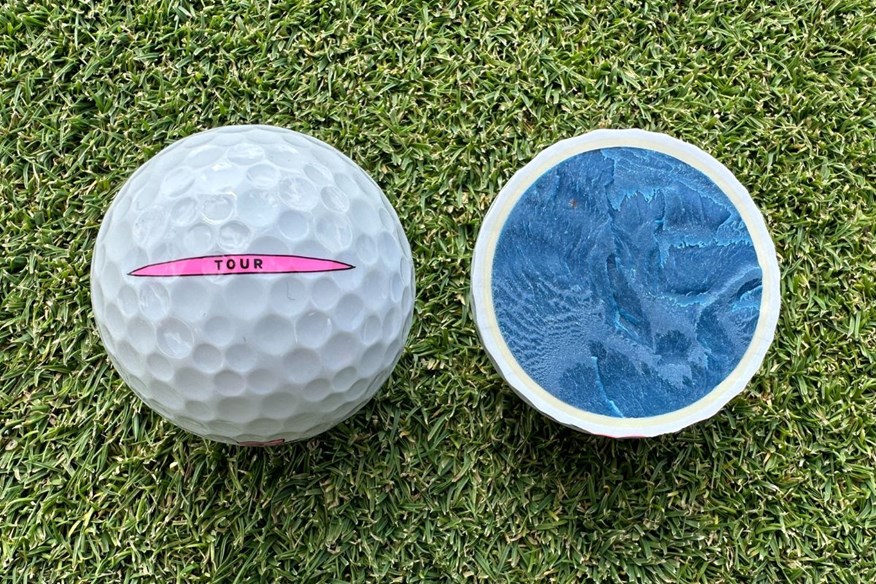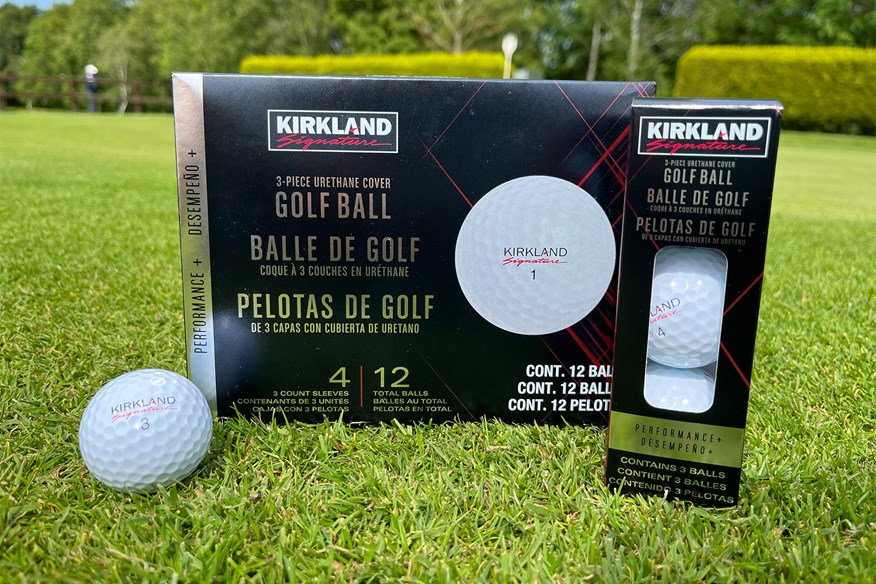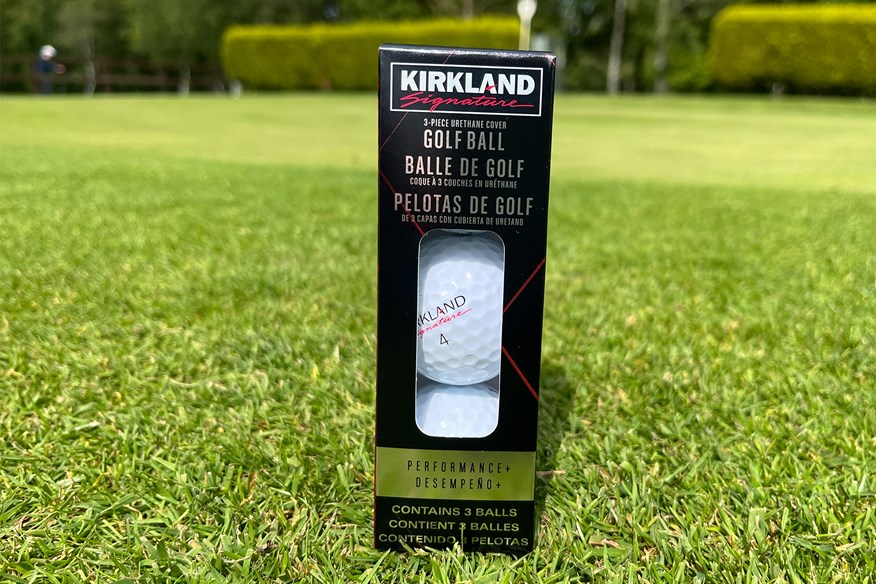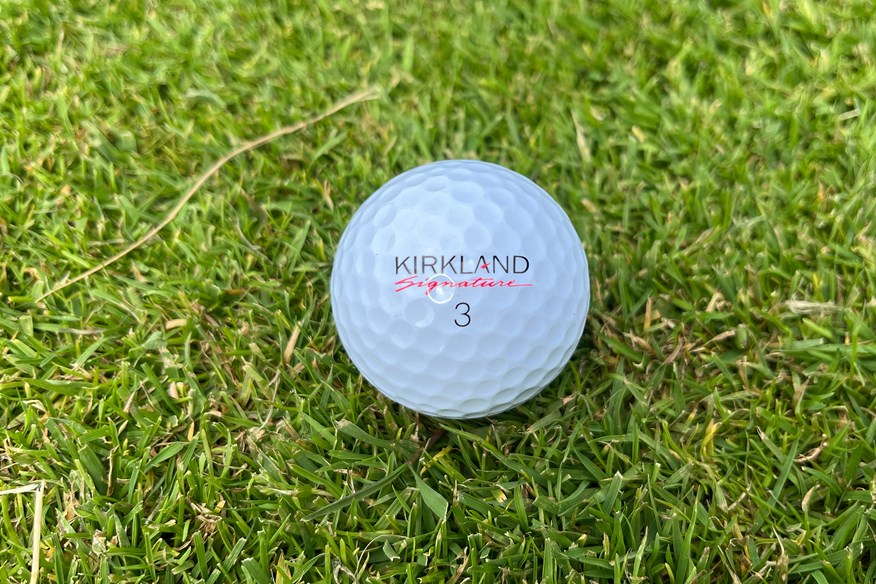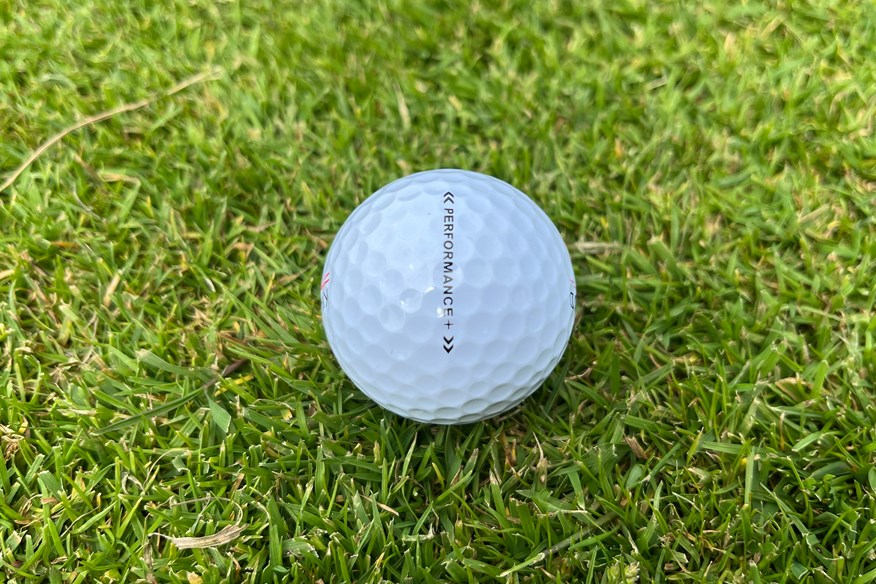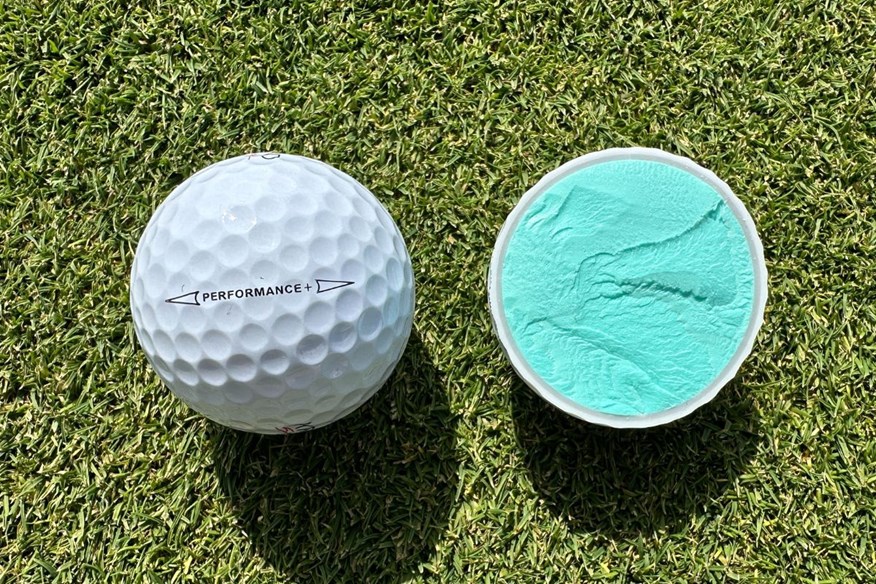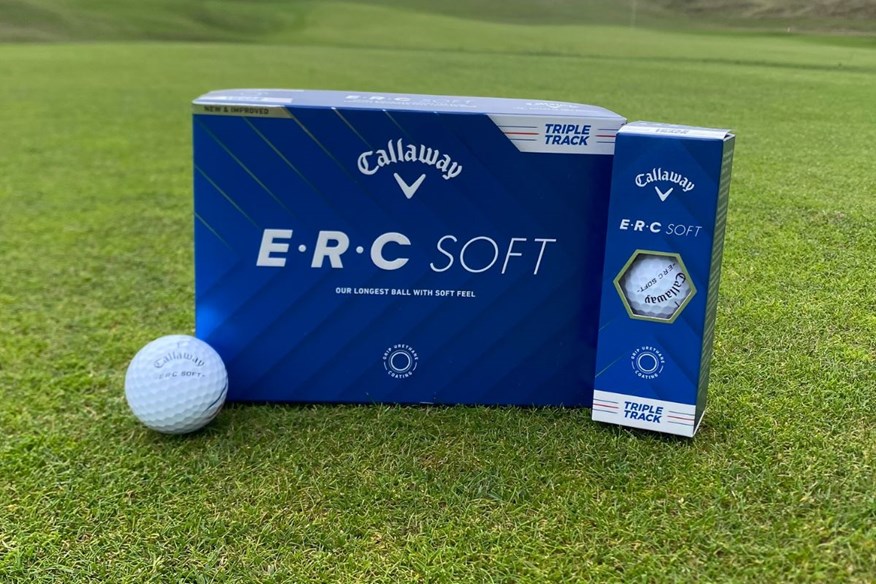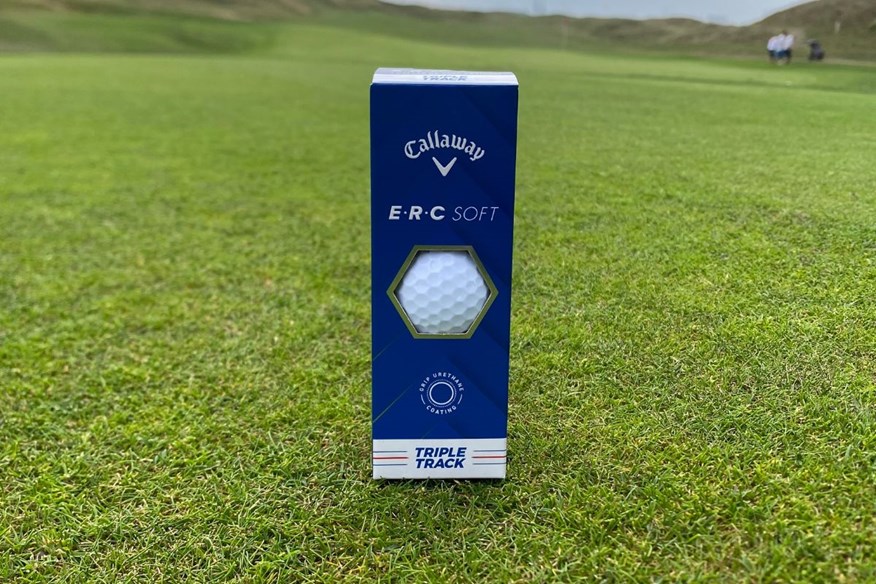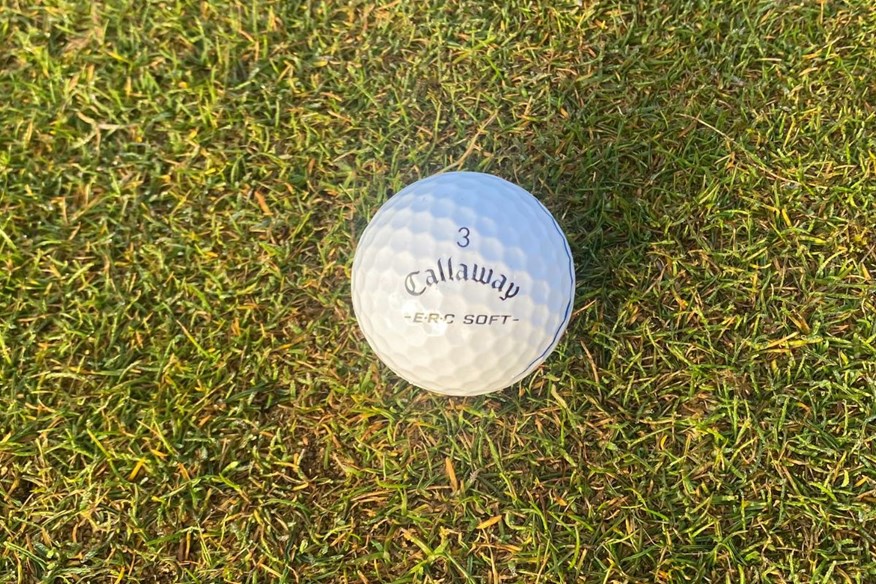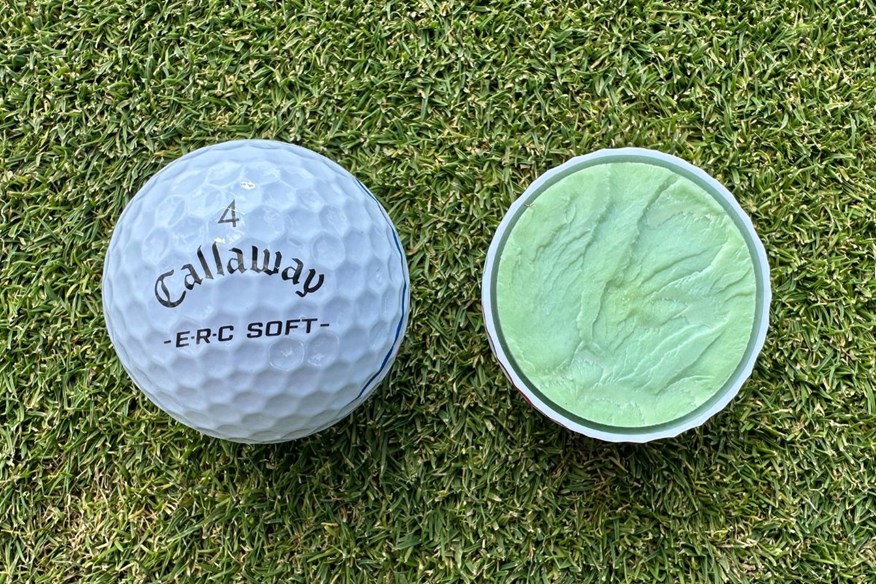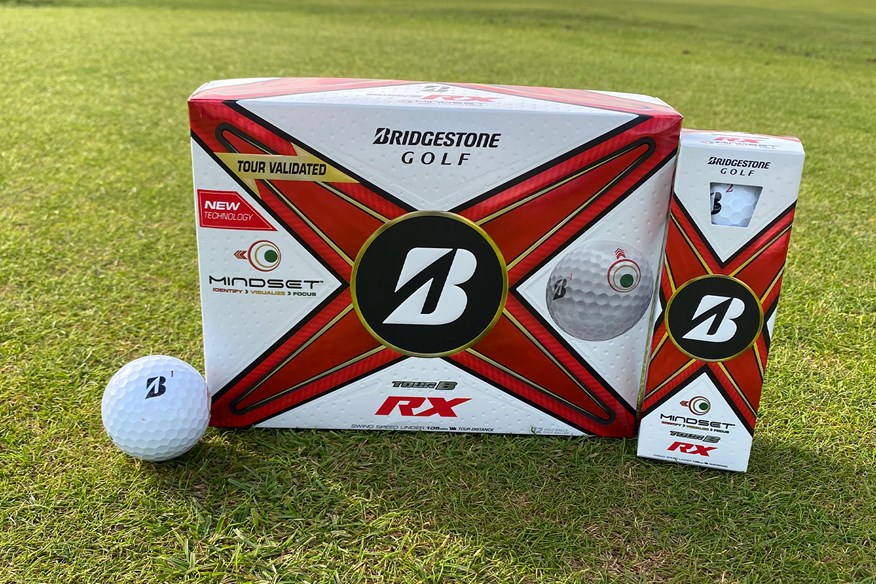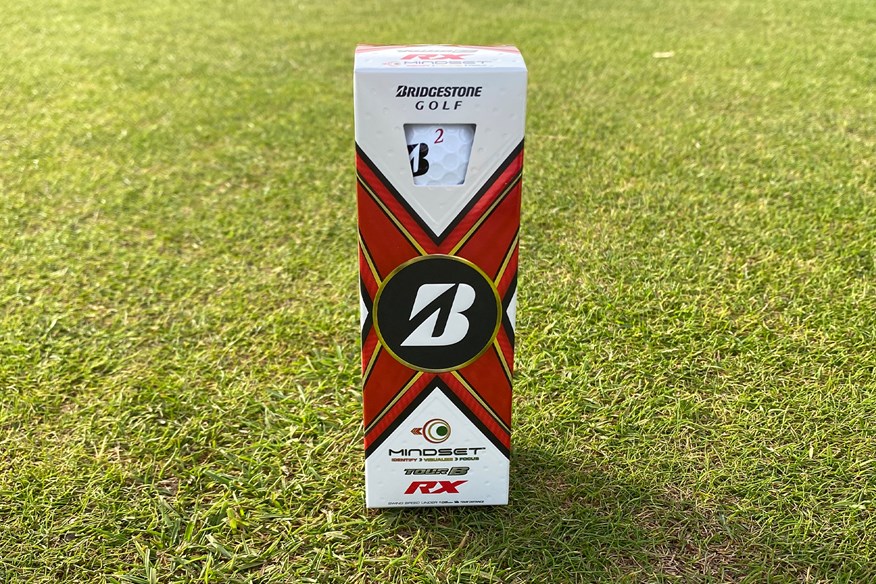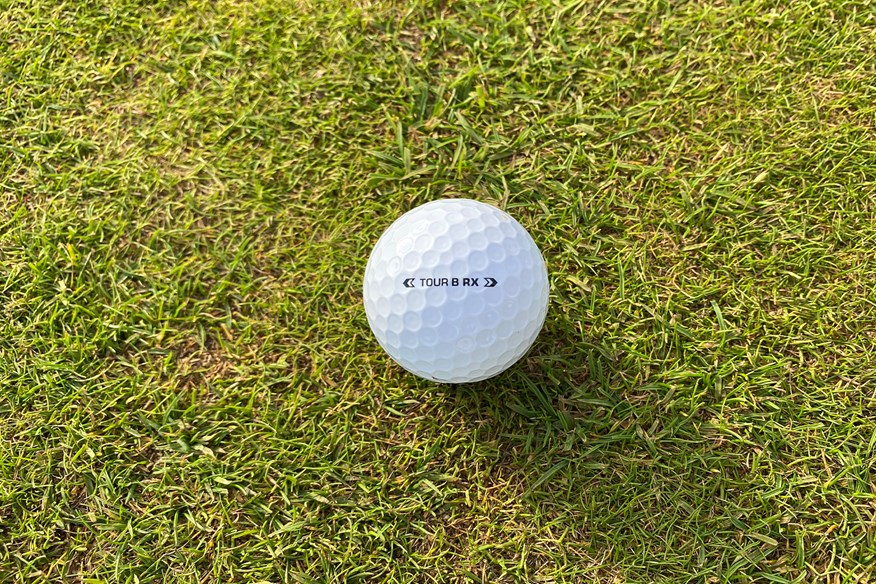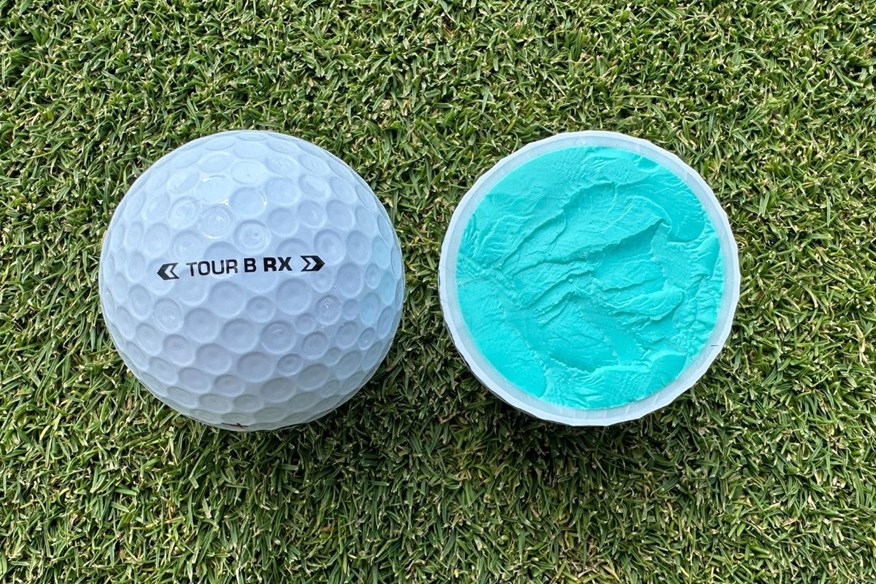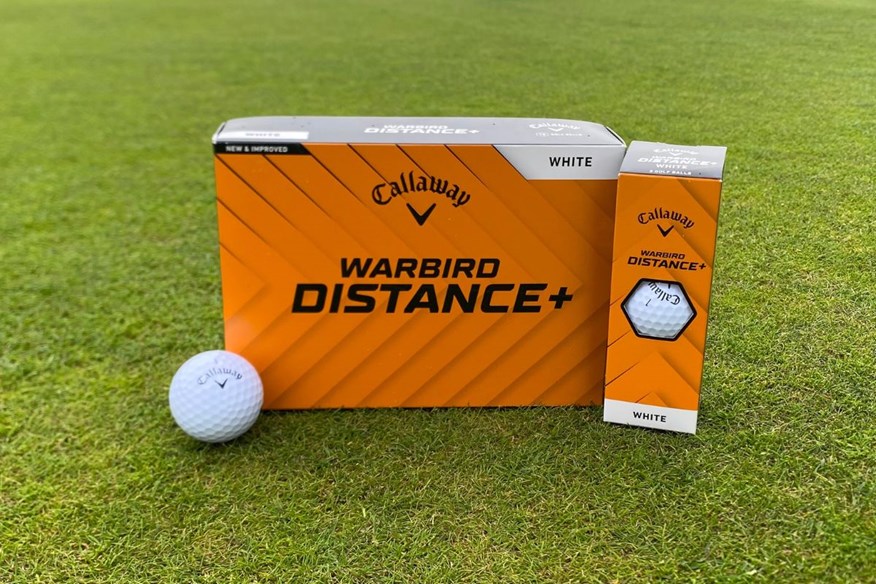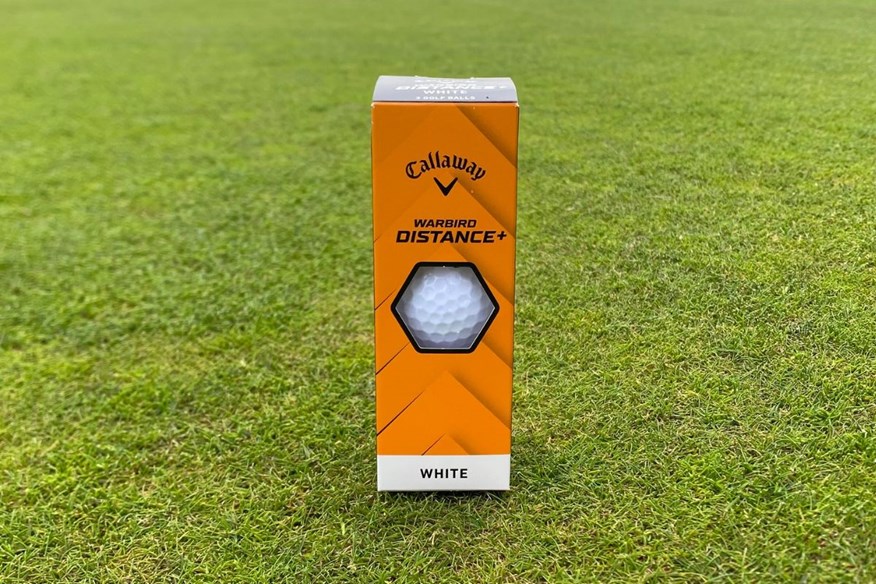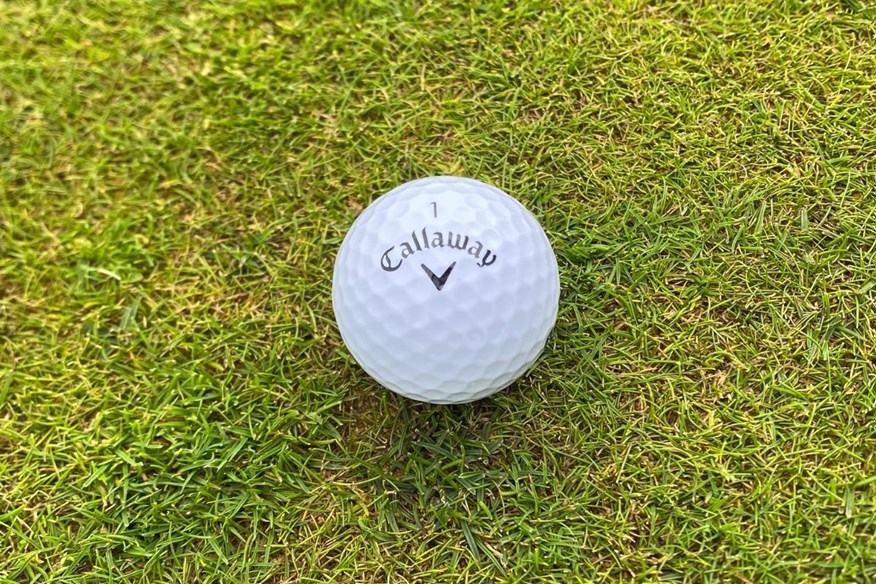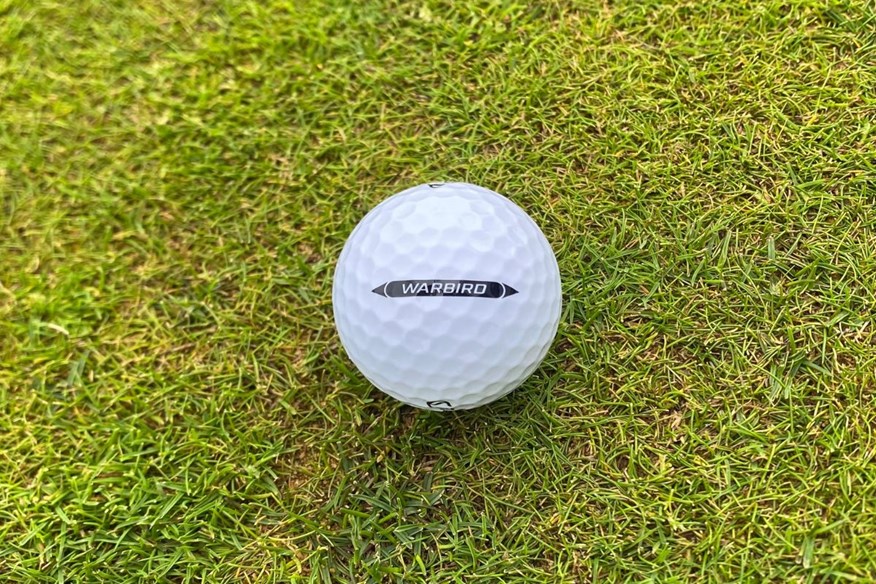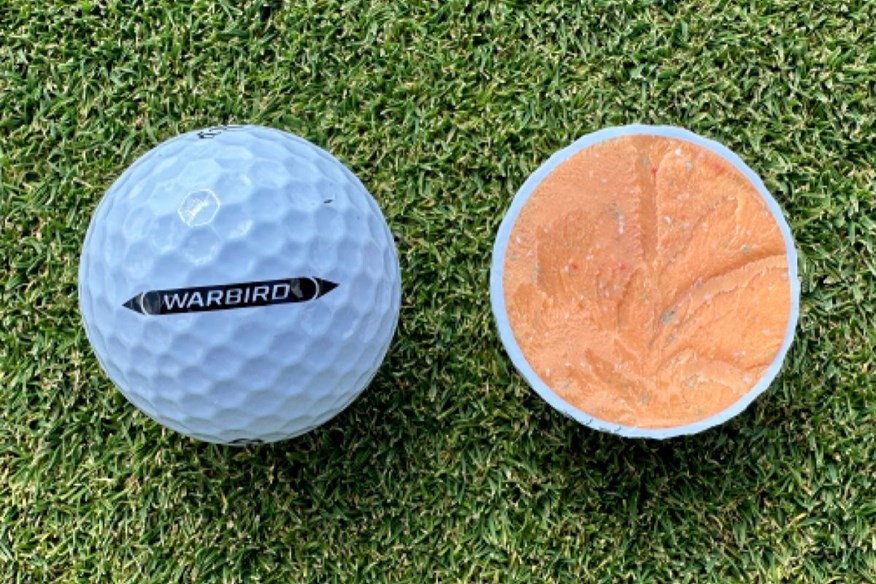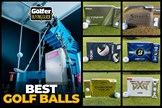Best Golf Balls 2025: 62 models tested on a robot and on-course to find the right model for your game
Last updated:
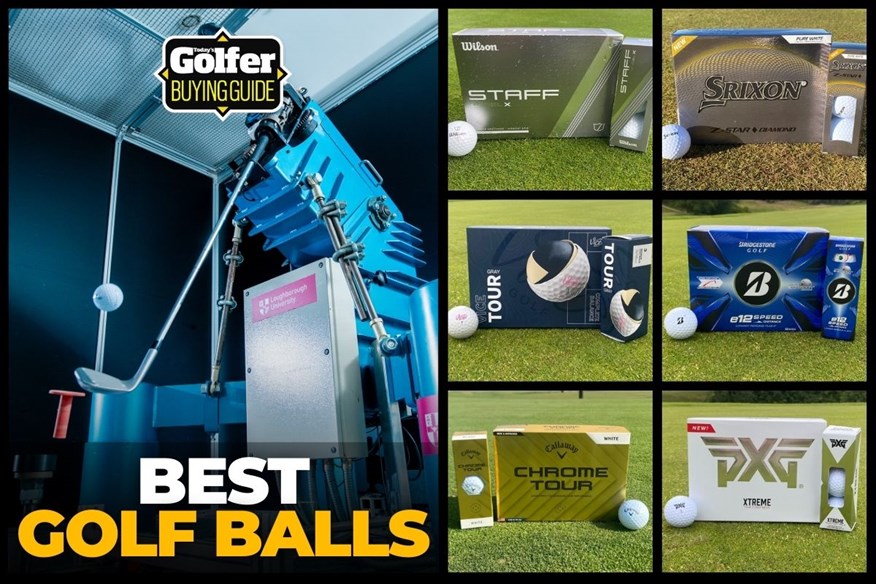
Click here to find out how we conducted our 2025 golf balls test
To help you find the best golf ball in 2025, we’ve carried out our biggest ever robot test, including 62 models from 13 brands. We’ve also tested every model on-course to provide you with as much information to assist you in finding the right ball for your game.
Jump to:
- At a glance
- Best 4 & 5-piece golf balls
- Best 3-piece Tour golf balls
- Best 3-piece club golfer golf balls
- Best 2-piece golf balls
- Best golf balls robot test data
- Buying Guide
- FAQs
If you’re asking yourself, “What are the best golf balls?”, we have the answer for you! This year, we carried out our biggest ever golf ball robot test – 62 models from 13 manufacturers. As well as testing on the robot, every golf ball has been tested on-course to provide you with a personal verdict. Click the links below to see how we completed this year’s robot test and to find out exactly how we test golf equipment.
- 2025 golf ball robot test: 62 golf balls, 2,232 shots, 50,000 data points… find out what’s No.1 for you
- How we test golf equipment at Today’s Golfer
Finding the right golf ball can absolutely revolutionise your game. On the flip side, playing with the completely wrong golf ball can have major negative implications on your scores. There are ways of figuring out what the best golf balls are for you, and you can read more about this in our buying guide.
Golf balls do behave differently for golfers based upon swing, delivery, speed, etc., and other external factors, including wind, temperature, altitude, etc, can all influence the performance of a golf ball, and lead you to play with a specific model.
From the best premium golf balls that offer incredible performance from tee to green, to the best cheap golf balls that won’t make you wince if one ends up in the water, we’ve tested them to help you find the right golf ball for your game.
Best golf balls 2025: At a glance
Best overall: Wilson Staff Model X | View offer
Best 3-piece Tour: Srixon Z-Star Diamond | View offer
Best 3-piece club golfer: Vice Tour | View offer
Best 2-piece: Bridgestone e12 Speed | View offer
Whether you’re after a high-spinning golf ball, a distance golf ball, or a great value model, this guide will help you find it. Scroll down for our top, and click through for full reviews and test data to match your ball to your game.
Before taking a look through the best golf balls of 2025, I’ll leave you one last nugget for your thoughts. If you feel as though your game isn’t quite at the heights you think it should be, changing balls could make a world of difference, and it’s the quickest, easiest, and often cheapest piece of equipment to change.
Best premium golf balls (4 & 5-piece)
The most dominant Tour-level golf ball
Best overall golf ball
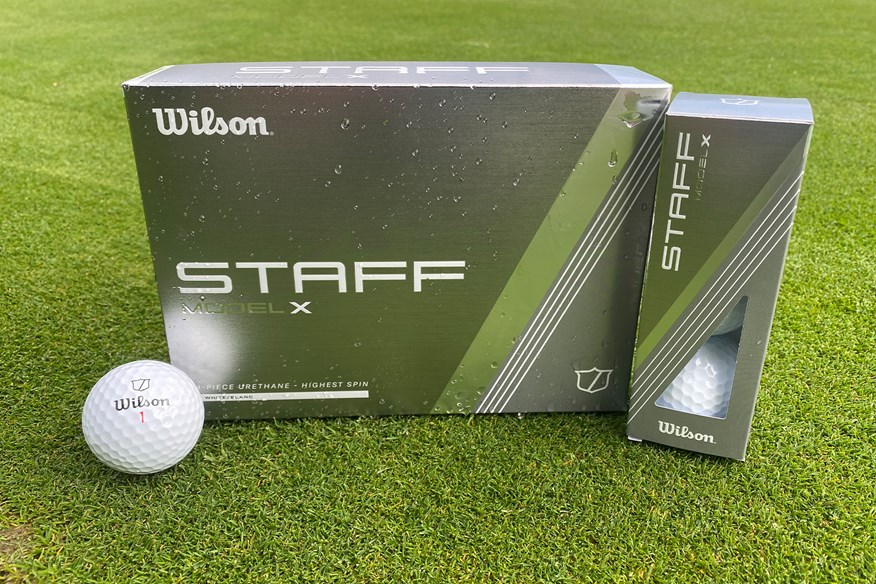

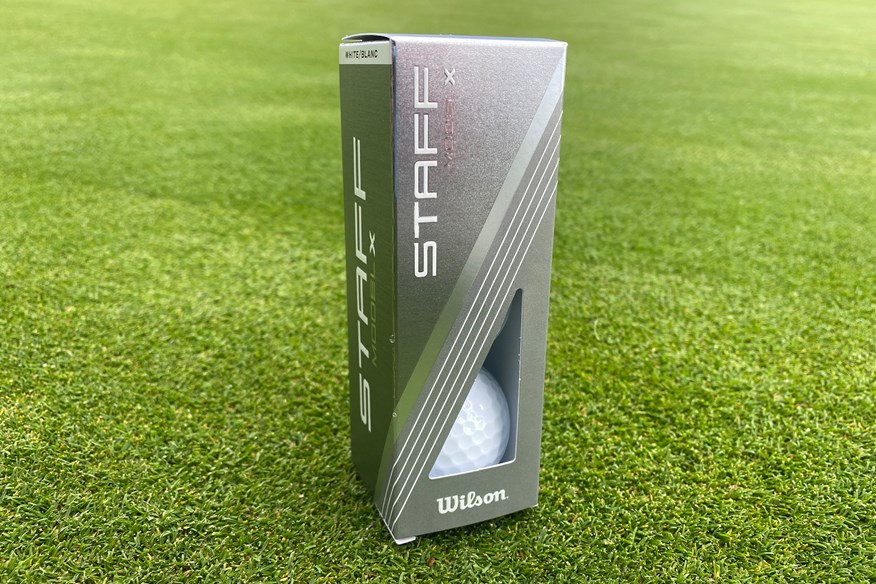
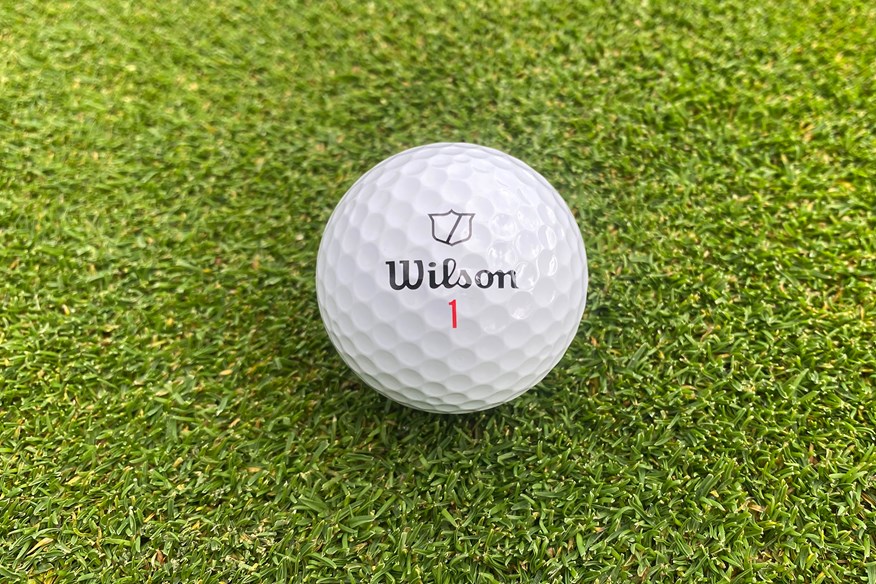
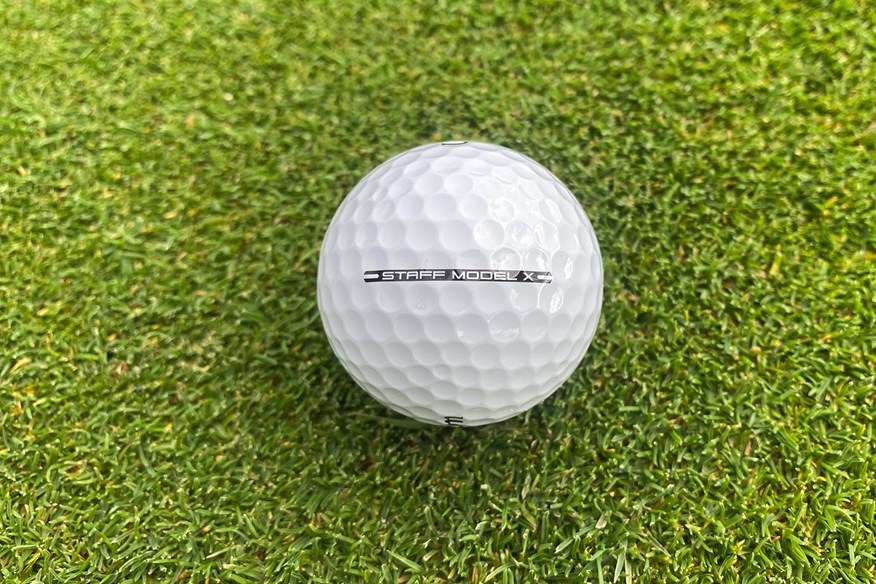

This is arguably the best golf ball in the game. The Wilson Staff Model X is the golf medal winner for tee to green performance at 93mph and 78mph, silver medal winner for tee to green performance at 114mph, silver medal winner for off-the-tee performance, and bronze medal winner for approach play and short game spin.
No other golf ball in our test has received as many awards as the Staff Model X. It's the only golf ball to have received an award in every category.
Staff Model X isn't the longest or fastest golf ball at any of the three driver swing speeds we tested, but it's consistently towards the top of the rankings. It's a higher-spinning golf ball compared to the Staff Model, and that is highlighted with its approach play and short game performance.
This golf ball lands with the steepest descent angle of all 62 tested (45.4°), which helps it easily hit and hold greens. Pair that with the fourth-highest backspin (4,782rpm) and you have a recipe for success.
With the 40-yard pitch shot, Staff Model X generated the third-highest spin (6,091) and again, a steep descent angle (35.5°), meaning this golf ball will stop very quickly when playing around the greens.
On-course verdict
Since being released at the start of 2024, the Staff Model X has been one of my favourite golf balls to play with over the past couple of years. I have a ton of confidence in this model whenever I put it in play. It has become a go-to golf ball for me when I'm not playing my best golf because I know I can trust it to perform well and true.
With its firm feel, it may not appeal to every golfer, but this makes the ball extremely responsive, providing brilliant feedback on all shots. The firm feel is noticeable, compared to softer golf balls, but after a couple of rounds, you practically forget it's a firm golf ball.
Off the tee, the Staff Model X offers slightly more spin than the Staff Model, but that doesn't hinder its overall carry distance. The higher-spinning nature of this model means greenside spin and control is very strong.
The Wilson Staff Model X is the full package. If you're shopping for a premium Tour-level golf ball, this is the No.1 option for golfers of all abilities to consider.
Read our full Wilson Staff Model X golf ball review.
Pros
- Extremely responsive thanks to the firm-feeling
- Performs highly for golfers of all abilities
- Amazing short-game spin and control
Cons
- Higher-spinning than the Staff Model off the tee
| Carry distance (yds) | Driver 114mph - 273.7 | Driver 93mph - 209.8 | Driver 78mph - 162.2 | 7-iron - 156.1 |
| Ball speed (mph) | Driver 114mph - 164.3 | Driver 93mph - 134.6 | Driver 78mph - 113.4 | 7-iron - 109.3 |
| Backspin (rpm) | Driver 114mph - 2,797 | Driver 93mph - 2,792 | Driver 78mph - 2,623 | 7-iron - 4,782 | Pitch - 6,091 |
| Launch angle (°) | Driver 114mph - 11.2 | Driver 93mph - 12.5 | Driver 78mph - 13.8 | 7-iron - 21 | Pitch - 30.4 |
| Descent angle (°) | Driver 114mph - 38.4 | Driver 93mph - 32.6 | Driver 78mph - 28.1 | 7-iron - 45.4 | Pitch - 35.5 |
| Peak height (yds) | Driver 114mph - 33.7 | Driver 93mph - 22.6 | Driver 78mph - 15.9 | 7-iron - 30 | Pitch - 6.7 |
| Compression (psi) | 114 |
- V-Cor advanced performance
- Firm compression core with velocity-boosting additive
- 3SIX2 seamless urethane cover
- 362 dimples
- 4-Piece construction
- Available in white and yellow
Gold medal for tee to green performance at 114mph
The Wilson Staff Model is a very impressive golf ball that unfortunately sits in the shadow of the Staff Model X. That might sound harsh, considering this is the best golf ball for tee to green performance at 114mph in this category.
At the 114mph driver swing speed, this is the third-longest golf ball, and one of only three to exceed 274 yards in the entire test. At a moderate and slower swing speed, the Staff Model is a solid performer, but not as strong as the Staff Model X - third at 93mph and second at 78mph.
There is one area where the Staff Model outshines the Staff Model X, and that's with approach play. Staff Model scooped up the silver medal for approach play with the Staff Model X, one place behind in the bronze medal position.
Approaching and playing around the greens, the Staff Model doesn't generate as much spin as the Staff Model X, but its distance is more consistent. Despite being a lower-spinning golf ball, you might be able to trust the Staff Model more to carry a repeatable distance - even if it is shorter.
At quick swing speeds, this is definitely a good option if you want a golf ball that can do everything, but with the Staff Model X just behind at 114mph for tee to green performance, and given how it's better-performing almost everywhere else, it's hard not to recommend the Staff Model X instead.
That being said, the best way to differentiate is if you want a lower-spinning, softer golf ball, go for the Staff Model.
On-course verdict
The Staff Model is a very strong performer from tee to green. If you don't want a high-spinning, firm-feeling golf ball, this is your best option. This model isn't as impressive as the Staff Model X, but it's pretty darn close.
From tee to green, the Staff Model is super consistent, and it ticks a lot of boxes for the majority of golfers. Regardless of your ability or swing speed, the Staff Model will work for you if you want a golf ball that's easy to control when playing into and around greens and competitive for distance off the tee.
There's a ton to like about the Staff Model, and its softer feel compared to the Staff Model X is sure to please a lot of golfers.
Read our full Wilson Staff Model golf ball review.
Pros
- Incredible distance off the tee
- Amazing short game performance
- Softer feel will be appreciated by many golfers
Cons
- Overall performance is just below that of the Staff Model X
| Carry distance (yds) | Driver 114mph - 274.3 | Driver 93mph - 209.2 | Driver 78mph - 161.7 | 7-iron - 156.3 |
| Ball speed (mph) | Driver 114mph - 164.7 | Driver 93mph - 134 | Driver 78mph - 113.3 | 7-iron - 109 |
| Backspin (rpm) | Driver 114mph - 2,829 | Driver 93mph - 2,703 | Driver 78mph - 2,595 | 7-iron - 4,653 | Pitch - 5,993 |
| Launch angle (°) | Driver 114mph - 11.2 | Driver 93mph - 12.8 | Driver 78mph - 13.9 | 7-iron - 21.1 | Pitch - 30.6 |
| Descent angle (°) | Driver 114mph - 38.6 | Driver 93mph - 32.4 | Driver 78mph - 28 | 7-iron - 45.2 | Pitch - 35.8 |
| Peak height (yds) | Driver 114mph - 34.1 | Driver 93mph - 22.5 | Driver 78mph - 15.8 | 7-iron - 29.8 | Pitch - 6.8 |
| Compression (psi) | 112 |
- V-Cor advanced performance
- Medium compression core with velocity-boosting additive
- 3SIX2 seamless urethane cover
- 362 dimples
- 4-Piece construction
- Available in white and yellow
Golf medal for approach play and short game performance
Best Callaway golf ball


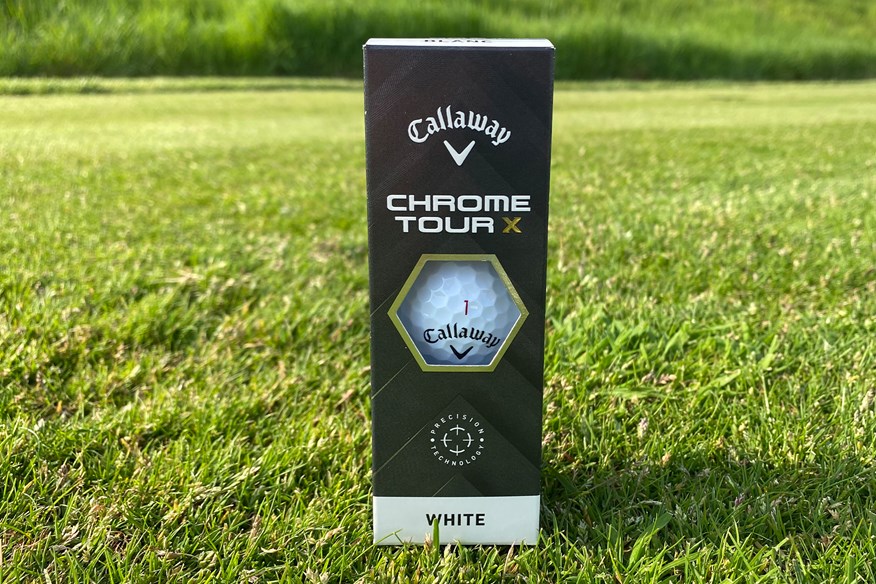

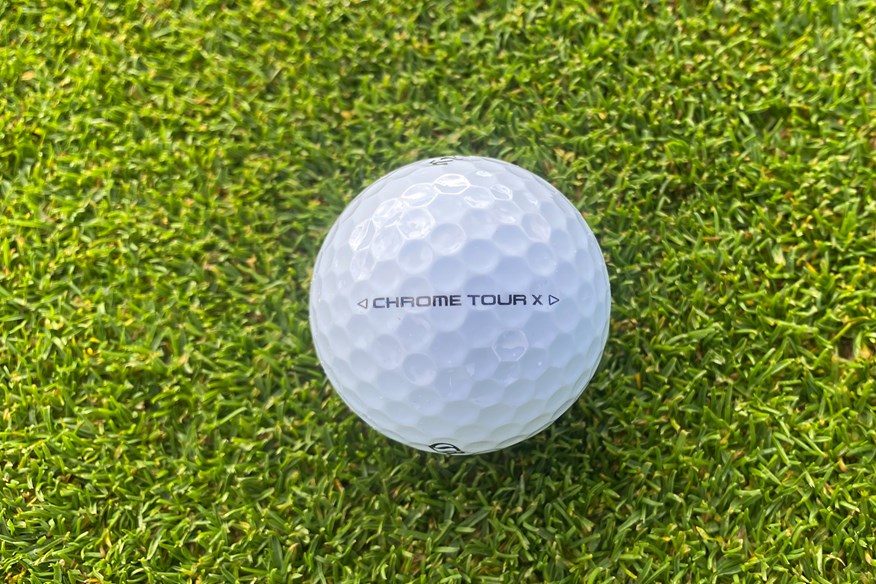
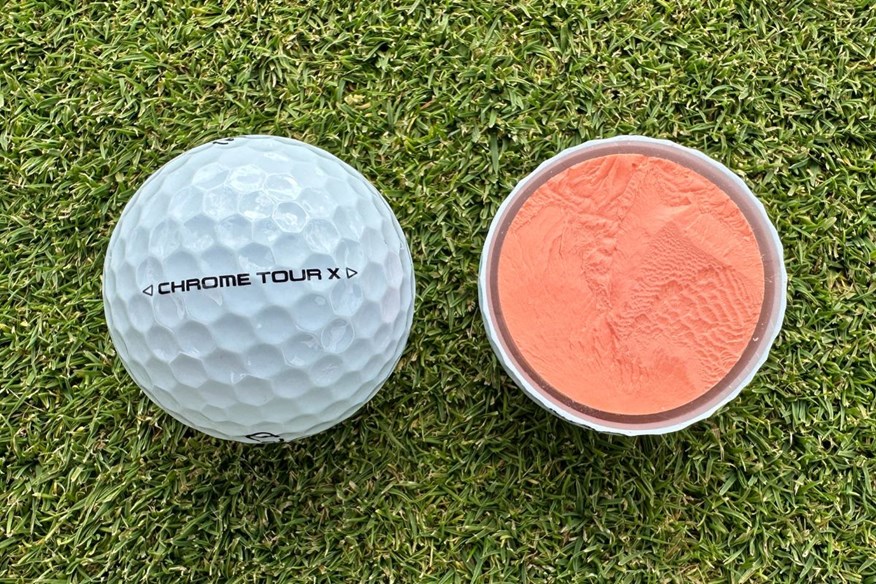
Every golfer wants a golf ball that stops on a dime when playing around the greens because it makes getting up and down so much easier. The golf ball that's going to help you out most around the greens is the Callaway Chrome Tour X.
Of all 62 golf balls tested, the Chrome Tour X is the highest-spinning golf ball around the green. This golf ball was able to generate 6,343rpm, the nearest in this category is the TaylorMade TP5 (6,100), and the second-highest spinning in the test is the Srixon Z-Star Diamond (6,137).
The high-spin nature of the Chrome Tour X does continue through the bag, which isn't an issue when approaching greens. As well as being awarded the gold medal for short game performance, the Chrome Tour X also finished first for approach play.
With the 7-iron shot, this is the highest-spinning golf ball in the test with 5,242rpm. Over 400 revs higher than the second-highest-spinning golf ball in this category (TaylorMade TP5 - 4,823).
The only issue with such a high-spinning golf ball is it hinders distance, so if you prioritise distance over spin, the Chrome Tour is a better option. However, if you want more control and spin, the Chrome Tour X has to be at the top of your list.
Off the tee, you aren't losing much distance with the Chrome Tour X, and at 93mph, this is the second-best four-piece and five-piece golf ball from tee to green.
On-course verdict
Callaway have absolutely smashed it out of the park this year with their four-piece Chrome Tour, Chrome Tour X, and Chrome Tour Triple Diamond golf balls.
Other than having major shelf appeal, the Chrome Tour X is premium for multiple reasons. One of which is that it's widely used by Tour players, and another is that it's a really solid performer from tee to green.
Off the tee, the Chrome Tour X is the highest-spinning Chrome Tour model, which won’t be to everyone’s liking, but for those who struggle to generate height and potentially lose the ball left, then the Chrome Tour X is well worth considering.
The Chrome Tour X spins on command. Playing into and around greens is extremely fun and simple because you can throw this ball at the pin and it will stop.
If you want a golf ball that spins high and is easy to control, there isn't a better option out there.
Read our full Callaway Chrome Tour X golf ball review.
Pros
- Extremely high spin and control when approaching the greens
- Produces brilliant ball speeds and distance
- Played by some of the best players in the world across numerous Tours
Cons
- Callaway's highest-spinning premium golf ball might not be what every golfer needs
| Carry distance (yds) | Driver 114mph - 269.7 | Driver 93mph - 208.9 | Driver 78mph - 160.8 | 7-iron - 156.1 |
| Ball speed (mph) | Driver 114mph - 163.6 | Driver 93mph - 134.3 | Driver 78mph - 113 | 7-iron - 108.7 |
| Backspin (rpm) | Driver 114mph - 2,997 | Driver 93mph - 3,048 | Driver 78mph - 2,921 | 7-iron - 5,242 | Pitch - 6,343 |
| Launch angle (°) | Driver 114mph - 10.8 | Driver 93mph - 12.5 | Driver 78mph - 13.5 | 7-iron - 20.3 | Pitch - 29.5 |
| Descent angle (°) | Driver 114mph - 38.7 | Driver 93mph - 34 | Driver 78mph - 28.8 | 7-iron - 45.3 | Pitch - 34.4 |
| Peak height (yds) | Driver 114mph - 33.3 | Driver 93mph - 23.4 | Driver 78mph - 16 | 7-iron - 29.1 | Pitch - 6.3 |
| Compression (psi) | 111 |
- Hyper fast soft core
- Seamless Tour aero
- High-performance Tour urethane soft cover
- 332 dimples
- 4-Piece construction
- Available in white and yellow
- Alternative models include Triple Track, 360° Triple Track, TruTrack, and Limited Edition patterns
Bronze medal for tee to green performance at 78mph
The Seed SD-02 is the best-performing DTC golf ball off the tee. The SD-02 is designed to compete with the likes of the Titleist Pro V1x and TaylorMade TP5x, and that's exactly where it pitches based on the results from our test.
You can even argue it's a better-performing golf ball. At 78mph, the SD-02 is the third-best golf ball from tee to green, and at 93mph and 114mph, it misses out by one, finishing just behind the Pro V1x at 114mph and with the same score as the Staff Model at 93mph.
The SD-02 is such a solid golf ball from tee to green. At all three driver speeds, and with the approach shot, there isn't one area where it doesn't perform well.
Seed says this is a low-launching and low-flying golf ball, but if anything, it is above the average for launch angle and peak height in this category of golf balls.
This is supposedly Seed's highest-spinning golf ball around the green, but it's not as high-spinning as the SD-01. The SD-02 is also not as high-spinning in approach play as other Seed golf balls, and it's the lowest-spinning golf ball within this category (4,397rpm).
However, thanks to the steep descent angle, you can expect the SD-02 to hit and hold greens and come to a quick stop in the short game.
The Seed SD-02 is a solid golf ball from tee to green at varying swing speeds. It's not as high-spinning as other golf balls in this category or other Seed golf balls, but considering this is said to challenge the Pro V1x and TP5x, it does do that, at a cheaper price.
On-course verdict
I genuinely believe that any golfer could play with this golf ball and make it work for them. The SD-02 does it all. It’s long off the tee, it spins on approach shots, and it rolls perfectly on the putting surface.
The ball flight is consistent above all else, so I feel like I can trust that this golf ball will behave off the tee and help me find the fairway. The other plus off the tee is that it’s long, which no golfer can complain about.
The SD-02 feels slightly softer than other X-model golf balls, which will please most golfers because typically X-models tend to be firmer-feeling. I’m a fan of a firmer golf ball, and the SD-02 still feels really good to me.
Throughout the bag, the response you get from the SD-02 is very strong. If you hit the ball well, you’ll know, and if you hit the ball badly (sadly), you’ll know.
Read our full Seed SD-02 golf ball review.
Pros
- Amazing versatile golf ball that works for a wide range of golfers
- Good distance off the tee
- Incredible value for money
Cons
- A lower ball flight compared to other X-model golf balls
| Carry distance (yds) | Driver 114mph - 272.8 | Driver 93mph - 209.7 | Driver 78mph - 162.4 | 7-iron - 158.7 |
| Ball speed (mph) | Driver 114mph - 163.8 | Driver 93mph - 134.2 | Driver 78mph - 113.4 | 7-iron - 109.5 |
| Backspin (rpm) | Driver 114mph - 2,688 | Driver 93mph - 2,718 | Driver 78mph - 2,484 | 7-iron - 4,397 | Pitch - 5,845 |
| Launch angle (°) | Driver 114mph - 11 | Driver 93mph - 12.8 | Driver 78mph - 14 | 7-iron - 21.3 | Pitch - 30.9 |
| Descent angle (°) | Driver 114mph - 37 | Driver 93mph - 32.5 | Driver 78mph - 27.8 | 7-iron - 45 | Pitch - 36.4 |
| Peak height (yds) | Driver 114mph - 32.1 | Driver 93mph - 22.7 | Driver 78mph - 15.9 | 7-iron - 30 | Pitch - 7 |
| Compression (psi) | 104 |
- High energy rubber core
- Ultra thin DuPont Surlyn mantle
- DuPont HPF inner cover
- Soft cast urethane cover
- 336 dimples
- 4-Piece construction
- Available in white only
Gold medal for driver performance
Longest golf ball
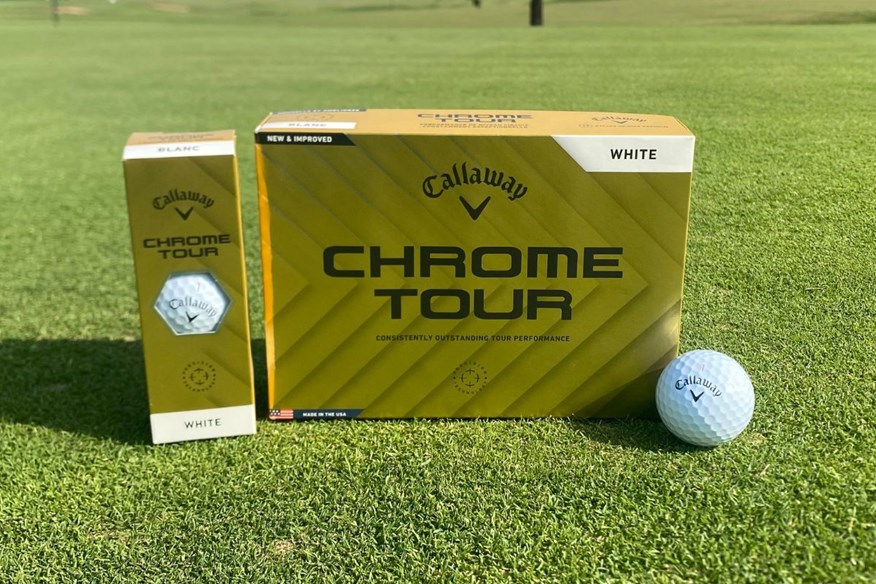

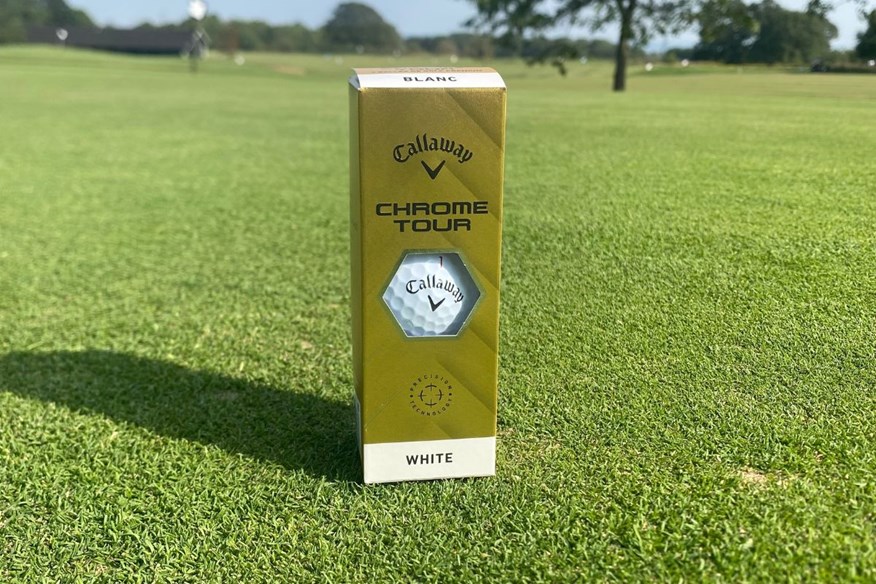
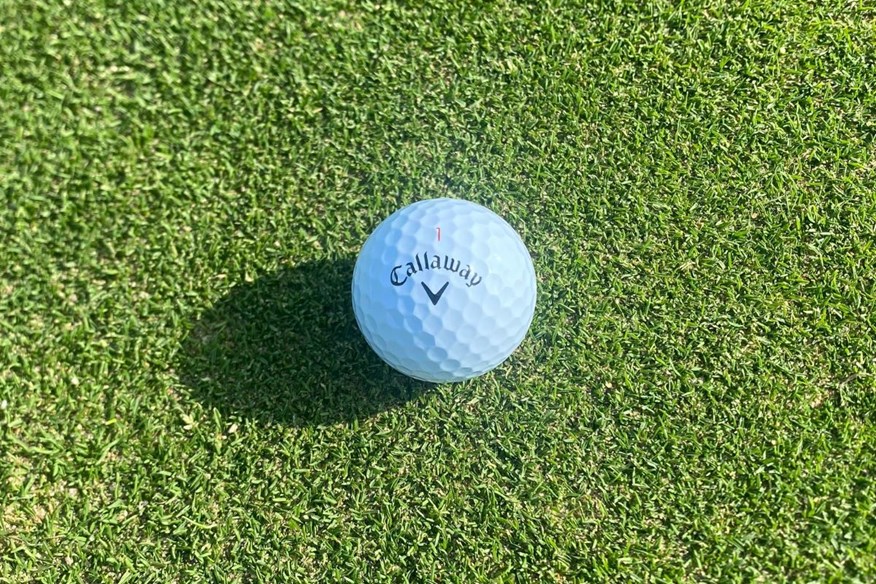

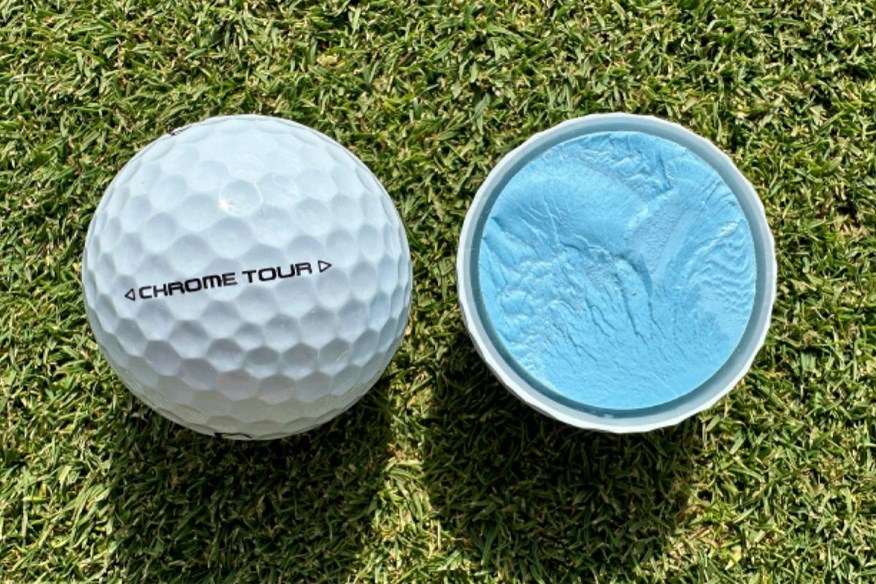
If you're looking to improve your tee game, the Callaway Chrome Tour is the ball you should choose out of all four-piece and five-piece golf balls.
At 114mph, the Callaway Chrome Tour is the fastest and longest golf ball of the entire test, being the only golf ball out of all 62 to exceed 275 carry yards. It's a similar story at 93mph, being the longest golf ball off the tee of all 62 tested.
Chrome Tour isn't as competitive with carry distance at slower swing speeds, but being lower spinning than other golf balls in this category helps to produce competitive total distance. Also, ball speed is joint-third fastest.
Where the Chrome Tour is low spinning off the tee, it's not the case approaching or playing around greens.
Chrome Tour is the complete package, and definitely a golf ball you have to consider if you want a premium, Tour-level golf ball that's fast and long off the tee, with good iron game and short game spin and control.
On-course verdict
I've had a lot of enjoyment playing with the Chrome Tour, most notably when I took this model out for a spin on The Old Course at St. Andrews. It's extremely difficult to find a negative considering it's long off the tee, high-spinning around the greens, and feels amazing.
This isn't a soft-feeling golf ball, but it's not firm either, it's somewhere in the middle, which is very pleasant because it offers great feedback as well as amazing feel.
The Chrome Tour is very strong off the tee, and it is noticeably longer than the Chrome Tour X on the course because it's not as high-spinning. The Chrome Tour is extremely popular on Tour, and it's clear to see why.
The Chrome Tour and Tour X are very closely matched, but the Chrome Tour is probably more versatile; it's just not as high-spinning when approaching and playing around greens.
Read our full Callaway Chrome Tour golf ball review.
Pros
- Impressive distance and ball speed
- Played by some of the best golfers in the game
- Very consistent golf balls
Cons
- Not as high-spinning as the Chrome Tour X
| Carry distance (yds) | Driver 114mph - 275.4 | Driver 93mph - 210.8 | Driver 78mph - 161.8 | 7-iron - 155.6 |
| Ball speed (mph) | Driver 114mph - 165.1 | Driver 93mph - 134.7 | Driver 78mph - 113.4 | 7-iron - 108.7 |
| Backspin (rpm) | Driver 114mph - 2,689 | Driver 93mph - 2,701 | Driver 78mph - 2,508 | 7-iron - 4,658 | Pitch - 6,036 |
| Launch angle (°) | Driver 114mph - 11 | Driver 93mph - 12.7 | Driver 78mph - 13.9 | 7-iron - 20.9 | Pitch - 30.1 |
| Descent angle (°) | Driver 114mph - 37.3 | Driver 93mph - 32.5 | Driver 78mph - 27.6 | 7-iron - 44.9 | Pitch - 35.2 |
| Peak height (yds) | Driver 114mph - 32.6 | Driver 93mph - 22.7 | Driver 78mph - 15.7 | 7-iron - 29.4 | Pitch - 6.5 |
| Compression (psi) | 113 |
- Hyper fast soft core
- Seamless Tour aero
- High-performance Tour urethane soft cover
- 332 dimples
- 4-Piece construction
- Available in white and yellow
- Alternative models include Triple Track, 360° Triple Track, TruTrack, and Limited Edition patterns
Best premium golf balls (3-piece Tour)
The most dominant 3-piece Tour-level golf ball
Best Srixon golf ball


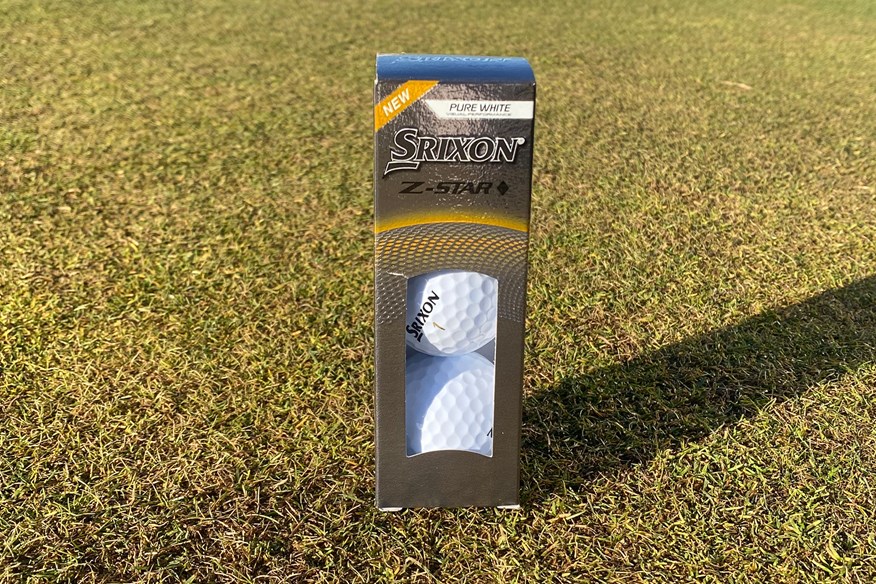
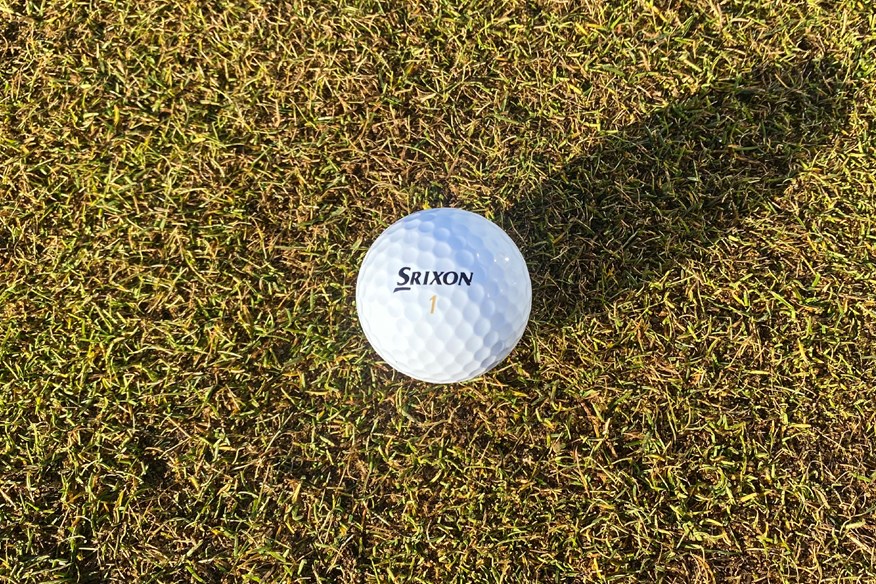
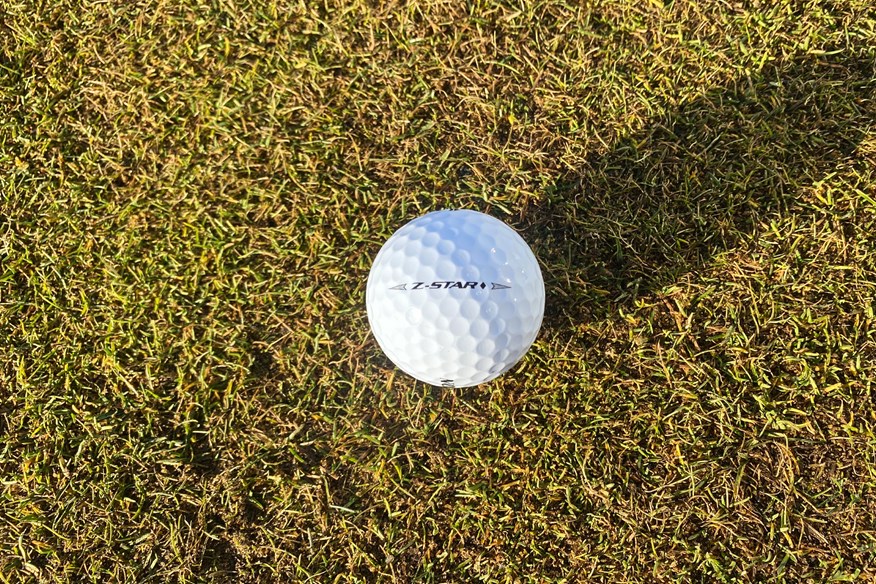
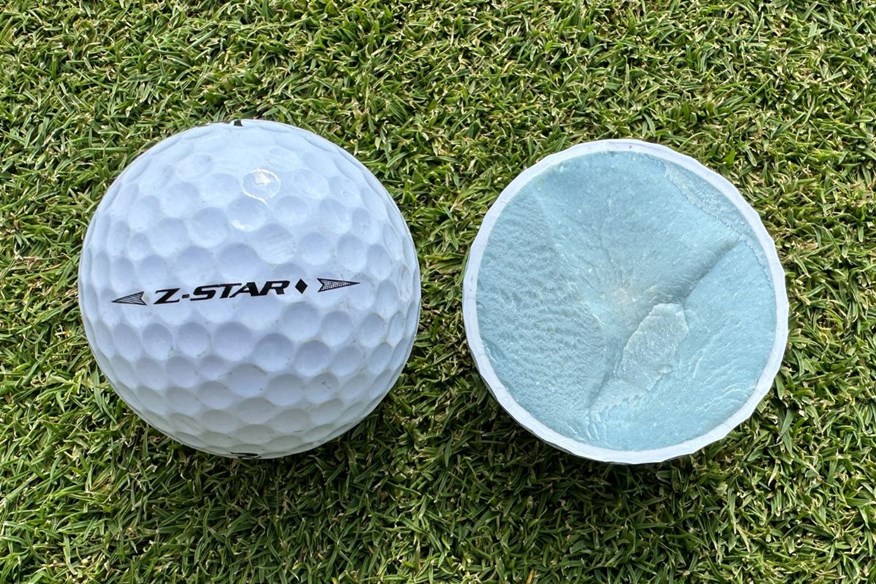
The Srixon Z-Star Diamond is one of the best high-spin golf balls. This golf ball was initially designed for Brooks Koepka, but it's become more popular among other Srixon staffers and amateur golfers. Based on our 2025 robot test results, it's clear to see why!
The Z-Star Diamond won an award in every category, barring one (off-the-tee performance), but where it did rank, it took the top spot. Let's have a quick run through the Z-Star Diamond's awards: gold medal for tee to green performance at 114mph, 93mph, and 78mph, gold medal for approach play, and gold medal for short-game performance.
Around the greens, the Z-Star Diamond is the best three-piece Tour-level golf ball you can play, and the second-best golf ball of all 62 tested, generating 6,137rpm at the 40-yard pitch shot.
However, it's unlikely you'll miss the green in the first place! The Z-Star Diamond is the best golf ball for firing at pins. This golf ball ranks second for descent angle (45.3°), fourth for carry distance consistency, and third for backspin (5,149rpm - one of only three golf balls with over 5,000rpm). This is a recipe for success when you're attacking pins.
The Z-Star Diamond is a consistent golf ball off the tee at all three driver swing speeds. So, whether you swing like Koepka or not, this golf ball will deliver strong numbers for your swing speed. The Z-Star Diamond is above the test average for ball speed and carry distance at all three driver swing speeds.
This golf ball cleaned up in the three-piece Tour-level category! The Z-Star Diamond has to be on your mind if you're looking for a new golf ball.
On-course verdict
The Srixon Z-Star Diamond delivers the optimal performance out of the three golf balls in the 2025 Z-Star range.
The Z-Star Diamond is brilliant if you’re looking for one of the best high-spin golf balls because it’s very easy to generate spin with this model. That being said, it’s definitely lower-spinning off the tee than the previous generation.
I’ve tested a heap of outstanding Tour-level golf balls over the past couple of years, but I don’t think any have impressed me as much as the Z-Star Diamond on approach shots.
If you think a golf ball that travels far and spins high sounds right for your game, then you have to try the Z-Star Diamond, regardless of your ability.
I absolutely love how this golf ball feels off every club face in my bag. I wouldn’t necessarily say it’s particularly firmer than the Z-Star or Z-Star XV, but I think the feedback is much stronger. Thanks to the solid feedback, the response is very satisfying on well-struck shots, but not so much when the contact isn’t as good. However, I think that’s what makes a good golf ball.
Of all the golf balls I’ve played with over the past couple of seasons, this is without a doubt the best-performing golf ball from tee to green.
The Z-Star Diamond performs optimally in every area, which makes it extremely difficult to criticise. It feels great, feedback is amazing, and performance is extraordinary.
I don’t know what more a golf ball can offer!
Read our full Srixon Z-Star Diamond golf ball review.
Pros
- Amazing control from tee to green
- High spinning in the iron and short game
- Fantastic feedback and response
Cons
- High-spinning nature does slightly hinder distance
| Carry distance (yds) | Driver 114mph - 270.7 | Driver 93mph - 207.8 | Driver 78mph - 161 | 7-iron - 153.1 |
| Ball speed (mph) | Driver 114mph - 163.6 | Driver 93mph - 133.8 | Driver 78mph - 113.1 | 7-iron - 108.7 |
| Backspin (rpm) | Driver 114mph - 2,988 | Driver 93mph - 2,838 | Driver 78mph - 2,719 | 7-iron - 5,149 | Pitch - 6,137 |
| Launch angle (°) | Driver 114mph - 11.2 | Driver 93mph - 12.5 | Driver 78mph - 13.6 | 7-iron - 20.5 | Pitch - 30 |
| Descent angle (°) | Driver 114mph - 39.4 | Driver 93mph - 32.6 | Driver 78mph - 28.1 | 7-iron - 45.3 | Pitch - 35.1 |
| Peak height (yds) | Driver 114mph - 34.5 | Driver 93mph - 22.4 | Driver 78mph - 15.7 | 7-iron - 29.3 | Pitch - 6.5 |
| Compression (psi) | 106 |
- Speed dimple pattern
- Thin premium Biomass cover
- Spin skin+ coating
- Fastlayer DG core 2.0
- 338 dimples
- 3-Piece construction
- Available in white and yellow
Silver medal for tee to green performance at 114mph
The Srixon Z-Star XV is the distance-oriented model in Srixon's Z-Star line-up, and it's the ball of choice for 2019 Champion Golfer Shane Lowry, 2021 Masters Champion Hideki Matsuyama, and Austria's only PGA Tour winner, Sepp Straka.
Despite being the supposed longest golf ball in the Z-Star range, the Z-Star XV isn't as long as the Z-Star Diamond at any of the three driver swing speeds tested. That being said, at 114mph, it's very close.
Add in the impressive approach play performance, and there's no surprise this golf ball won the silver medal for tee to green performance at the quick swing speed. The Z-Star XV ranked third for approach play in the entire test - sadly, behind the Z-Star and Z-Star Diamond.
The Z-Star XV is said to be the lowest-spinning Z-Star model, but even around the greens, it's slightly ahead of the Z-Star (albeit by 22rpm). The Z-Star XV might sound as though it's living in the shadow of the Z-Star and Z-Star Diamond. However, there's clearly a reason why it's so popular on Tour.
As well as being the second-best three-piece Tour-level golf ball for tee to green performance at 114mph, the Z-Star XV also won bronze for tee to green performance at 78mph, and bronze for approach play.
There's a lot to love about the Z-Star XV, and like the other two models in the Z-Star line-up, this is a brilliant golf ball for attacking pins with. It's incredibly versatile across all three swing speeds, and it puts itself in the conversation with the Z-Star and Z-Star Diamond.
On-course verdict
The Z-Star XV is incredibly popular on Tour, and it's easy to see why after just a couple of holes. This golf ball delivers great performance in every area with an emphasis on distance.
I can't say for sure whether I noticed considerably more distance over other golf balls in Srixon's Z-Star range, but it's definitely competitive.
The Z-Star XV is designed to be the lowest-spinning golf ball in the Z-Star line-up, but it's far from low-spinning. On the course, this ball stops very quickly when approaching and playing around greens - as you'd expect for a Tour-level golf ball.
I find the XV to have a slightly softer feel than the Z-Star Diamond, and for that reason, I don't think it's as responsive, but the feeling itself is very pleasant.
As I've already mentioned, this is a very popular Srixon golf ball on Tour, and it doesn't take long to realise why when you play with it on the golf course.
Pros
- Impressive tee to green performance
- Good Tour representation
- Great feel
Cons
- Lower-spinning than the Z-Star Diamond
| Carry distance (yds) | Driver 114mph - 270.6 | Driver 93mph - 207.7 | Driver 78mph - 160.8 | 7-iron - 154.2 |
| Ball speed (mph) | Driver 114mph - 163.4 | Driver 93mph - 133.6 | Driver 78mph - 113.2 | 7-iron - 108.7 |
| Backspin (rpm) | Driver 114mph - 2,936 | Driver 93mph - 2,857 | Driver 78mph - 2,654 | 7-iron - 4,930 | Pitch - 5,948 |
| Launch angle (°) | Driver 114mph - 11.2 | Driver 93mph - 12.6 | Driver 78mph - 13.8 | 7-iron - 20.7 | Pitch - 30.3 |
| Descent angle (°) | Driver 114mph - 39 | Driver 93mph - 32.9 | Driver 78mph - 27.6 | 7-iron - 45.2 | Pitch - 35.6 |
| Peak height (yds) | Driver 114mph - 34 | Driver 93mph - 22.6 | Driver 78mph - 15.5 | 7-iron - 29.3 | Pitch - 6.7 |
| Compression (psi) | 112 |
- Speed dimple pattern
- Thin premium Biomass cover
- Spin skin+ coating
- Fastlayer DG core 2.0
- 338 dimples
- 3-Piece construction
- Available in white and yellow
Silver medal for tee to green performance at 78mph and approach play performance
Srixon's Z-Star line-up has blown the three-piece Tour-level competition away. Granted, much of that is thanks to the Z-Star Diamond, but the Srixon Z-Star also contributed with a silver medal for tee to green performance at 78mph and approach play performance.
The Z-Star is right there with the Z-Star Diamond for approach play performance, but it sadly just misses out on top spot and has to settle for second-best out of all 62 golf balls tested. The Z-Star ranks fourth for descent angle (45.3°), fifth for carry distance consistency, and fifth for backspin (4,937rpm).
Being a lower-spinning golf ball than the Z-Star Diamond, it's hardly surprising to see the Z-Star rank lower in short-game performance. The Z-Star is the sixth-highest spinning three-piece Tour-level golf ball at the 40-yard pitch shot - firmly above the test average with 5,926rpm.
With a silver medal for tee to green performance at 78mph, the Z-Star performs best at slower swing speeds, ranking fifth overall. At more moderate and quicker swing speeds, the Z-Star isn't as strong off the tee, and that's perhaps why it's not as popular on Tour as Z-Star Diamond or Z-Star XV.
That being said, Z-Star is a golf ball for slower swing speed players to consider, especially if you want a golf ball you can trust when playing from the fairway.
On-course verdict
The Z-Star is my least-favoured golf ball in Srixon's Z-Star range, but that's not to say it will be for everyone. For my game, it doesn't perform as well from tee to green as the Diamond or XV.
This is noticeably softer than the Diamond and XV, which I think makes it less responsive, and it dampens the feedback.
On the whole, all three Z-Star golf balls are very closely matched, but on the course, I can definitely tell this golf ball isn't right for me off the tee because it doesn't spin enough. For some golfers, that will be a plus, but for my game, I require a higher-spinning model.
The Z-Star has the lowest compression rating of the three models in Srixon's Z-Star range, and for that reason, it works best for golfers with slower swing speeds because it's easier to eke out its performance. If you swing the club too quickly, you go beyond the threshold of optimal performance.
Pros
- Amazing tee to green performance
- Premium option for golfers with slower swing speeds
- Very soft feel
Cons
- Doesn't perform as well at quicker swing speeds
| Carry distance (yds) | Driver 114mph - 269.4 | Driver 93mph - 206.6 | Driver 78mph - 161.1 | 7-iron - 154.1 |
| Ball speed (mph) | Driver 114mph - 162.7 | Driver 93mph - 133.1 | Driver 78mph - 113.1 | 7-iron - 108.7 |
| Backspin (rpm) | Driver 114mph - 2,900 | Driver 93mph - 2,859 | Driver 78mph - 2,693 | 7-iron - 4,937 | Pitch - 5,926 |
| Launch angle (°) | Driver 114mph - 11.1 | Driver 93mph - 12.6 | Driver 78mph - 13.7 | 7-iron - 20.8 | Pitch - 30.6 |
| Descent angle (°) | Driver 114mph - 38.5 | Driver 93mph - 32.8 | Driver 78mph - 28.1 | 7-iron - 45.3 | Pitch - 35.9 |
| Peak height (yds) | Driver 114mph - 33.3 | Driver 93mph - 22.4 | Driver 78mph - 15.8 | 7-iron - 29.5 | Pitch - 6.9 |
| Compression (psi) | 92 |
- Speed dimple pattern
- Thin premium Biomass cover
- Spin skin+ coating
- Fastlayer DG core 2.0
- 338 dimples
- 3-Piece construction
- Available in white and yellow
- An alternative model is the Divide
Silver medal for short game performance
Best premium Bridgestone golf ball
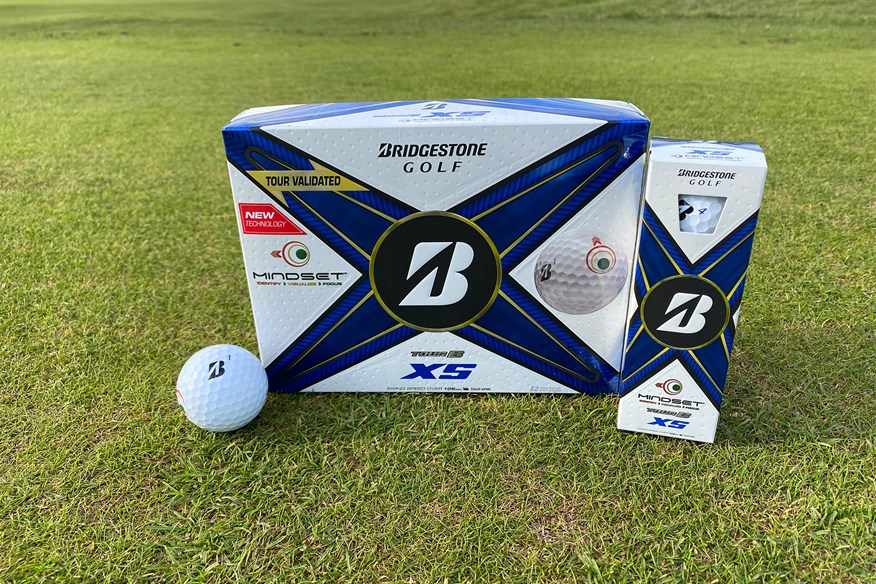

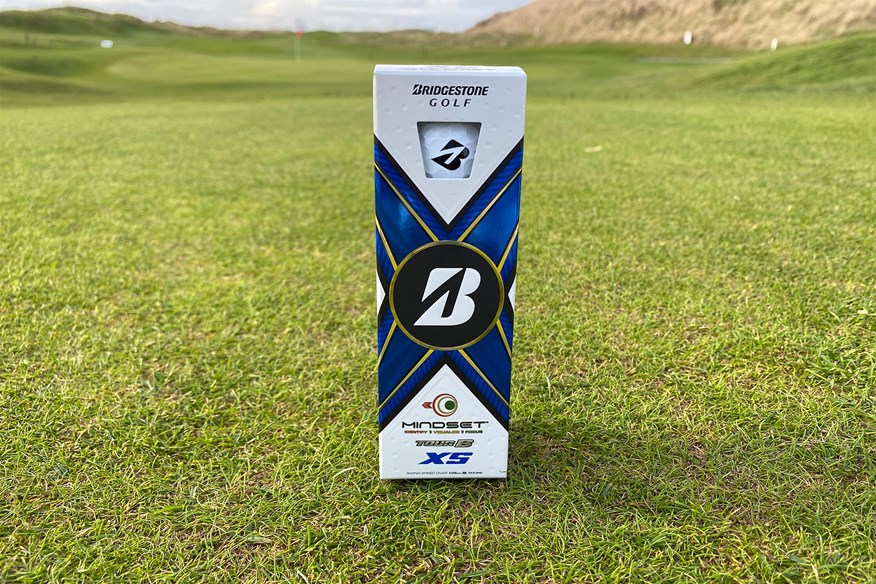
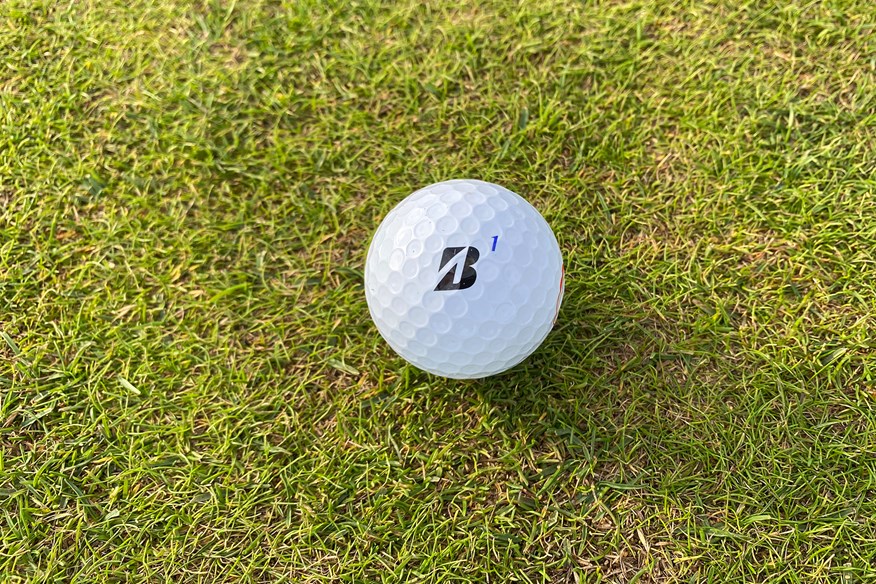
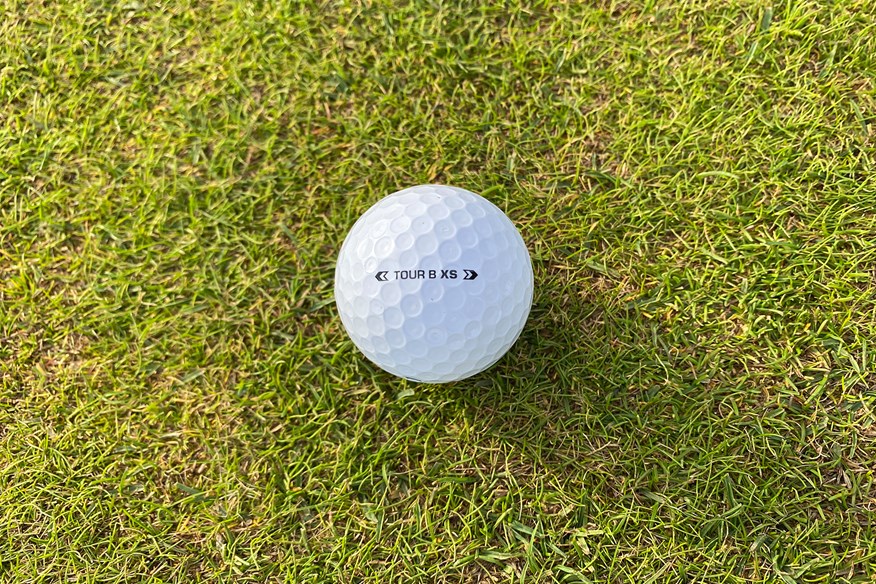
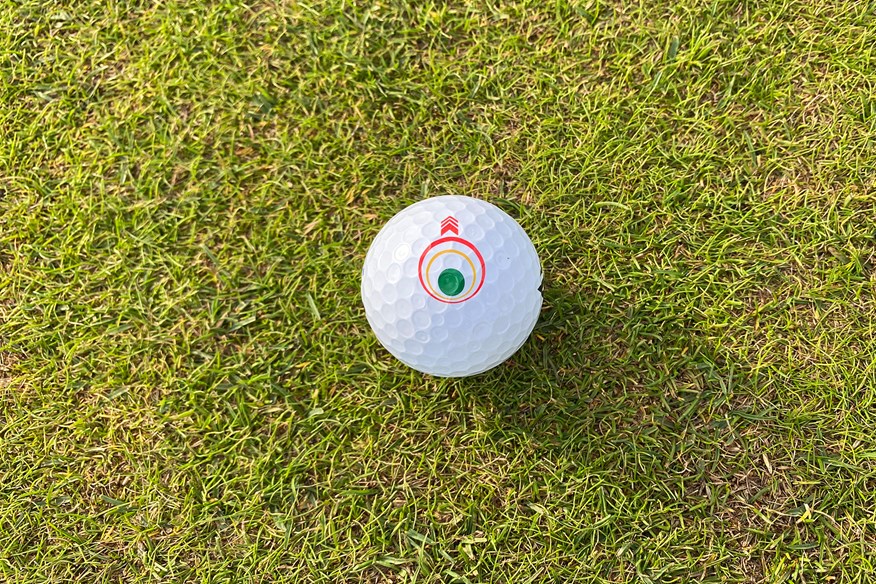
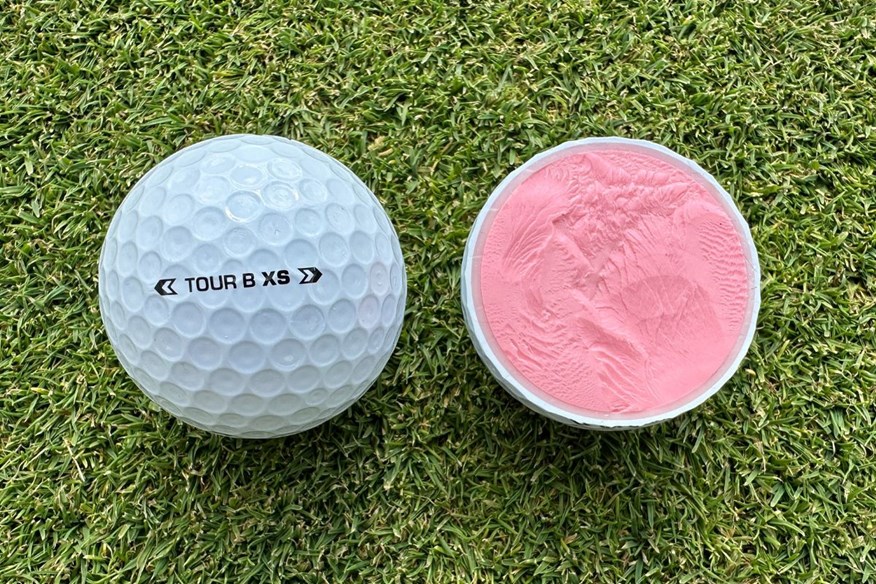
Bridgestone's Tour B XS is designed to spin higher than the Tour B X and produce a softer feeling. While our robot can't comment on the feel of this golf ball, it can tell us if it is, in fact, higher-spinning than its firmer counterpart.
Winning the silver medal for short game performance, the Tour B XS is higher-spinning around the greens than the Tour B X (6,036rpm vs. 5,972rpm). It's not drastically higher spinning, but you can expect more grab and control.
That transfers into approach play. Within the three-piece Tour-level category, the Tour B XS is the highest-spinning golf ball with over 5,000 rpm - one of only two (5,170). It's also the second-highest-spinning golf ball in the entire test.
Unfortunately, due to the dominance of the Z-Star range, the Tour B XS just misses out on a podium place for approach play performance.
Off the tee, the high-spinning nature of the Tour B XS hurts its overall performance. At all three driver swing speeds, it ranks low, being the highest-spinning model at 78mph (second overall) and 93mph (first overall), and the second-highest-spinning golf ball at 114mph (third overall).
There'll be a lot of people put off by how much the Tour B XS spins, and it's a big reason why Tiger Woods switched to the Tour B X. However, if you struggle to generate spin, the Tour B XS is a golf ball you should definitely consider. I love it for that exact reason, and while it might not go as far off the tee, it makes up for the reduced distance by offering amazing spin and control.
On-course verdict
The Tour B XS isn’t a model found on Tour; the Tour B X is a much more popular model among the pros. For a golfer who’s looking for a soft-feeling golf ball that easily generates spin and has a driver swing speed north of 105mph, the Tour B XS is definitely a model to consider.
Some golf balls are able to work for a wide range of golfers. However, I wouldn’t say that’s the case with the Tour B XS.
As a golfer who needs help adding spin and height off the tee, the Tour B XS is a brilliant golf ball for me. I feel as though from tee to green, this ball performs incredibly well and delivers everything I need and want from a golf ball.
The Tour B XS is a soft-feeling golf ball, which I’m not normally a fan of, but I am with the Tour B XS because it’s very responsive. I think you get a lot of feedback from every shot you play with the Tour B XS.
Read our full Bridgestone Tour B XS golf ball review.
Pros
- Incredible feel and response from every shot
- Amazing spin and control around the green
- Mindset is a brilliant tool
Cons
- Not the most versatile model
| Carry distance (yds) | Driver 114mph - 268.4 | Driver 93mph - 206.7 | Driver 78mph - 160.5 | 7-iron - 153.5 |
| Ball speed (mph) | Driver 114mph - 162.7 | Driver 93mph - 133.6 | Driver 78mph - 112.8 | 7-iron - 109 |
| Backspin (rpm) | Driver 114mph - 2,964 | Driver 93mph - 3,059 | Driver 78mph - 2,795 | 7-iron - 5,170 | Pitch - 6,036 |
| Launch angle (°) | Driver 114mph - 11 | Driver 93mph - 12.3 | Driver 78mph - 13.7 | 7-iron - 20.3 | Pitch - 30 |
| Descent angle (°) | Driver 114mph - 38.6 | Driver 93mph - 33.6 | Driver 78mph - 28.4 | 7-iron - 45.2 | Pitch - 35.3 |
| Peak height (yds) | Driver 114mph - 33.1 | Driver 93mph - 22.8 | Driver 78mph - 15.8 | 7-iron - 29.1 | Pitch - 6.7 |
| Compression (psi) | 99 |
- REACTIV X System
- REACTIV iQ Smart Cover Technology
- XCLRNT mid-layer
- Gradational Core
- Dual Dimple
- Seamless Cover
- 330 dimples
- 3-Piece construction
- Available in white and yellow
- An alternative model is the Mindset
Silver medal for off-the-tee performance
Best PXG golf ball


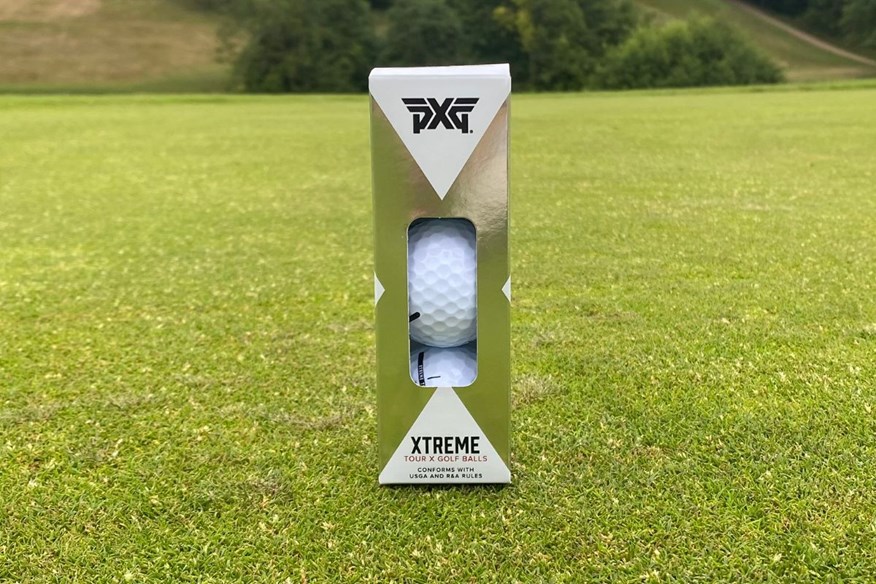
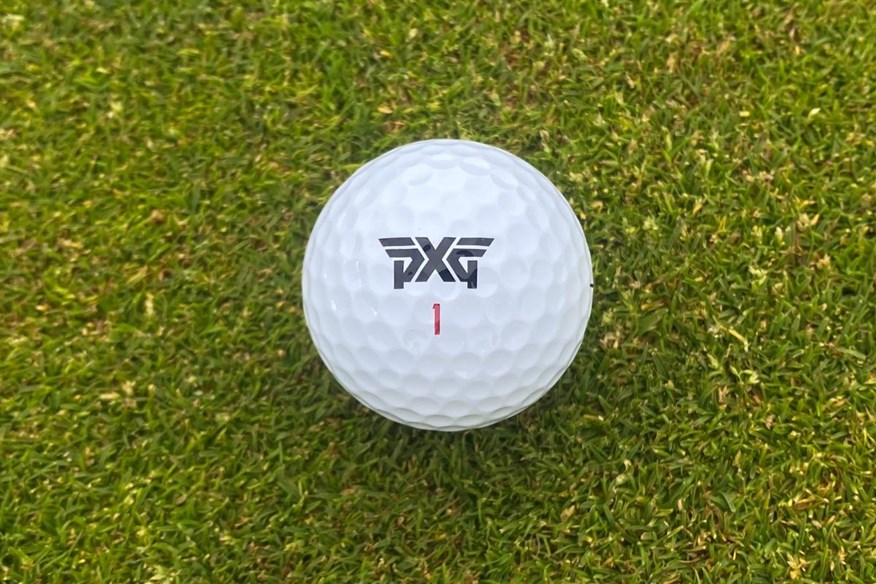
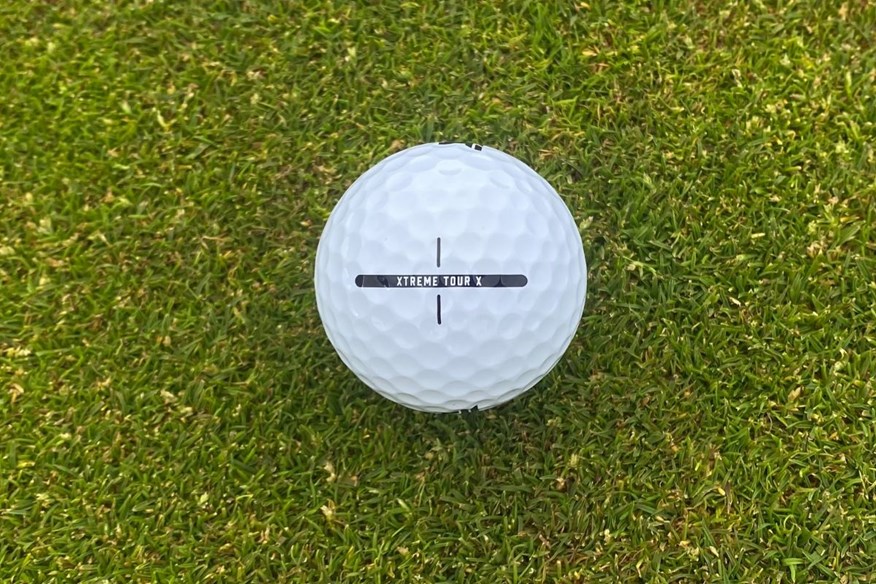

The second generation of PXG golf balls are very impressive, and the Xtreme Tour X model emerged from our test as being the better-performing model compared to the Xtreme Tour. Especially off the tee, being the second-best golf ball in this category.
At all three driver swing speeds, the Xtreme Tour X is a long and fast golf ball off the tee, making it an incredibly versatile option for any golfer to consider. At 114mph, it's the third longest (272.8yds) and second fastest (164mph), at 93mph, it's the second longest (209.4yds) and second fastest (134.1mph), and at 78mph, it's the fourth longest (160.8yds) and third fastest (113mph). A seriously impressive golf ball off the tee for all golfers.
Approaching and playing around greens, you can expect a high-performing golf ball that will easily sit and grab, being the fifth-highest-spinning golf ball (4,820rpm) and having the second steepest descent angle (45.2°) from the 7-iron shot, and being the fourth-highest-spinning model (5,961rpm) with the 40-yard pitch shot.
Combine off-the-tee performance with approach play performance, and it's easy to see how the Xtreme Tour X also won bronze for tee to green performance at 114mph and 93mph.
The only issue with the Xtreme Tour X is its carry distance consistency with the 7-iron shot, ranking 46th overall. Take away the inconsistent distances when approaching greens, and you have an extremely solid golf ball that could easily have won more awards.
On-course verdict
I haven't had the pleasure of playing with the PXG Xtreme Tour X golf balls, but fellow TG Equipment Writer, Will Shreeve-Peacock, has - here's his verdict:
"As a golfer who religiously plays the Titleist Pro V1x, I was pleasantly surprised to find that the Xtreme Tour X is about as close to the real thing as I’ve seen to my go-to ball.
"While the urethane cover does feel and look slightly different, the overall feedback and performance felt instantly familiar.
"Off the face, there’s plenty of speed, but also ample spin with irons and in the short game. Around the greens and off the putter, the feel was virtually identical to the Pro V1x, soft, responsive, and confidence-inspiring. Just what I play the V1x for!
"The long-game performance impressed me the most: it feels soft off the face, launches well, and doesn’t spin up too much, addressing one of the issues I had with the original PXG Xtreme."
Pros
- Brilliant performance off the tee
- Great tee to green performance
- Amazing value
Cons
- Inconsistent distances when approaching greens
| Carry distance (yds) | Driver 114mph - 272.8 | Driver 93mph - 209.4 | Driver 78mph - 160.8 | 7-iron - 154.7 |
| Ball speed (mph) | Driver 114mph - 164 | Driver 93mph - 134.1 | Driver 78mph - 113 | 7-iron - 108.7 |
| Backspin (rpm) | Driver 114mph - 2,829 | Driver 93mph - 2,688 | Driver 78mph - 2,458 | 7-iron - 4,820 | Pitch - 5,961 |
| Launch angle (°) | Driver 114mph - 11.2 | Driver 93mph - 12.7 | Driver 78mph - 14 | 7-iron - 20.9 | Pitch - 30.2 |
| Descent angle (°) | Driver 114mph - 38.4 | Driver 93mph - 32.2 | Driver 78mph - 27.4 | 7-iron - 45.2 | Pitch - 35.3 |
| Peak height (yds) | Driver 114mph - 33.3 | Driver 93mph - 22.4 | Driver 78mph - 15.5 | 7-iron - 29.5 | Pitch - 6.6 |
| Compression (psi) | 112 |
- High-speed polybutadiene core
- lonomer mid-layer
- Soft yet durable cover
- High penetrating trajectory
- Dual Dimple
- Seamless Cover
- 338 dimples
- 3-Piece construction
- Available in white only
Best golf balls for mid-handicappers (3-piece club golfer)
No.1 3-piece club golfer model
This is one of my most highly anticipated golf balls of the entire test. Ever since I tested the Vice Tour on-course, I've been waiting to see how it would perform in our robot test. I'm very pleasantly surprised.
I'm a fan of the Tour, but I never expected this golf ball would scoop up five awards in the three-piece club golfer category. As well as being the best golf ball for tee to green performance at 114mph, the Tour won the silver medal for tee to green performance at 93mph, off-the-tee performance, and short game performance, plus the bronze medal for tee to green performance at 78mph.
This golf ball is the real deal - and it doesn't have a urethane cover. That's quite possibly a reason as to why it's low-spinning when approaching greens (4,216rpm). However, around the greens, that spin shoots up, and it's the second-highest-spinning model with 5,967rpm (14th overall).
Short game and approach play performance is very clearly solid, but off the tee is where the Tour really gets you excited. At 114mph, this is the longest (271.4yds) and second-fastest (163.3mph) golf ball, at 93mph, it's the longest (208.3yds) and third-fastest (133.4mph), and at 78mph, it's the second-longest (160.8yds) and second-fastest (113.2mph).
There's a ton to like about the Vice Tour, and factoring in the price, as well as its domination, this is the best three-piece club golfer model.
On-course verdict
I would say the Vice Tour is a suitable option for a wide range of golfers because, as a whole, it’s a decent, well-rounded golf ball.
One area where the Vice Tour impresses me is with how well it propels off the face of a long iron. Distance is strong even into the wind, and there’s a more pleasant feedback from this ball than I feel from any of the golf balls in Vice’s Pro range.
I wouldn’t go as far as to say the Vice Tour is a soft-feeling golf ball or a firm-feeling golf ball. I would place it somewhere in the middle, with a medium feel.
Having played with Vice’s Pro Plus, Pro, and Pro Air golf balls, I would say that this golf ball is more responsive than all of those. The feel off the face isn’t as profound as other golf balls I’ve played with, but it definitely isn’t as muted as other Vice golf balls.
This helps to provide more feedback from your shot, which is something I like, but it isn’t something that every golfer wants. The responsiveness of the Vice Tour could be better, but for a golf ball with a Surlyn cover, it’s pretty good.
Whether you have a fast swing speed or a slow swing speed, the Vice Tour should definitely be on your radar.
Read our full Vice Tour golf ball review.
Pros
- Consistent and tight dispersion
- Impressive on-course distance
- Incredible value for money
Cons
- Not much grab on short approach shots
| Carry distance (yds) | Driver 114mph - 271.4 | Driver 93mph - 208.3 | Driver 78mph - 160.8 | 7-iron - 158.1 |
| Ball speed (mph) | Driver 114mph - 163.3 | Driver 93mph - 133.4 | Driver 78mph - 113 | 7-iron - 108.7 |
| Backspin (rpm) | Driver 114mph - 2,769 | Driver 93mph - 2,635 | Driver 78mph - 2,381 | 7-iron - 4,216 | Pitch - 5,967 |
| Launch angle (°) | Driver 114mph - 11.1 | Driver 93mph - 13 | Driver 78mph - 14 | 7-iron - 21.5 | Pitch - 30.6 |
| Descent angle (°) | Driver 114mph - 37.7 | Driver 93mph - 32.2 | Driver 78mph - 27.3 | 7-iron - 44.6 | Pitch - 35.8 |
| Peak height (yds) | Driver 114mph - 32.6 | Driver 93mph - 22.4 | Driver 78mph - 15.5 | 7-iron - 29.6 | Pitch - 6.7 |
| Compression (psi) | 112 |
- Enhanced mid-acid Surlyn cover
- High resilience and low stiffness composition
- Size-optimized High Energy Speed Core (HESC)
- 312 dimples
- 3-Piece construction
- Available in white and grey
Gold medal for short game performance
Kirkland golf balls are known for being high-spinning. The V2.0 was, and so is the V3.0. That's not an issue if you struggle to get the ball in the air or find it difficult to hit and hold greens. It also means the Signature V3.0 is amazing around the greens.
The Signature V3.0 is the gold medal winner for short game performance, in this category, generating 6,050rpm. Of all 62 golf balls tested, it's the seventh-highest-spinning golf ball.
Spin persists throughout the bag, and with the 7-iron shot, the Signature V3.0 is once again the highest-spinning three-piece club golfer model (4,861rpm). It also lands with the steepest descent angle (45°).
You might think the high-spinning nature will hurt how the V3.0 performs off the tee, but is that the case? Definitely not. The V3.0 is the bronze medal winner for off-the-tee performance.
It does generate a lot of spin, but it's also long and fast at all three swing speeds. At the fastest swing speed, it's the third-longest (271yds) and fastest (163.5mph), at the moderate swing speed, it's the third-longest (208yds) and fastest (133.6mph), and at the slower swing speed, it's the third-longest and fourth-fastest (112.8mph).
With the Kirkland Signature V3.0, you are signing yourself up to play with a high-spin golf ball, but if you need spin, it's one of the best models you can play with.
On-course verdict
Over the years, these golf balls have been highly regarded by many golfers and heavily scrutinised by others. Kirkland’s Signature three-piece golf balls are known for delivering high spin, and this is no different with their V3.0, as it ranks among the best high-spin golf balls.
The biggest issue the V3.0 has is that its spin compromises distance, but for some golfers, that won’t be an issue whatsoever.
When I took this ball out on the course, I couldn’t criticise its distance in the long game, but then again, high-spin golf balls suit my game.
I’m a big believer that for the majority of golfers, spin is your friend. You’re guaranteed a golf ball that easily generates spin by playing with the V3.0. Therefore, I believe that more golfers would benefit from playing with this golf ball than not playing with this golf ball.
I’m not normally a fan of soft-feeling golf balls, but I must say that the V3.0 feels good off the club face. I wouldn’t say that the response from this golf ball is particularly strong throughout the bag, but around the greens, there is a pleasant sensation when you clip the ball cleanly – something I think most golfers appreciate.
I think the Kirkland Signature V3.0 is a very strong golf ball. I would never expect to see it played on Tour, but for amateur golfers, it’s definitely one to consider. If you struggle to generate spin or if you just enjoy having a high-spinning golf ball, then it’s a fantastic option.
Read our full Kirkland Signature V3.0 golf ball review.
Pros
- Amazing price per ball considering the quality
- Combines soft feel, long distance, and high spin
- Impressive consistent ball flight
Cons
- Don't expect optimal carry distance
| Carry distance (yds) | Driver 114mph - 271 | Driver 93mph - 208 | Driver 78mph - 160.5 | 7-iron - 154.3 |
| Ball speed (mph) | Driver 114mph - 163.5 | Driver 93mph - 133.6 | Driver 78mph - 112.8 | 7-iron - 108.6 |
| Backspin (rpm) | Driver 114mph - 2,873 | Driver 93mph - 2,734 | Driver 78mph - 2,572 | 7-iron - 4,861 | Pitch - 6,050 |
| Launch angle (°) | Driver 114mph - 11.1 | Driver 93mph - 12.7 | Driver 78mph - 13.9 | 7-iron - 20.7 | Pitch - 30 |
| Descent angle (°) | Driver 114mph - 38.3 | Driver 93mph - 32.3 | Driver 78mph - 27.7 | 7-iron - 45 | Pitch - 35.1 |
| Peak height (yds) | Driver 114mph - 33.2 | Driver 93mph - 22.3 | Driver 78mph - 15.6 | 7-iron - 29.1 | Pitch - 6.5 |
| Compression (psi) | 107 |
- Increased core size
- Mantle with new proprietary cover
- Proprietary TPU with improved scuff resistance and impact endurance
- Modified dimple depth for optimized flight height
- 338 dimples
- 3-Piece construction
- Available in white only
Gold medal for tee to green performance at 93mph and approach play performance
Best 3-piece club golfer model for approaching greens
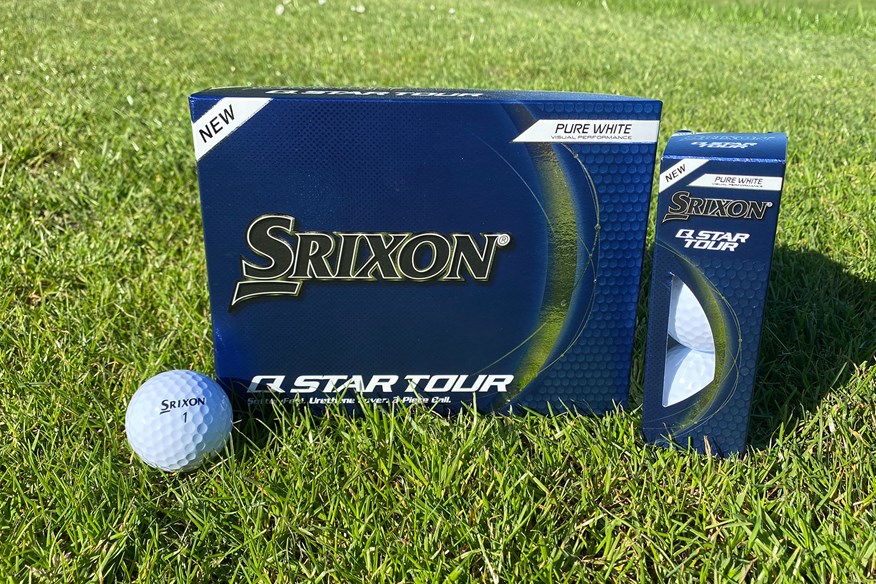

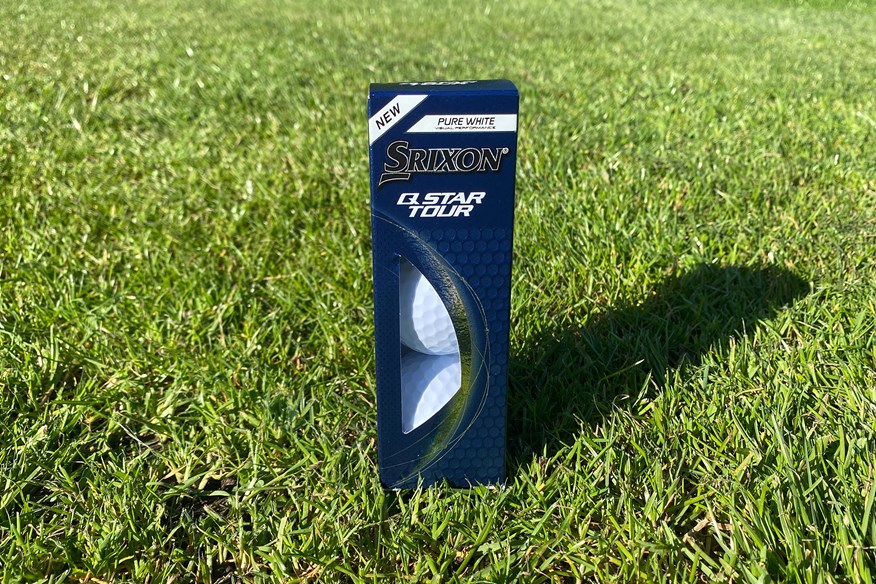
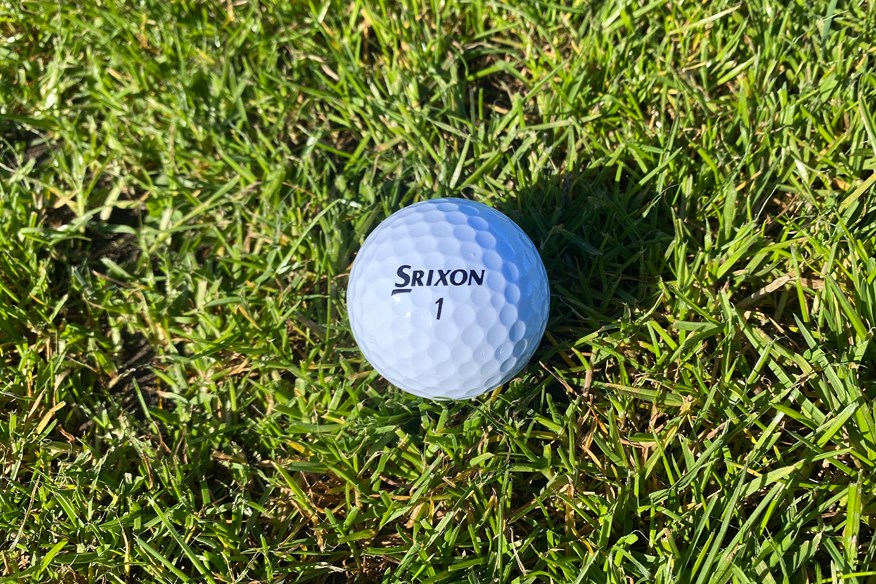
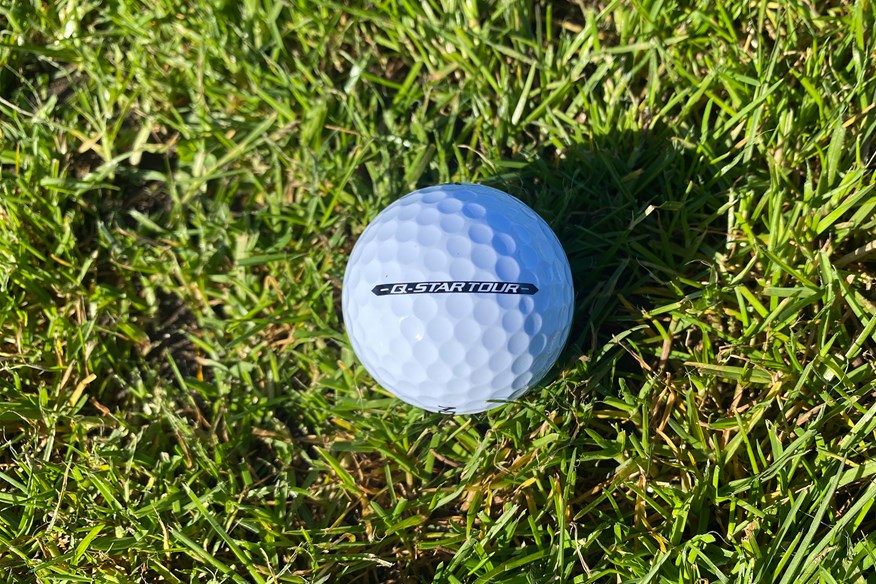
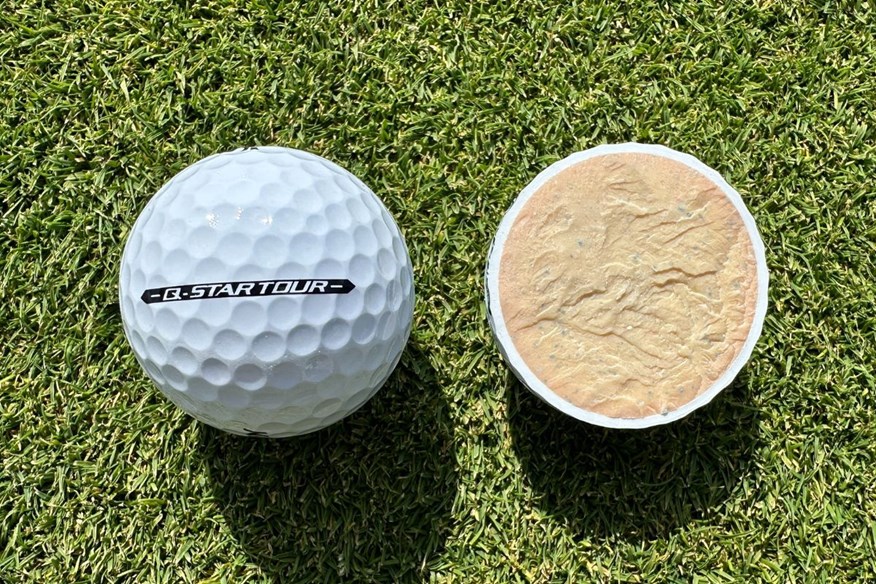
The Q-Star Tour is Srixon's bridging golf ball between the two-piece AD333 and the three-piece Tour-level Z-Star series. The Q-star Tour features plenty of technology found in the Z-Star golf balls, but it just doesn't perform as well.
You'd probably expect that, given it's a cheaper model than all three Z-Star golf balls, but against other three-piece club golfer models, the Q-Star Tour is a brilliant option. This golf ball performs very well in its approach play, ranking best of all golf balls in this category, thanks to its steep descent angle (45°), impressive backspin (4,568), and incredible carry distance consistency - ranking 2nd overall.
The Q-Star Tour is the gold medal winner for approach play performance, and with how strong it is in the 7-iron shot, it helped it achieve the gold medal for tee to green performance at 93mph, and the silver medal at 114mph and 78mph.
You won't be blown away by the Q-Star Tour's performance off the tee, but it's strong enough to make this the overall best three-piece club golfer model for tee to green performance at all three swing speeds.
On-course verdict
The Q-star Tour is very easy to enjoy because it contains some technology found in the premium Z-Star range, but it's a fraction of the price.
Obviously, the Q-Star Tour's performance isn't as high as the three Z-Star golf balls, but it's a very strong performer for mid-handicappers wanting a solid golf ball from tee to green.
Someone I play golf with regularly often switches to the Q-Star Tour because of the fact you're getting close to premium performance, and it's not as gut-wrenching if you lose one.
If you're looking for distance, the Q-Star Tour might not be your first choice, but for control and spin, it's a very good option. What you lose in distance off the tee is definitely made up for with what you gain in spin and control when approaching greens.
Read our full Srixon Q-Star Tour golf ball review.
Pros
- Good performance from tee to green
- Impressive feel from every club in the bag
- Wind doesn't massively hamper distance
Cons
- Distance isn't its strong suit
| Carry distance (yds) | Driver 114mph - 267.4 | Driver 93mph - 205.5 | Driver 78mph - 160.5 | 7-iron - 155.6 |
| Ball speed (mph) | Driver 114mph - 161.8 | Driver 93mph - 132.6 | Driver 78mph - 112.8 | 7-iron - 108.4 |
| Backspin (rpm) | Driver 114mph - 2,828 | Driver 93mph - 2,720 | Driver 78mph - 2,428 | 7-iron - 4,568 | Pitch - 5,575 |
| Launch angle (°) | Driver 114mph - 11 | Driver 93mph - 12.7 | Driver 78mph - 14 | 7-iron - 21.2 | Pitch - 31.5 |
| Descent angle (°) | Driver 114mph - 37.4 | Driver 93mph - 31.9 | Driver 78mph - 27.4 | 7-iron - 45 | Pitch - 37.2 |
| Peak height (yds) | Driver 114mph - 31.9 | Driver 93mph - 21.8 | Driver 78mph - 15.5 | 7-iron - 29.5 | Pitch - 7.3 |
| Compression (psi) | 76 |
- FastLayer core
- Spin Skin coating
- Ultra-thin urethane cover
- Speed dimple pattern
- 338 dimples
- 3-Piece construction
- Available in white and yellow
- An alternative model is the Divide
Gold medal for tee to green performance at 78mph and off-the-tee performance
The Callaway ERC Soft outshines the Chrome Soft in the three-piece club golfer category, mainly due to its tee to green performance. The ERC Soft is the best golf ball in this category for tee to green performance at 78mph and the third-best at 93mph. Another award for this golf ball is the gold medal for off-the-tee performance.
This is a super strong golf ball off the tee - it's by far the best at 78mph with 161.4 carry yards and 113.2mph ball speed. At 93mph, it's right up there again, ranking first for carry distance (208.3yds) and second for ball speed (133.5mph). At 114mph, three golf balls blow the others away in this category, but the ERC Soft is best-of-the-rest (269.9yds and 162.5mph).
The biggest dip in performance for the ERC Soft is in approach play. This is the second-lowest spinning golf ball (4,154rpm) and has a 44.6° descent angle. That materialises into good distance (158.4yds), but that's not the focal point when playing into greens.
With short game performance, you can expect a golf ball that will grab and spin. The ERC Soft delivers strong spin numbers here with 5,592rpm - higher than the Chrome Soft.
The ERC Soft is one of the best three-piece club golfer models, and the fact it outshines the Chrome Soft draws serious, warranted attention.
On-course verdict
The Callaway ERC Soft is a golf ball I really enjoy playing with because it feels like a golf ball you can absolutely hammer, and it will behave. This golf ball's performance from tee to green is nothing to be snubbed at.
Off the tee, the ERC Soft travels well, with minimal long-game spin. For my game, this isn't optimal, but I imagine most golfers will appreciate this. Around the greens, it's a different story. The ERC Soft is easy to control and spin. However, I don't think it's as impressive as the previous generation.
This is a soft-feeling golf ball - as the name suggests - and I find it to be lacking in feedback and response because of how soft it is. You might think otherwise, but personally, I want a golf ball with a touch more feedback.
The ERC Soft is a fantastic golf ball from tee to green at a great price. I prefer this model over the Chrome Soft, although they are both fun golf balls.
Pros
- Very soft feel
- Good tee to green performance
- Impressive distance
Cons
- Lacks feedback and response
| Carry distance (yds) | Driver 114mph - 269.9 | Driver 93mph - 208.3 | Driver 78mph - 161.4 | 7-iron - 158.4 |
| Ball speed (mph) | Driver 114mph - 162.5 | Driver 93mph - 133.4 | Driver 78mph - 113.2 | 7-iron - 108.6 |
| Backspin (rpm) | Driver 114mph - 2,690 | Driver 93mph - 2,635 | Driver 78mph - 2,388 | 7-iron - 4,154 | Pitch - 5,592 |
| Launch angle (°) | Driver 114mph - 11.1 | Driver 93mph - 13 | Driver 78mph - 14 | 7-iron - 21.6 | Pitch - 31.4 |
| Descent angle (°) | Driver 114mph - 36.8 | Driver 93mph - 32.2 | Driver 78mph - 27.3 | 7-iron - 44.6 | Pitch - 37.1 |
| Peak height (yds) | Driver 114mph - 31.5 | Driver 93mph - 22.4 | Driver 78mph - 15.5 | 7-iron - 29.7 | Pitch - 7.3 |
| Compression (psi) | 87 |
- Hyper elastic SoftFast core
- Hybrid cover
- GRIP urethane coating
- High-speed mantle
- Advanced alignment from Triple Track technology
- 332 dimples
- 3-Piece construction
- Available in white and yellow
- Alternative models include Truvis and 360° Fade
Bridgestone's longest 3-piece golf ball
There isn't an awful lot to say about the Bridgestone Tour B RX golf ball other than out of the five three-piece Bridgestone golf balls, including the four members of the Tour B range, the Tour B RX is the longest golf ball, delivering 268.9 carry yards at the 114mph driver swing speed.
At 93mph and 78mph, the Tour B RX isn't as long as other three-piece club golfer models, nor is it as long as other three-piece Bridgestone golf balls. However, at both swing speeds, it is longer than the higher-spinning Tour B RXS.
Although the Tour B RX is sold as the more distance-oriented Tour B model for golfers who swing their driver below 105mph, it's not too far behind the Tour B RXS with regard to spin in approach play and short game performance. The Tour B RX generates 4,733rpm with the 7-iron and 5,645rpm with the 40-yard pitch shot. In both instances, it's within 100rpm of the higher-spinning Tour B RXS.
The Tour B RX is a solid golf ball, but it's not going to blow you away with its performance. You can expect all-around performance, with a slight emphasis on distance over spin.
On-course verdict
The Bridgestone Tour B RX isn't a golf ball I would consider playing with because it doesn't suit my game. For that reason, I trusted one of my playing partners to offer his verdict on this golf ball.
The Tour B RX is designed for golfers who swing their driver slower than 105mph and prioritise distance over spin. Thankfully, someone I regularly play golf with falls into that category.
He enjoyed the mindset technology most about this golf ball, which tells you how good that is, considering with this golf ball in play, he recorded two rounds of 75.
Distance was where he expected, and so was spin. He doesn't play with a lot of spin through choice, and this golf ball allowed him to continue chasing the ball up the fairway off the tee and towards the flag on the greens.
If you would benefit from more spin, depending on your swing speed, you'll want either the Tour B RXS or Tour B XS in play.
The Tour B RX is a model played on the Champions Tour but not on the PGA or DP World Tour, hence why it's more suited to club golfers with a swing speed south of 105mph.
If you're looking to maximise distance, the Tour B RX is a model well worth your consideration.
Pros
- Competitive distance
- Impressive spin and control
- Delivers on its promise
Cons
- Not the most exciting golf ball
| Carry distance (yds) | Driver 114mph - 268.9 | Driver 93mph - 206.5 | Driver 78mph - 160.4 | 7-iron - 155.4 |
| Ball speed (mph) | Driver 114mph - 161.8 | Driver 93mph - 133.1 | Driver 78mph - 112.9 | 7-iron - 108.8 |
| Backspin (rpm) | Driver 114mph - 2,732 | Driver 93mph - 2,780 | Driver 78mph - 2,532 | 7-iron - 4,733 | Pitch - 5,645 |
| Launch angle (°) | Driver 114mph - 11.3 | Driver 93mph - 12.6 | Driver 78mph - 13.8 | 7-iron - 20.7 | Pitch - 30.9 |
| Descent angle (°) | Driver 114mph - 37.4 | Driver 93mph - 32.2 | Driver 78mph - 27.5 | 7-iron - 44.9 | Pitch - 36.4 |
| Peak height (yds) | Driver 114mph - 32.3 | Driver 93mph - 22 | Driver 78mph - 15.4 | 7-iron - 29.2 | Pitch - 7 |
| Compression (psi) | 99 |
- REACTIV X System
- REACTIV iQ Smart Cover Technology
- XCLRNT mid-layer
- Gradational Core
- Dual Dimple
- Seamless Cover
- 330 dimples
- 3-Piece construction
- Available in white and yellow
- An alternative model is the Mindset
Best golf balls for beginners and high-handicappers (2-piece)
Gold medal for tee to green performance at all three driver swing speeds, off-the-tee performance, and approach play performance
Best Bridgestone golf ball



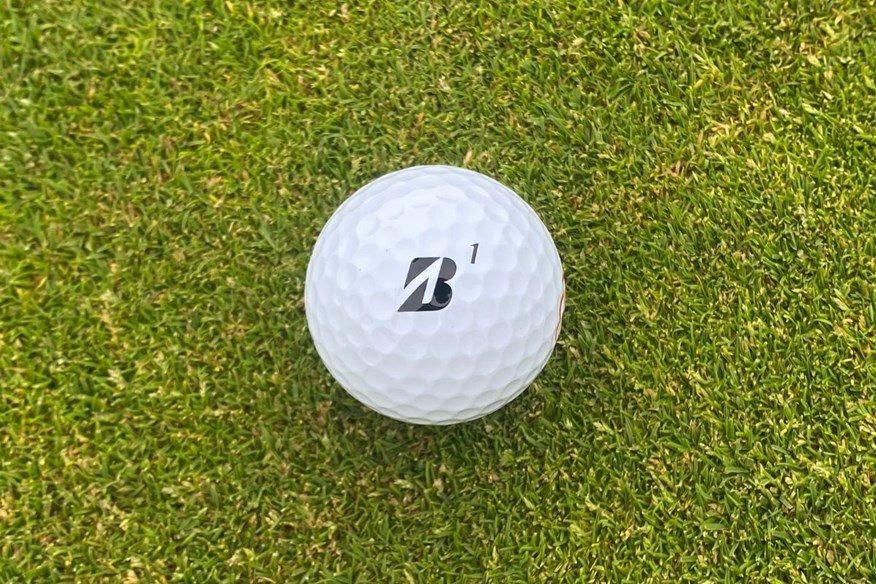
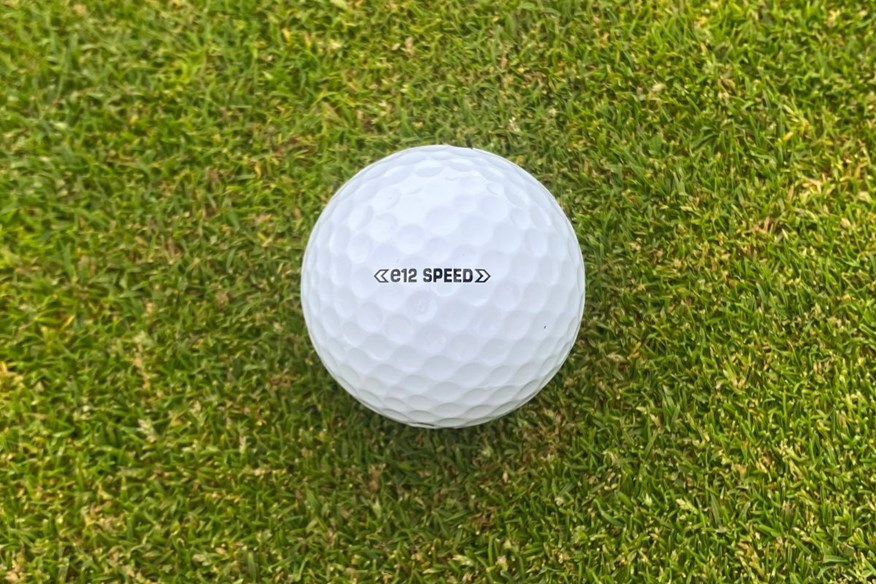


Let's start by running through all of the e12 Speed's awards. Gold medal for tee to green performance at 114mph, 93mph, and 78mph, off-the-tee performance, and approach play performance.
The only area where the e12 Speed didn't rank is short game performance, where it finished in fourth, by 9rpm (5,951).
The e12 Speed is the highest-performing Bridgestone golf ball, factoring in how it performed in every area. Its best performance has to be off the tee. At 114mph, this golf ball was 2.4 yards longer and 0.8mph faster than the second-longest and second-fastest model, and fourth-longest overall (273.9yds).
At 93mph, the e12 Speed is the second longest (209.7yds) and fastest (134.1mph) two-piece golf ball. But, at 78mph, this golf ball is back at the top of the table for both (161.3yds and 113.2mph).
Combine that performance with its dominating approach play performance, and not only do you have an amazing golf ball off the tee, but you have a fantastic golf ball from tee to green.
The e12 Speed is a golf ball I urge every golfer to consider. This is hands down the best value golf ball in the entire test, and as one of the best performers of all 62 models tested, what harm do you have in giving it a go?
On-course verdict
I was extremely surprised by the on-course performance of the Bridgestone e12 Speed, and having played with this golf ball on a couple of occasions, it has never disappointed.
The first time I played with the e12 Speed had me questioning if it definitely is a two-piece golf ball because it performs much closer to other three-piece Tour-level models.
The Bridgestone golf ball I' like most'm most fond of is the Tour B XS, and I think this performs very similarly - if not better.
The feel is slightly firmer than the Tour B XS, which is something I appreciate, and it does deliver more feedback and response throughout the bag.
Overall, I'm very impressed with the tee to green performance of the e12 Speed. Despite being a two-piece model, I wouldn't be quick to dismiss it.
Pros
- Perfroms more like a premium golf ball
- Outstanding tee to green performance
- Amazing feedback and response
Cons
- Very difficult to criticize
| Carry distance (yds) | Driver 114mph - 273.9 | Driver 93mph - 210 | Driver 78mph - 161.3 | 7-iron - 157.6 |
| Ball speed (mph) | Driver 114mph - 164 | Driver 93mph - 134.1 | Driver 78mph - 113.2 | 7-iron - 109.2 |
| Backspin (rpm) | Driver 114mph - 2,680 | Driver 93mph - 2,574 | Driver 78mph - 2,317 | 7-iron - 4,467 | Pitch - 5,951 |
| Launch angle (°) | Driver 114mph - 11.4 | Driver 93mph - 12.9 | Driver 78mph - 14.1 | 7-iron - 21.3 | Pitch - 30.7 |
| Descent angle (°) | Driver 114mph - 37.6 | Driver 93mph - 31.8 | Driver 78mph - 27 | 7-iron - 45.1 | Pitch - 36 |
| Peak height (yds) | Driver 114mph - 33 | Driver 93mph - 22.3 | Driver 78mph - 15.5 | 7-iron - 30 | Pitch - 6.9 |
| Compression (psi) | 103 |
- Optimal Flight System
- Fast gradational core
- MindSet technology
- 330 dimples
- 2-Piece construction
- Available in white only
Silver medal for tee to green performance at 93mph and 78mph and short game performance
The Warbird Distance+ is Callaway's cheapest golf ball, but it certainly doesn't perform as though it is. This model scooped up the second-most awards in the two-piece category.
Tee to green performance is incredibly strong at all three swing speeds. The Warbird Distance+ won silver at 93mph and 78mph, and bronze at 114mph. Distance is definitely a strong factor, being the third-best golf ball off the tee in this category.
However, this golf ball isn't purely a distance model (despite it being in its name). For short game performance, the Warbird Distance+ is the second-highest-spinning two-piece model (5,963rpm) and the third-highest-spinning Callaway golf ball.
We're really impressed by the overall performance of the Warbird Distance+. It's firmly put this golf ball on our radar, and with its test results, it should be for you, too!
On-course verdict
I didn't have particularly high hopes for the Callaway Warbird Distance+ given its price, construction, and name, but I'm happy to have been proven wrong.
The Warbird Distance+ doesn't feel the greatest. It's slightly clicky and clunky, which doesn't make the feedback and response very pleasant, but if you can look past that, this is a solid golf ball from tee to green.
Despite being a distance golf ball, the Warbird Distance+ offers much more than solely distance. This golf ball produces high-spin when attacking pins with an iron and wedge - something you don't always expect from a distance golf ball, but it's always appreciated.
Although the Warbird Distance+ offers more than distance, distance is very impressive with this model, thanks to the reduced spin. The carry distance is long, but the ball continues to roll a long way, delivering amazing total distance.
The Warbird Distance+ might not jump out as a must-have golf ball, but you won't be disappointed if you give it a go - I most certainly wasn't.
Pros
- Solid tee to green performance
- Surprisingly strong short-game performance
- Impressive distance
Cons
- Not the nicest feel
| Carry distance (yds) | Driver 114mph - 270.9 | Driver 93mph - 209.2 | Driver 78mph - 161.3 | 7-iron - 157.9 |
| Ball speed (mph) | Driver 114mph - 163 | Driver 93mph - 133.7 | Driver 78mph - 113 | 7-iron - 108.7 |
| Backspin (rpm) | Driver 114mph - 2,683 | Driver 93mph - 2,611 | Driver 78mph - 2,346 | 7-iron - 4,273 | Pitch - 5,963 |
| Launch angle (°) | Driver 114mph - 11.1 | Driver 93mph - 13 | Driver 78mph - 14.2 | 7-iron - 21.6 | Pitch - 30.7 |
| Descent angle (°) | Driver 114mph - 36.8 | Driver 93mph - 32.2 | Driver 78mph - 27.3 | 7-iron - 44.9 | Pitch - 36.1 |
| Peak height (yds) | Driver 114mph - 31.7 | Driver 93mph - 22.5 | Driver 78mph - 15.6 | 7-iron - 29.9 | Pitch - 6.9 |
| Compression (psi) | 92 |
- Extra-large, high-energy core
- Hex aerodynamics
- 332 dimples
- 2-Piece construction
- Available in white and yellow
Gold medal for short game performance
Best 2-piece golf ball for greenside spin


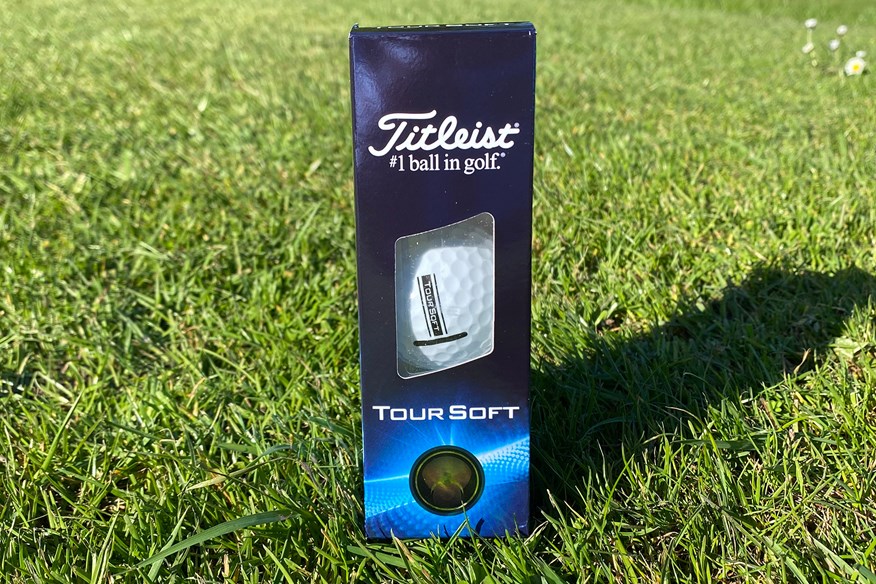
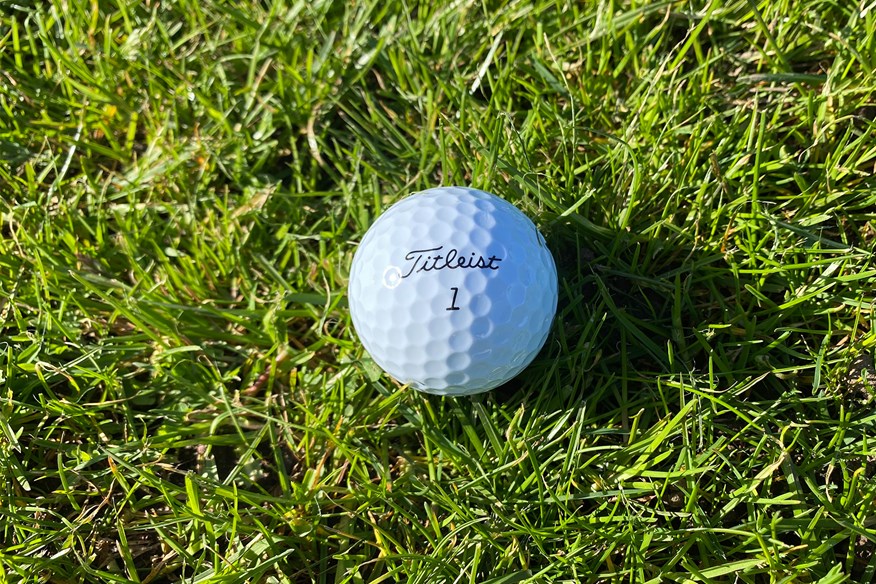
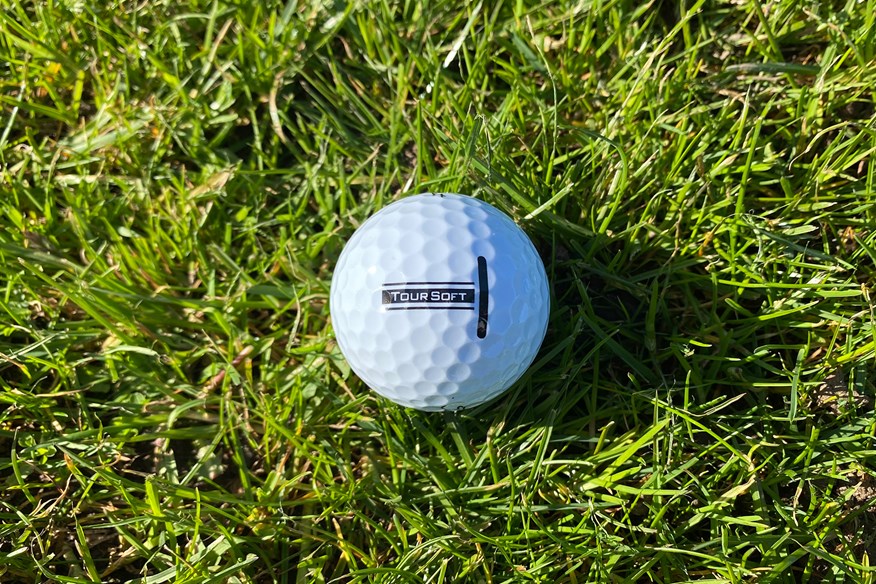
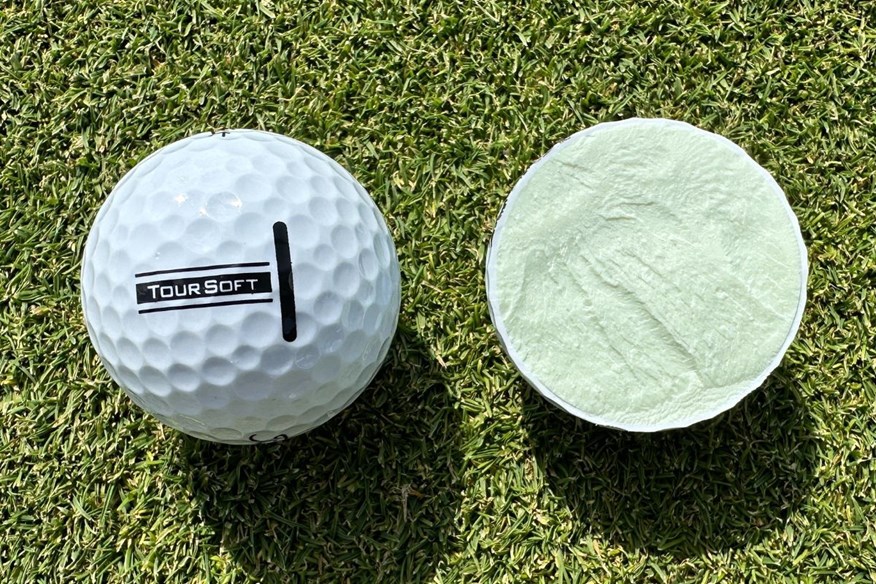
Moving to approach play, this golf ball is the bronze medal winner in this area. Tour Soft produces the second-highest spin (4,774rpm) and second-steepest descent angle (45.2°), but it is the shortest two-piece golf ball (154.2yds).
Off-the-tee performance has this golf ball very closely matched with Titleist's distance two-piece golf ball - Velocity. Granted, Tour Soft is slightly shorter and slower at all three swing speeds. However, giving up less than a yard off the tee at every swing speed is probably worth it for the approach play and short game performance gains. It performed well enough at 114mph to earn the silver medal for tee to green performance.
Tour Soft is a super consistent golf ball in every area. If you're looking for a two-piece golf ball that'll do everything, this golf ball needs to be on your mind.
On-course verdict
This is one of the best-feeling golf balls I've had the pleasure of playing with purely because of how soft it is. I'm not always a fan of soft golf balls, but when they feel as good as the Tour Soft does, there's nothing to dislike.
The feedback and response throughout the bag is exactly what you want with a soft golf ball, but it's most enjoyable when playing around the greens because you can really feel the ball interacting with the grooves.
Around the greens, this ball generates amazing spin and control that's capable of challenging the best high-spin golf balls.
Moving away from the green, I didn't notice anything special about the Tour Soft's performance, but in the same breath, there's nothing to criticise. If anything, this ball performs better than you would expect from a two-piece model.
The Titleist Tour Soft is great value, and if you want a soft-feeling golf ball, this is the model you want.
Pros
- Amazing short-game spin and control
- Incredibly soft and responsive
- Great value
Cons
- Short distance in iron play
| Carry distance (yds) | Driver 114mph - 271.3 | Driver 93mph - 208.5 | Driver 78mph - 160.4 | 7-iron - 154.2 |
| Ball speed (mph) | Driver 114mph - 163.3 | Driver 93mph - 133.4 | Driver 78mph - 112.8 | 7-iron - 108.3 |
| Backspin (rpm) | Driver 114mph - 2,776 | Driver 93mph - 2,731 | Driver 78mph - 2,438 | 7-iron - 4,774 | Pitch - 6,075 |
| Launch angle (°) | Driver 114mph - 11.1 | Driver 93mph - 13 | Driver 78mph - 14 | 7-iron - 21.1 | Pitch - 30.4 |
| Descent angle (°) | Driver 114mph - 37.6 | Driver 93mph - 32.8 | Driver 78mph - 27.3 | 7-iron - 45.2 | Pitch - 35.7 |
| Peak height (yds) | Driver 114mph - 32.6 | Driver 93mph - 22.8 | Driver 78mph - 15.4 | 7-iron - 29.5 | Pitch - 6.8 |
| Compression (psi) | 95 |
- Large, faster core
- Reformulated thin fusablend cover
- Proprietary quadrilateral dipyramid dimple design
- 346 dimples
- 2-Piece construction
- Available in white, green, and yellow
- An alternative model is AIM 360
Bronze medal for short game performance
Best Mizuno golf ball for short-game performance
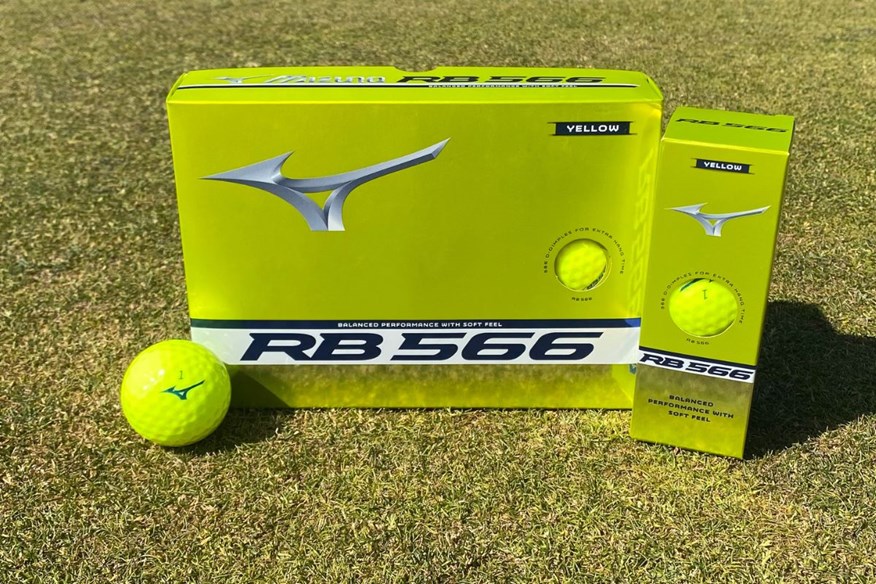

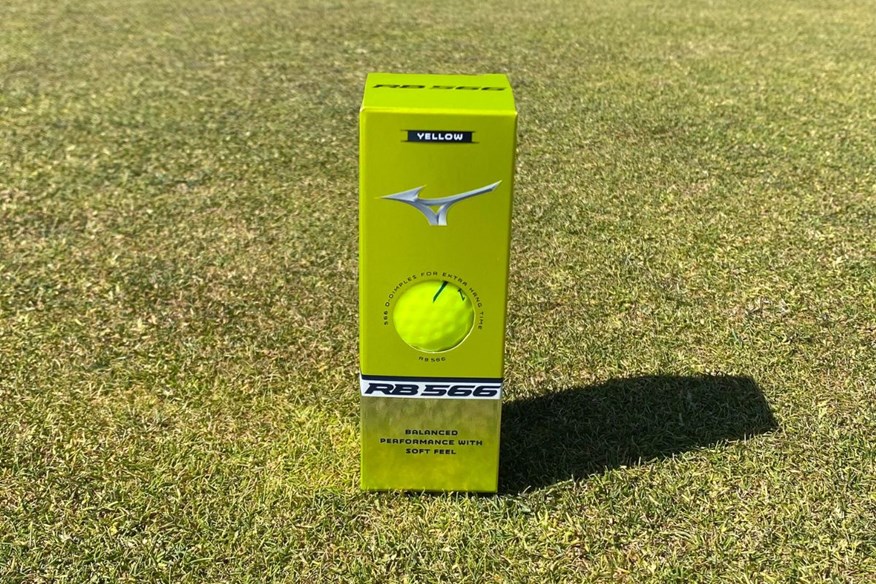
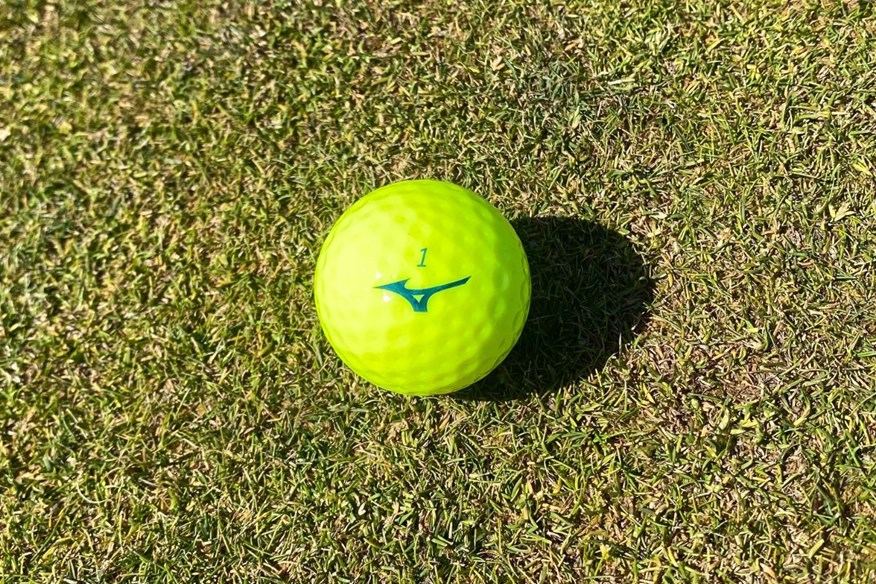
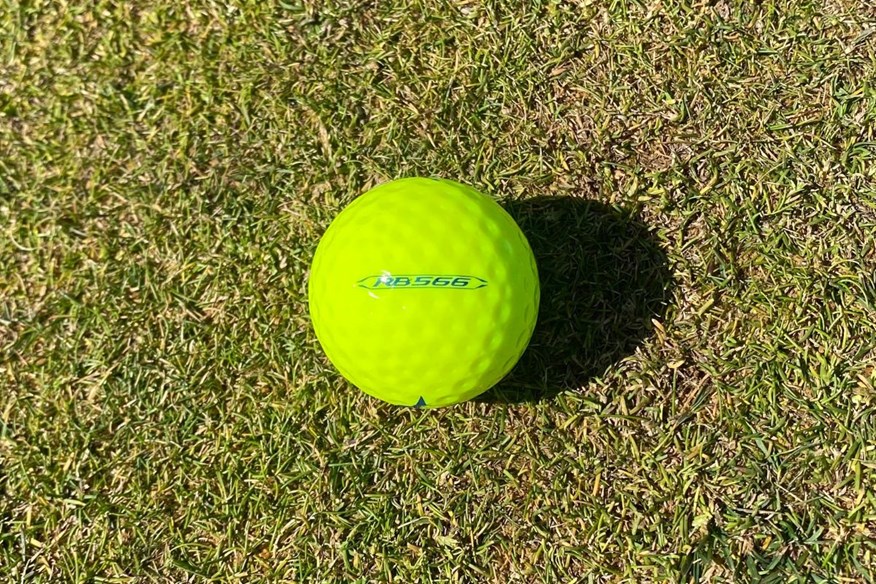
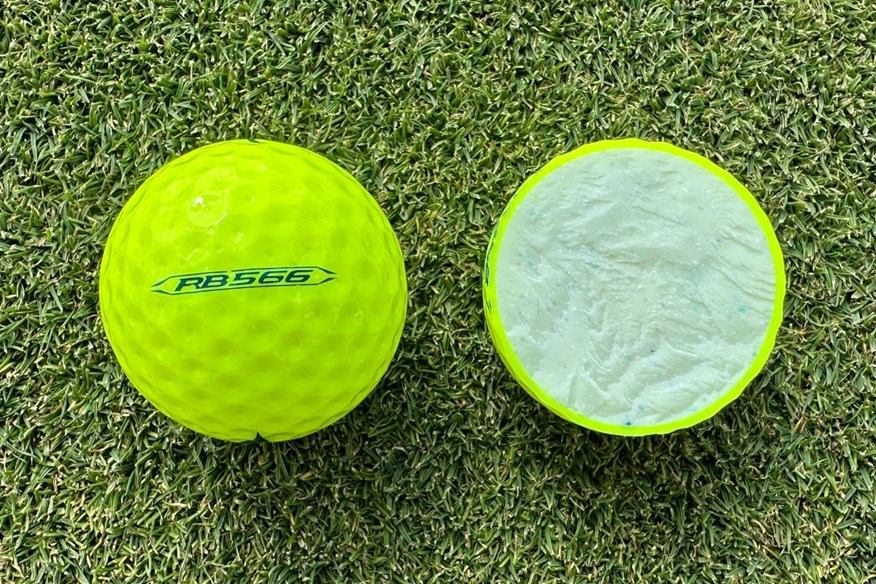
Probably not. However, it is the bronze medal winner for short game performance (5,960rpm). Although the dimple technology isn't specifically designed to generate spin, the RB 566 is the highest-spinning golf ball in approach play (4,947), and it lands with the steepest descent angle (45.3°).
Off the tee is where the RB 566 should make the most impact by reducing spin. It's below the test average for backspin at 93mph and 78mph, and bang on the average at 114mph. This makes it a very average performer for off-the-tee performance.
It might not be what Mizuno are going for, but I'd recommend the RB 566 for anyone looking for a high-spin golf ball. It's definitely a unique golf ball, and for that reason, it is interesting. However, the RB 566 should only tempt you if you're looking to add spin to your game.
On-course verdict
There's something very exciting about a unique golf ball, and so that's exactly how I felt when testing the Mizuno RB 566 with its 566 dimples.
I didn't really know what to expect from this golf ball, but I definitely wasn't expecting it to confuse me as much as it did. I had a lot of enjoyment playing with the RB 566 because I was able to throw the ball at the pin and watch it stop. I wasn't expecting it to spin as much as it did.
This golf ball was high-spinning for me throughout the bag. Off the tee, I was struggling to stop the ball from spinning. I definitely had contrasting emotions off the tee to approaching the green.
The feel is soft, and it's not the most responsive, which I'm not massively keen on.
Overall, I feel as though this is a high-spinning golf ball, almost to its detriment because it balloons off the tee. However, a different golfer might think otherwise, especially if you have a slower swing speed.
Pros
- Great short-game spin and control
- Good value
- Solid performance from tee to green
Cons
- Struggled to reduce spin off the tee on the course
| Carry distance (yds) | Driver 114mph - 268.6 | Driver 93mph - 207.9 | Driver 78mph - 160.2 | 7-iron - 154.8 |
| Ball speed (mph) | Driver 114mph - 161.9 | Driver 93mph - 133.3 | Driver 78mph - 112.6 | 7-iron - 109.1 |
| Backspin (rpm) | Driver 114mph - 2,719 | Driver 93mph - 2,553 | Driver 78mph - 2,381 | 7-iron - 4,947 | Pitch - 5,960 |
| Launch angle (°) | Driver 114mph - 11.1 | Driver 93mph - 13 | Driver 78mph - 14.1 | 7-iron - 20.7 | Pitch - 30.6 |
| Descent angle (°) | Driver 114mph - 36.9 | Driver 93mph - 31.6 | Driver 78mph - 27.2 | 7-iron - 45.3 | Pitch - 36 |
| Peak height (yds) | Driver 114mph - 31.5 | Driver 93mph - 21.9 | Driver 78mph - 15.4 | 7-iron - 29.6 | Pitch - 7 |
| Compression (psi) | 92 |
- Large soft compression core
- Micro dimple design
- Ionomer cover
- 566 dimples
- 2-Piece construction
- Available in white, yellow, and orange
Titleist's best 2-piece golf ball for off-the-tee performance
Best 2-piece Titleist golf ball for distance
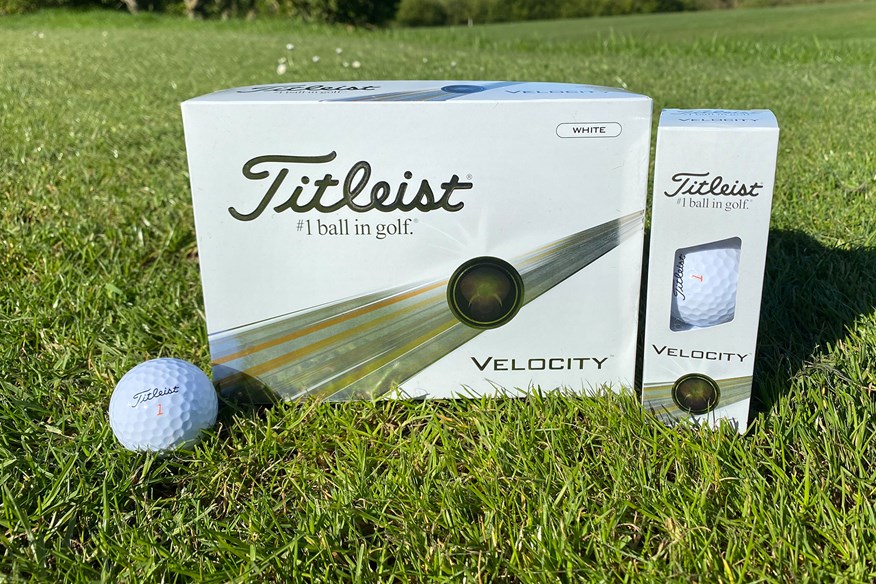


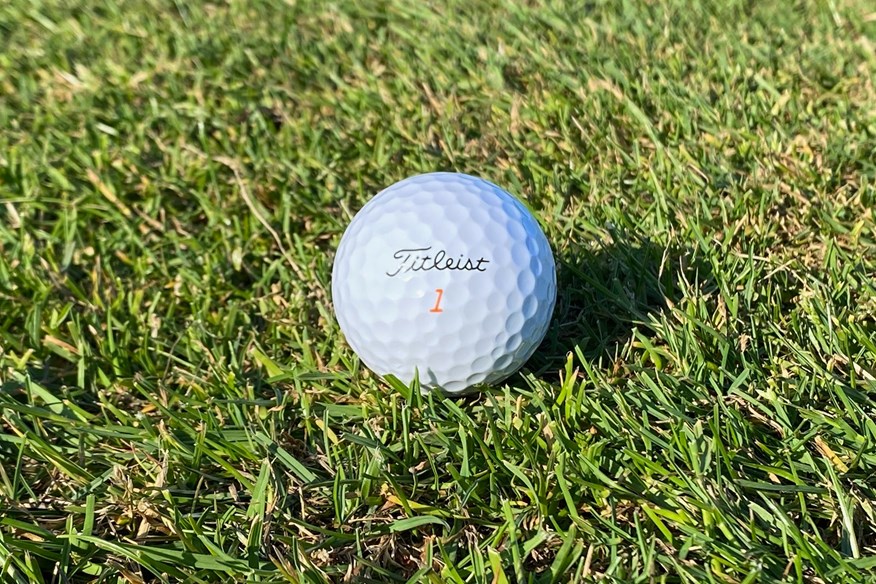
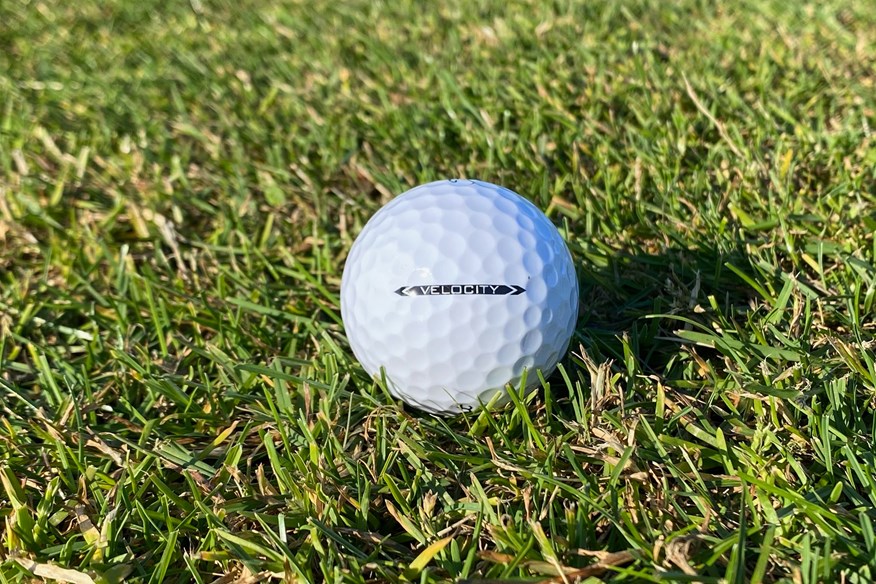
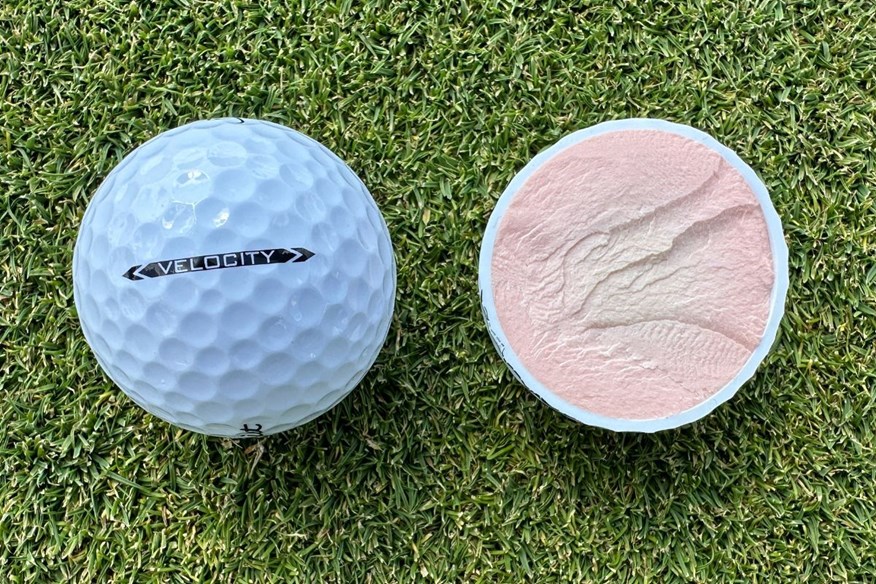
Across all three swing speeds, the Velocity is the fourth-best two-piece golf ball for overall performance off the tee. We fully expected the Velocity to perform well off the tee because it's a distance golf ball, but if we're being honest, we didn't expect it to outperform the four-piece Pro V1x.
The Velocity delivered its best performance at 114mph. At the quickest swing speed we tested, the Velocity produced 271.5 carry yards and 163.2mph ball speed.
In approach play, the Velocity is the lowest-spinning golf ball (3,081rpm) and longest (160.6yds) out of all 62 models we tested. That's potentially expected given it's a distance golf ball.
However, the Velocity's short game performance is much better than we expected. This golf ball is the fifth-highest-spinning two-piece model, with 5,789rpm.
The Titleist Velocity delivers competitive distance and overall performance for all golfers. You're guaranteed distance, but you're also getting a golf ball that can perform around the greens.
On-course verdict
I'm quite the fan of Velocity. In the right hands, this can be a very strong performing golf ball. However, in the wrong hands, it can majorly hinder your game.
For my game, off the tee, Velocity performs very closely to the Pro V1x, but as I approach the green, distance begins to outweigh spin, which isn't something I require.
If you're a golfer who's looking to reduce spin and gain distance, Velocity has to be on your radar, especially at its price.
This is a two-piece golf ball, but I honestly think it's hard to tell. If I weren't able to distinguish this golf ball in Titleist's line-up by its orange numbers, I think you could trick me into thinking it's the Pro V1x based on its long game performance. Take it to the short-game area, and it's very easy to see this is a distance golf ball.
Pros
- Very competitive distance
- Great value
- Good feel and feedback
Cons
- Low short-game spin and control
| Carry distance (yds) | Driver 114mph - 271.5 | Driver 93mph - 208.9 | Driver 78mph - 160.6 | 7-iron - 160.6 |
| Ball speed (mph) | Driver 114mph - 163.2 | Driver 93mph - 133.5 | Driver 78mph - 112.9 | 7-iron - 108.7 |
| Backspin (rpm) | Driver 114mph - 2,677 | Driver 93mph - 2,467 | Driver 78mph - 2,261 | 7-iron - 3,801 | Pitch - 5,789 |
| Launch angle (°) | Driver 114mph - 11.1 | Driver 93mph - 13.2 | Driver 78mph - 14.2 | 7-iron - 21.9 | Pitch - 31.2 |
| Descent angle (°) | Driver 114mph - 36.9 | Driver 93mph - 31.5 | Driver 78mph - 26.8 | 7-iron - 44 | Pitch - 36.7 |
| Peak height (yds) | Driver 114mph - 31.8 | Driver 93mph - 22.2 | Driver 78mph - 15.3 | 7-iron - 29.6 | Pitch - 7.1 |
| Compression (psi) | 101 |
- High-speed LSX core
- Fast NAZ+ cover
- Spherically-tiled octahedral dimple pattern
- 350 dimples
- 2-Piece construction
- Available in white, green, and orange
- Best golf balls for beginners and high-handicappers
- Best two-piece golf balls
- Two-piece robot test data
Best Golf Balls 2025: Robot test data
Click here to see how all 62 golf balls performed in our 2025 robot test.
You can also jump to some of our other test categories here:
- Best golf balls for fast swing speeds
- Best golf balls for average swing speeds
- Best golf balls for slow swing speeds
- Best golf balls for distance
- Best golf balls for approach play
- Best golf balls for short game
- Best golf balls for mid-handicaps
- Best golf balls for beginners
- Most consistent golf balls
Best Golf Balls 2025: Buying Guide
Determining the best golf balls for each individual isn’t entirely straightforward. Almost every brand manufacturing golf balls offers a solid option for you to play with. For instance, if you want a ball that travels far off the tee and zips back on the greens, you can play with a whole host of golf balls.
While you may develop a preference for one specific golf ball, there really isn’t a one-size-fits-all model (for your game). Neither is there a wide range of golf balls that’ll work for you. You might think one of the best distance golf balls works just as well as one of the best premium golf balls, but this is rarely the case.
Certain golfers have particular needs and requirements of their golf balls. In that case, if you want distance above all else, then you’ll know exactly what category of golf balls to look at. However, there are just as many golfers who don’t know exactly what they want. Read through our buying guide and hopefully, you’ll have some clarity as to which category of golf balls will work best for you.
Ability
Regardless of your ability, you will benefit from playing with one of the best premium golf balls because of the technology packed within. However, that’s not to say if you’re brand new to the game you should be spending around £40 (or more) on a dozen golf balls – but you can if you want to.
Better and more seasoned golfers arguably should be playing with the best balls they can afford to be playing with because it will 100 per cent improve your game from tee to green. The flip side to that is, if you’re new to the game or play infrequently with your buddies, work colleagues, or whoever, then you might not have the game to warrant playing with premium golf balls for whatever reason. At that point, playing with distance golf balls or cheap golf balls is perfectly understandable.
That being said, switching to one of the best value golf balls could help you play better golf and find more enjoyment – even if you do just play for fun.
Budget
Tied closely with ability is budget. Players who are new to the game or don’t get out often are more likely to budget when it comes to purchasing golf balls. Whereas more frequent and skilled golfers are less likely to budget and opt for more expensive golf balls. That’s not to say every golfer meeting one of those credentials behaves this way.
While I’ve probably been alive less number of years than some of you have played golf, I’ve had the pleasure of working in the golf industry for the entirety of my working life. During that time, I’ve seen golfers of all abilities splashing the cash on the latest golf clubs in the hope of improving their game and being thrifty when it comes to spending on golf balls – I’ve been a culprit of this myself in my early golfing days!
It’s worth considering whether your money is better spent on premium golf balls to improve your game – I would say it is. Also, if you’re staring down the golf balls and locked in on a dozen Top-Flites at £15, before heading to the till, take a look around and see if stretching your budget even by £5 or £10 will enable you to pick a higher quality golf ball and assist you in scoring lower.
If there’s ever a piece of golf equipment you shouldn’t be frugal with, it’s golf balls!
Feel
The vast majority of golfers look for soft-feeling golf balls, which opens the floodgates to copious amounts of options. Even golf balls labelled as being firm, such as the Wilson Staff Model X, is still soft compared to the rocks that used to exist. Many golfers enjoy soft-feeling golf balls because they deliver a sweet sensation off of every club in the bag – except if you skull one.
I enjoy playing with firmer golf balls like the Wilson Staff Model X and Titleist Pro V1x because I feel as though they provide more feedback and a stronger response. However, feel is completely personal, and like I say, it’s tough to find a super-firm golf ball because most are made to be soft to please the needs of more golfers.
Performance
Every golf ball comes fitted with specific technology in order to perform in a particular manner – this is often outlined on the box. For instance, it might inform you that a certain golf ball is designed to travel high and far off the tee with low spin but grab and spin on the greens. Another golf ball might say it produces low flight off the tee and mid-spin in the short game.
You should always take this information with a pinch of salt. No manufacturer will ever put on the box that their ball doesn’t travel far off the tee and doesn’t spin on the greens, so you need to decipher the jargon to figure out which balls will do what they say, and which balls won’t.
Thankfully, we’ve carried out a mammoth robot test to help you see how well a ball stacks up to the claims made by the manufacturer.
Premium golf balls, along with golf balls for mid-handicappers, deliver long game distance with low spin and high short-game spin and control. Distance golf balls and many of the best golf balls for beginners and high-handicappers perform extremely well off the tee with good distance and low spin; however, iron spin and wedge spin lowers, and it becomes more difficult to hit and hold greens.
Spin
Ideally, every golf ball would produce low-spin off the tee and high-spin in your approach game. However, not all golf balls are designed that way. The majority of golf balls are designed to produce low driver spin and generate distance off the tee, but not all golf balls are manufactured to generate high spin from irons and wedges.
Price generally correlates with short-game spin. Budget golf balls will generate less short-game spin than expensive golf balls, but there might not be much difference in your long-game spin. During a ball fitting at Titleist, I discovered that a Titleist Pro V1x and Titleist Velocity performed very similarly with my driver, but with a 7-iron, the spin dropped slightly with the Velocity, and then with a 60° wedge, the spin fell massively with the Velocity.
Spin in the golf ball comes from the combination of layers within the golf ball reacting with one another, hence why more expensive golf balls spin more in approach play because they consist of more layers and the technology is more refined. Cheaper golf balls tend to consist of two layers: the cover and core. Therefore, they don’t have the number of layers required to produce astronomical spin when attacking pins.
Another factor that helps to enhance spin is the cover material. Golf balls with a urethane cover tend to spin more (but not always) because it’s a more flexible material compared to ionomer or surlyn, which doesn’t create as much friction with the clubface as urethane does. Once again, it’s more expensive golf balls that feature urethane covers to generate higher spin on approach shots.
Spin is massively important because it can either make you hit and hold a green or hit and fly over the green. The best golf balls for spin are by far premium golf balls, closely followed by golf balls for mid-handicappers, because they feature much of the technology found in Tour-standard golf balls. If you feel as though you need high levels of spin when attacking greens, have a look at the best high-spin golf balls. Alternatively, if you feel as though spin is hurting your game, check out the best low-spin golf balls.
Distance
I would honestly say that distance is the last factor to consider when purchasing golf balls. The best way to figure out which golf balls are best for you is by working your way back from the green to the tee box. The best way of doing this is with a launch monitor to see your numbers, but if you don’t have access to one, you can do it with your eye very easily.
Start by hitting wedge shots into the green and see which balls are performing best with spin, then work your way back to 7-iron distance and look for the same numbers with slightly more of an eye on carry distance. You should have whittled it down to one or two golf balls, hit them off the tee, and look at which performs the best.
If you do it this way, I guarantee a premium golf ball will always come out on top if you’re testing one. However, if you’re doing this with cheaper golf balls, you’ll still see differences between the golf balls, and you will find one that performs well for you, or you might have the luxury of deciding between a handful.
By testing golf balls this way, you’ll end up with the ball that performs best in the short game, which is where you score. Distance is important, but there are other ways of improving distance without sacrificing spin in a golf ball.
Construction
The number of layers that make up the construction of a golf ball, and how those layers interact, will influence performance, spin, and distance. The makeup of a golf ball also coincides with budget; the cheapest golf balls sport a two-piece construction, and the most expensive are generally four or five-piece.
To give you a better understanding of the differences between the constructions, here is an overview of what to expect based on how many layers a golf ball has:
Two-piece balls: These are generally the most affordable, with a large core and durable ionomer/Surlyn cover – great for durability, distance, and value (especially if you lose balls). There are softer-feel and max-distance variants; our testing helps you weigh the trade-offs vs. premium urethane options.
Three-piece balls: These make up 47% of the models in this year’s test, and add a mantle to fine-tune launch, spin, and feel. Tour-level versions use urethane covers for wedge spin and greenside control; club-golfer versions often lower compression for feel/playability. Modern designs blur old distinctions – the Titleist Pro V1 is now lower-flying/spinning than some four-piece counterparts.
Four-piece & five-piece balls: These are no longer just “firmer X = low spin.” For instance, the latest Pro V1x (four-piece) can be higher-spinning/higher-flying than the three-piece Pro V1. TaylorMade remains the only major brand with five-piece balls – TP5 and TP5x – using three mantles to tune driver spin/launch and short-game spin. Typically, TP5x is faster, longer, and higher-launching; TP5 is softer with more wedge spin and shot-shaping versatility.
Colour
The most common golf ball colour is white; however, there are plenty of other colours and designs to choose from. More vibrant colours, such as yellow, orange, or green, are all easy to pick up, and they help some people with visibility – hence why they make for the best winter golf balls.
Other ways of adding colour to the golf ball can be by design, whether it be a splash of colour seen on Vice golf balls or an alignment design which also helps with visibility, such as TaylorMade’s Pix golf balls or Callaway’s Triple Track golf balls.
If you’ve only ever played with white golf balls, it might be worth trying a more colourful golf ball, especially if you’re always the one asking your playing partners, “Where did that one go?”.
Alignment
More and more golf balls are being released with enhanced alignment, and even standard golf balls have a more prominent alignment stamp now than they’ve ever had. The majority of brands now offer golf balls with enhanced alignment aids. The enhanced alignment aids can be extremely useful for putting and even lining up shots on the tee. Another plus of alignment golf balls is the alignment serves as a tool for finding your golf ball either in the air or among the trees.
